The Monaco Formula 1 Grand Prix and Brigitte Bardot were the absolute protagonists of the fifties, sixties and seventies of the Côte d'Azur, which was transformed into the coolest place in the world. Already in the 80s, the magical moment slowly began to set and that fantastic world ended up remaining an indelible memory for those who have lived it in person and a distant dream for those who have simply heard of it. Nothing more beautiful than those years can be imagined. Formula 1 in its most charming and authentic setting. A world, I believe, many of us would like to return to.
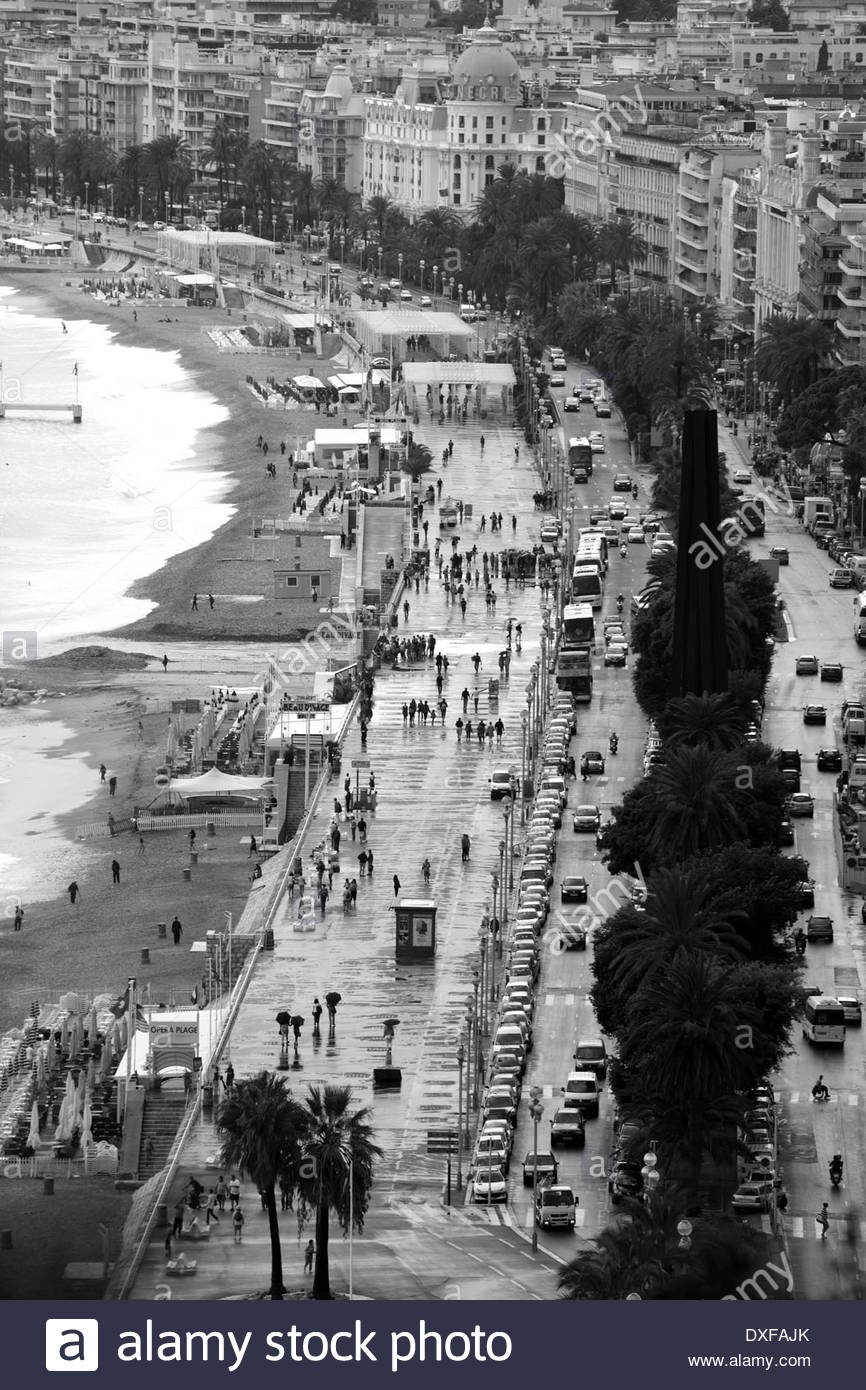
Top view above the Promenade des Anglais in Nice city, France, on 26 September 2012. By Alarm Stock Photo.
The French Riviera, known in French as the Côte d'Azur, is the Mediterranean coastline of the southeast corner of France.
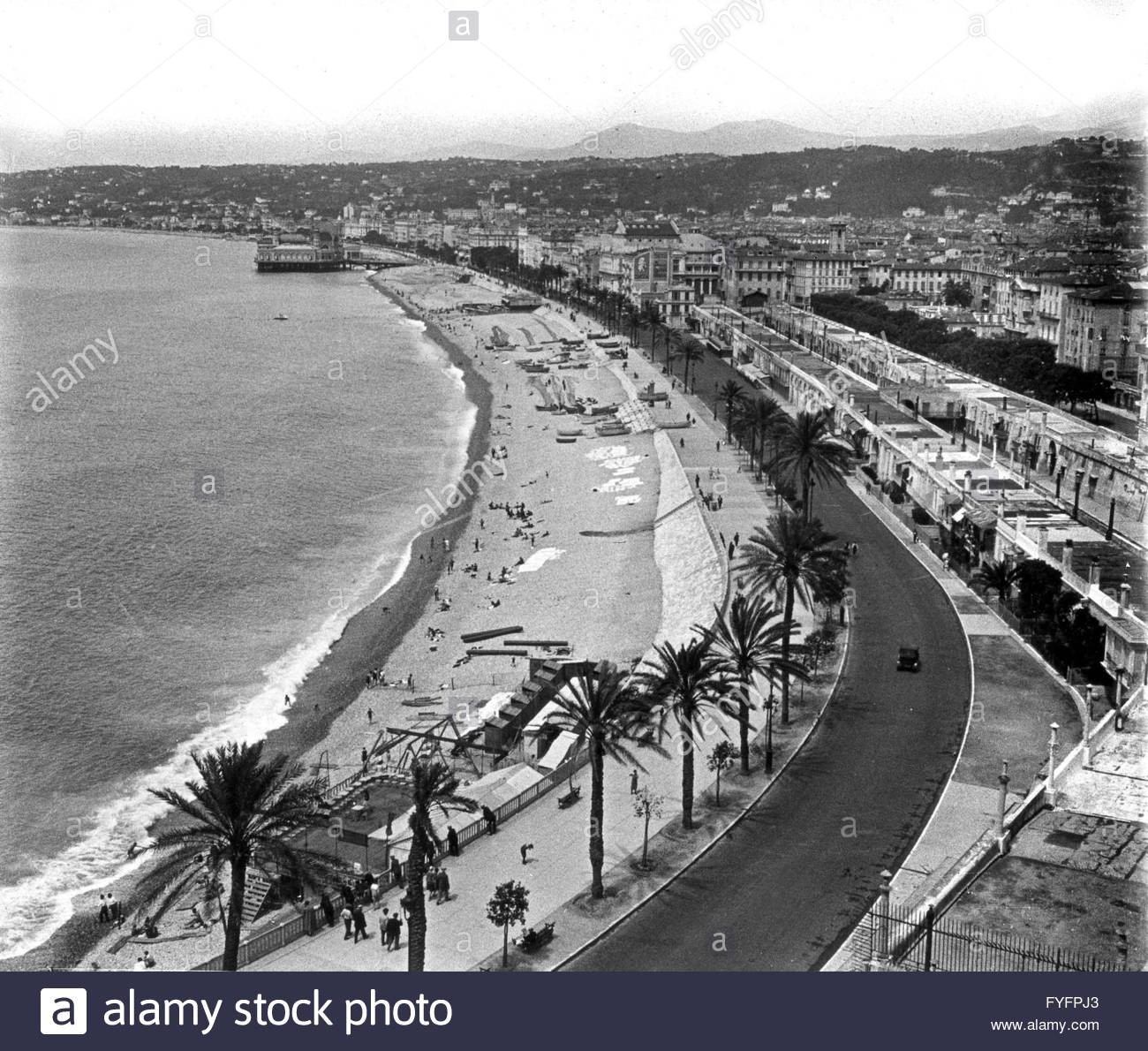
Nice, France, on 25 July 1927.
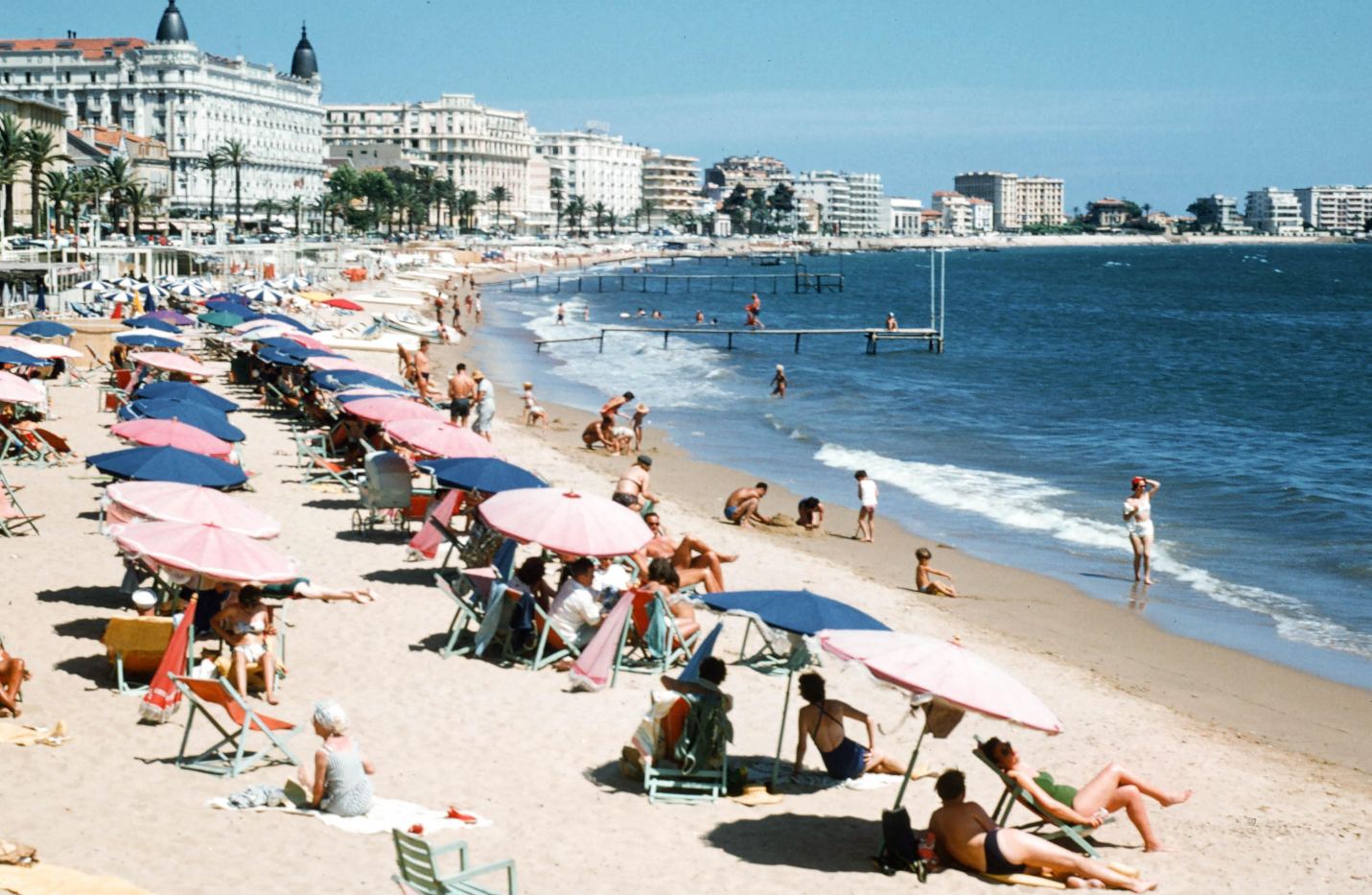
1950s vintage French Riviera beach photograph.
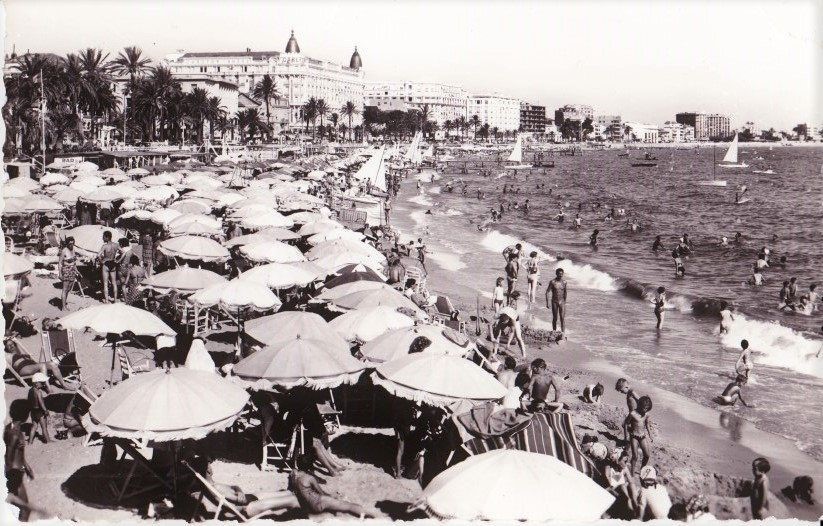
Cannes beach in the 60’s.
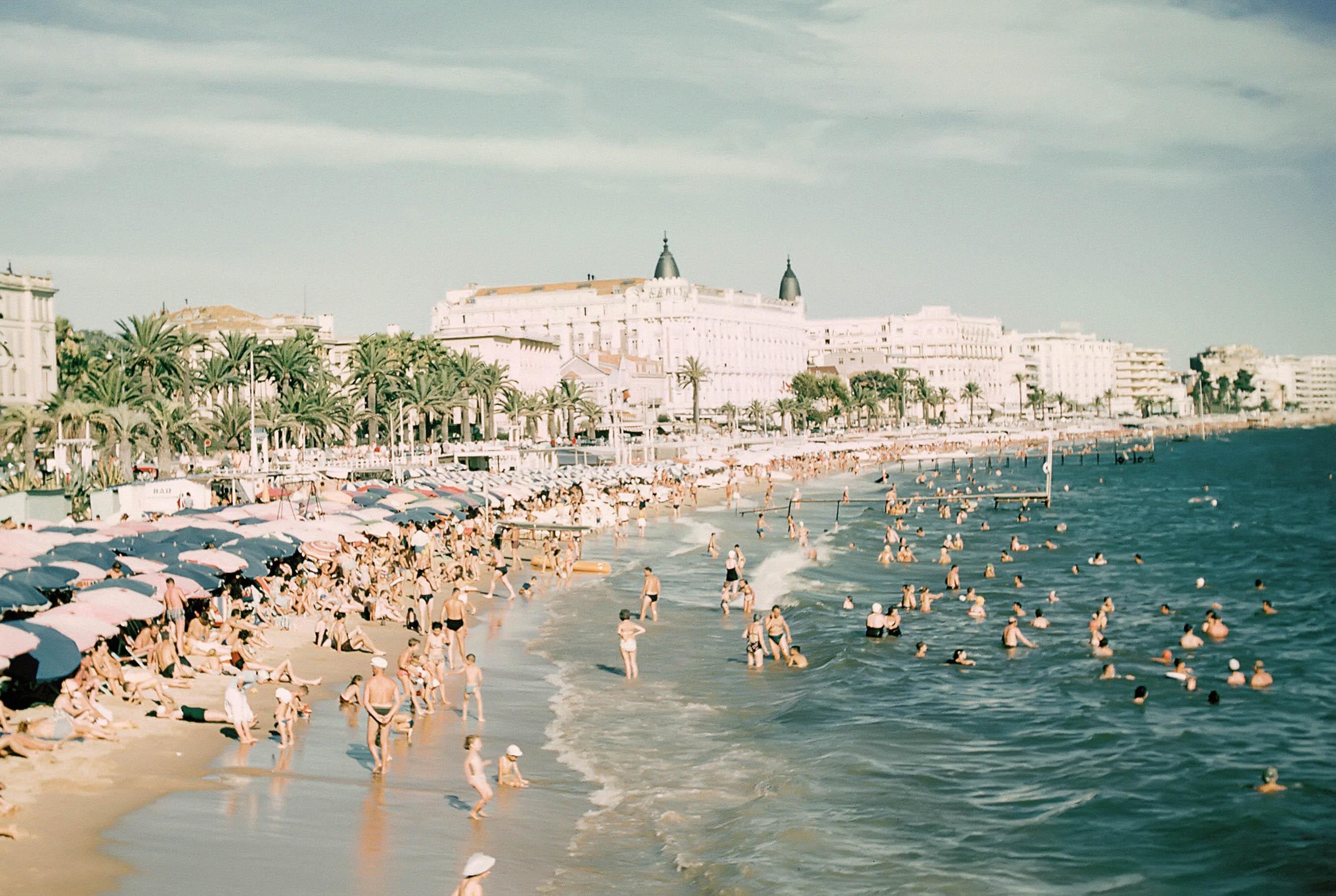
1960s vintage French Riviera beach photograph.
The release of the French film “Et Dieu… créa la femme” (And God created woman) in November 1956 was a major event for the Riviera, making Brigitte Bardot a super stardom and transforming the rustic fishing village into one of the hottest destinations in the South of France, particularly for the new class of wealthy international travellers called the jet set.
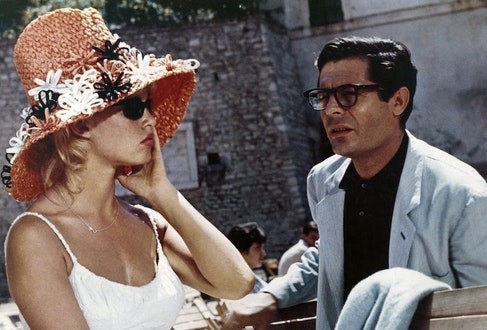
The French film star was a relative unknown when she began filming on St Tropez’s idyllic waterfront with her then husband director Roger Vadim. It was not the first time she had visited the seaside hamlet, however.
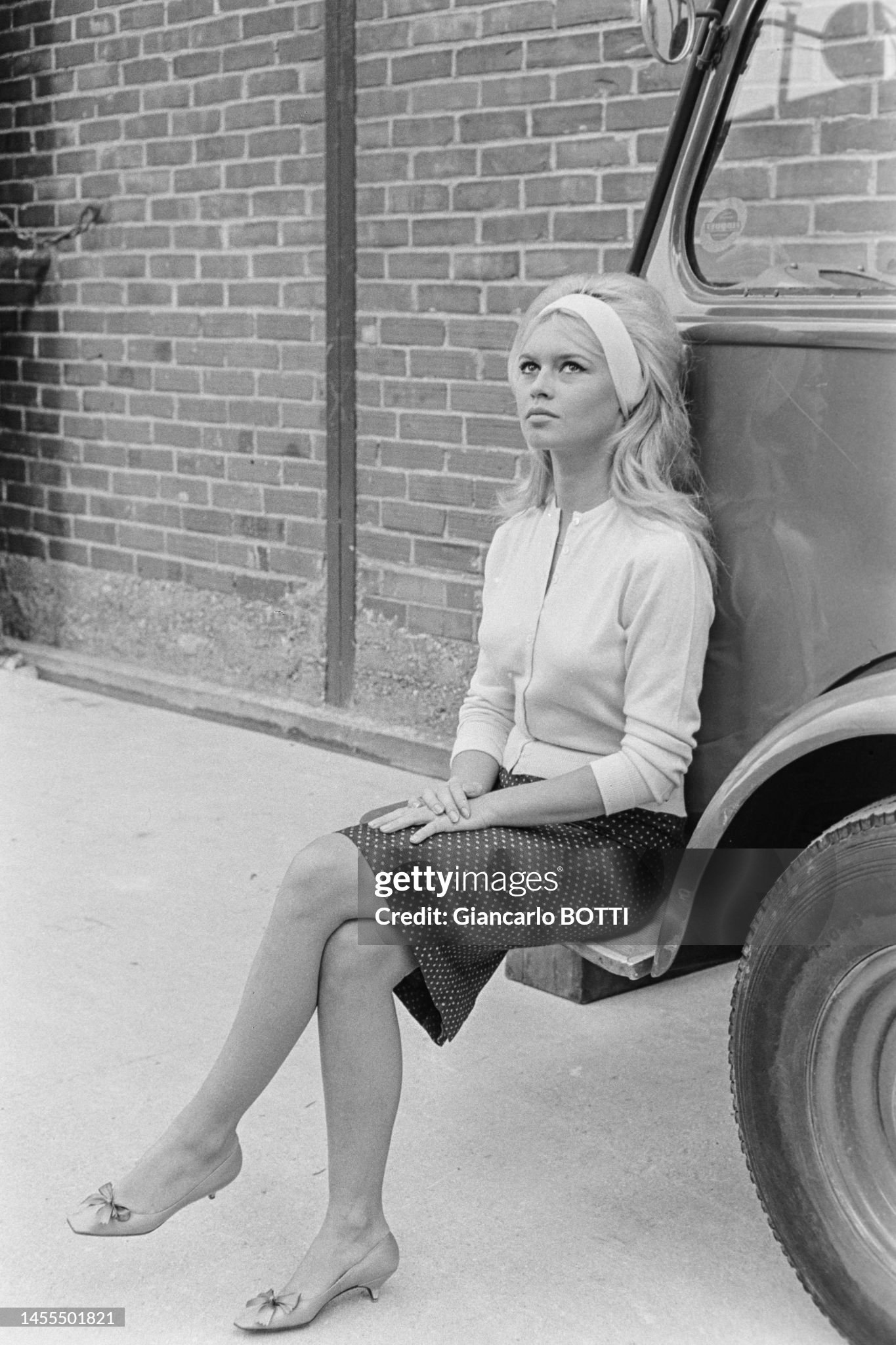
Brigitte Bardot during the filming of the film 'Private life' in Saint-Tropez in 1961. Photo by Giancarlo Botti / Gamma-Rapho via Getty Images.
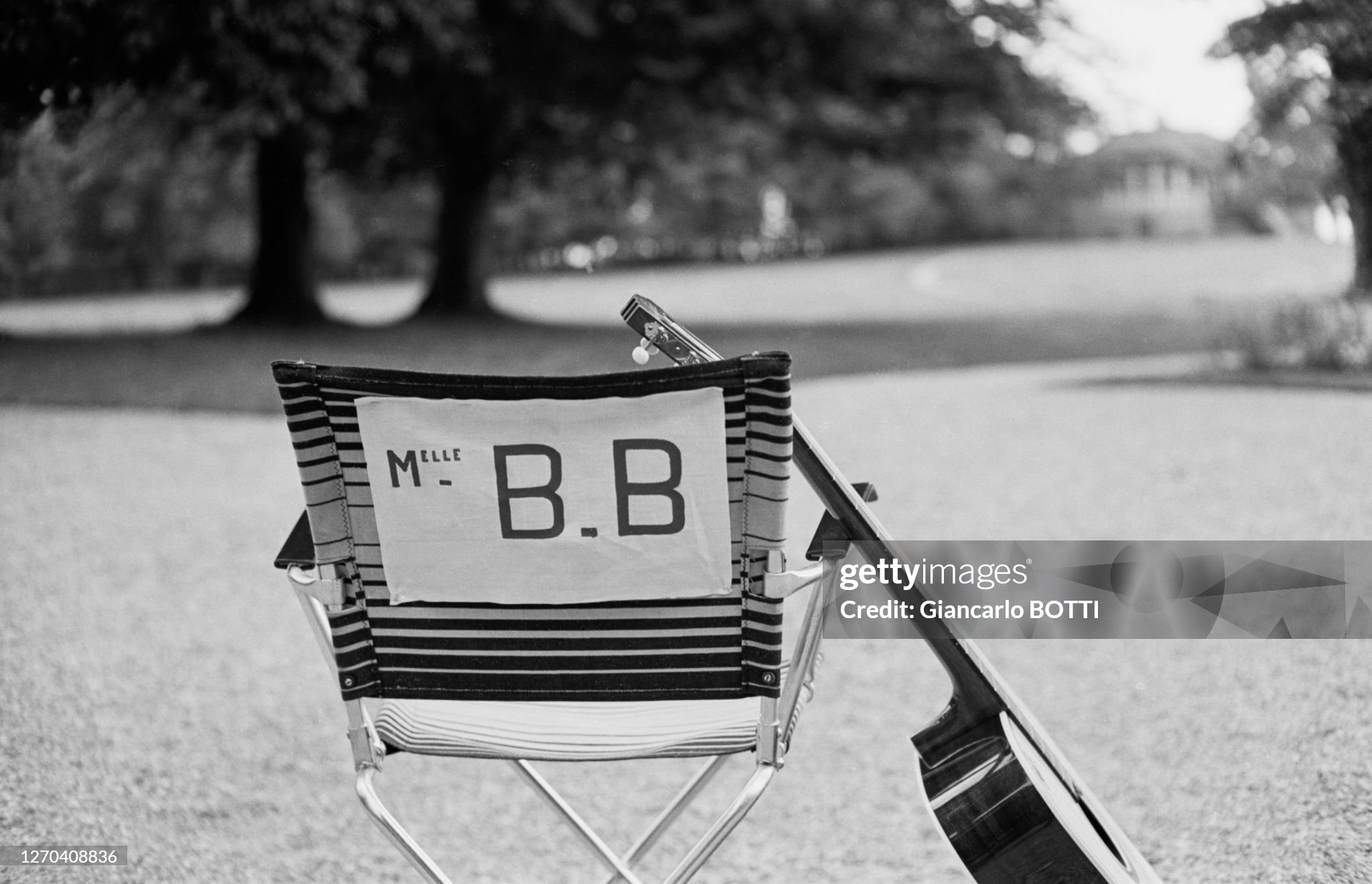
Brigitte Bardot during the filming of the film 'Private life' in Saint-Tropez in 1961. Photo by Giancarlo Botti / Gamma-Rapho via Getty Images.

Brigitte Bardot during the filming of the film 'Private life' in Saint-Tropez in 1961. Photo by Giancarlo Botti / Gamma-Rapho via Getty Images.
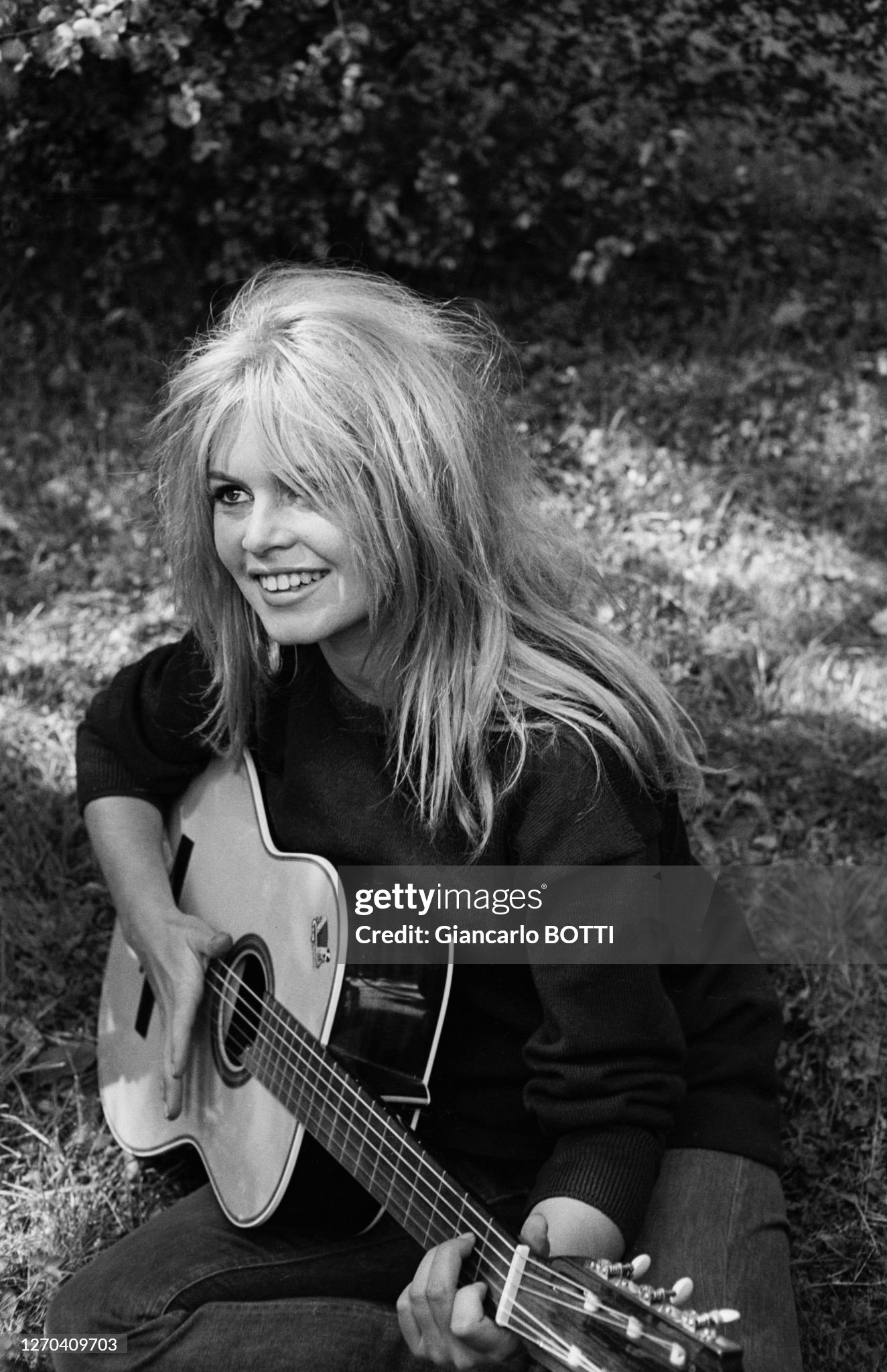
Brigitte Bardot during the filming of the film 'Private life' in Saint-Tropez in 1961. Photo by Giancarlo Botti / Gamma-Rapho via Getty Images.
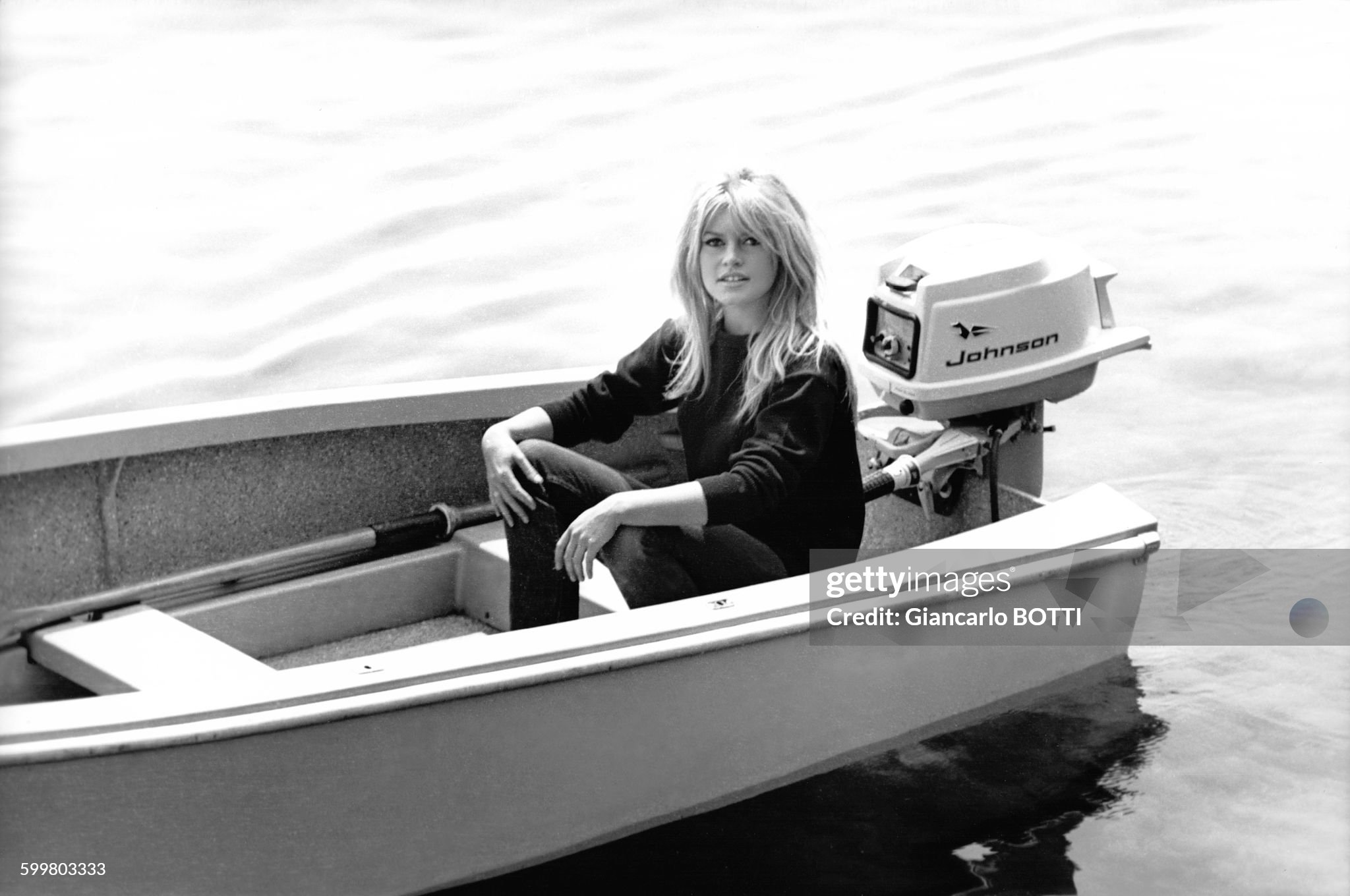
Brigitte Bardot sitting in a boat in 1962 in Saint-Tropez, France. Photo by Giancarlo Botti / Gamma-Rapho via Getty Images.
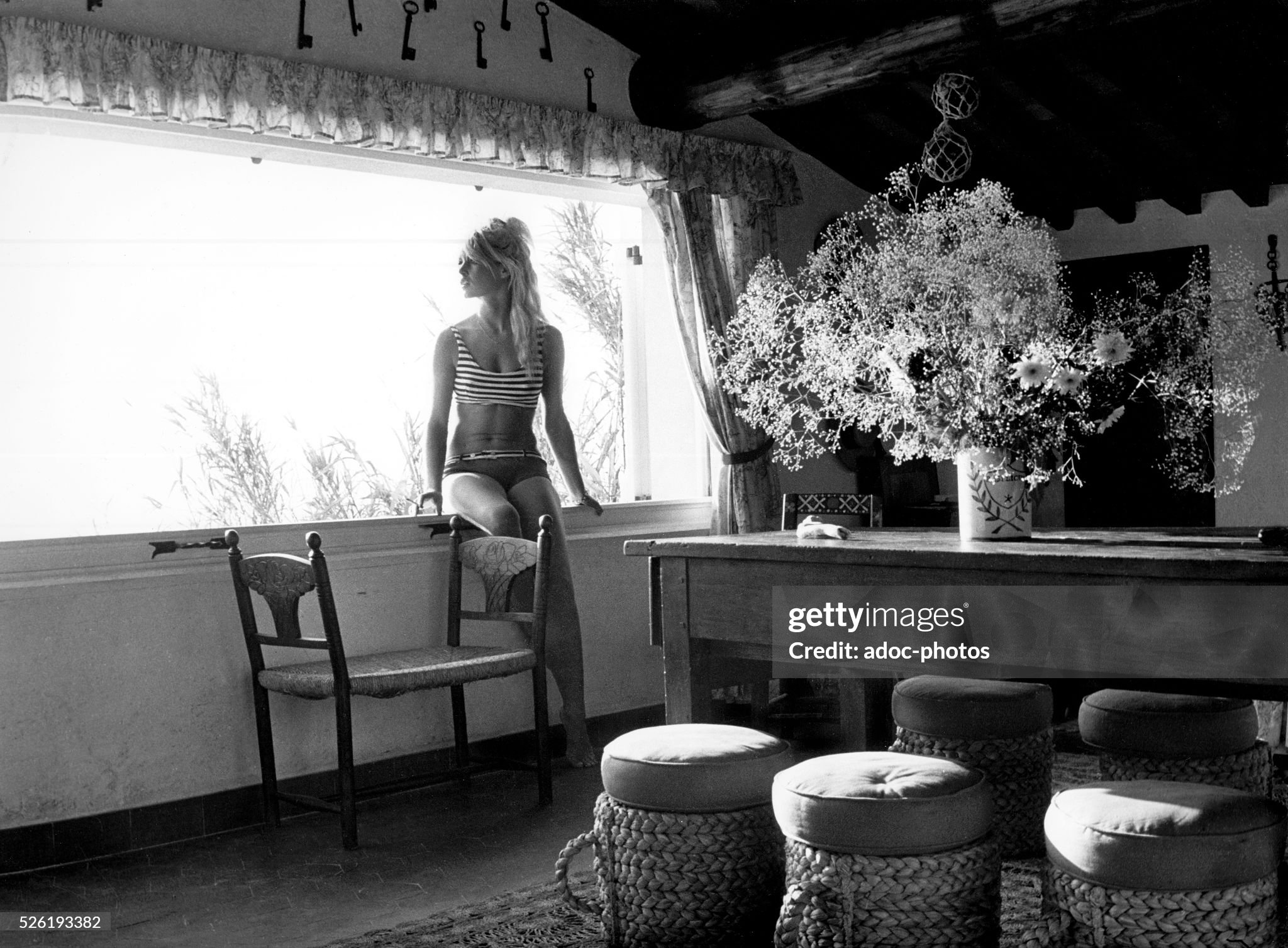
Brigitte Bardot in her villa of La Madrague in Saint-Tropez in 1965. Photo by Adoc-photos / Corbis via Getty Images.
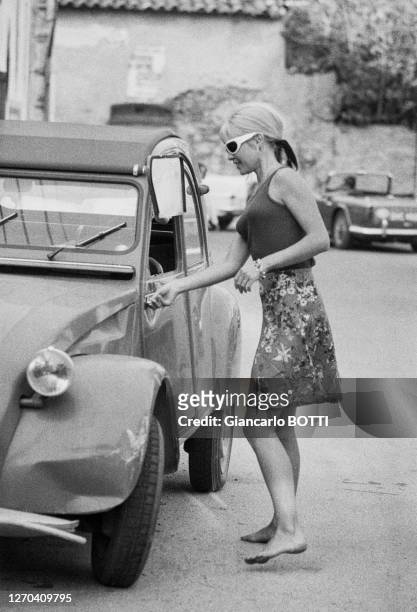
Brigitte Bardot gets into her 2CV Citroën in Saint-Tropez in August 1965. Photo by Giancarlo Botti / Gamma-Rapho via Getty Images.
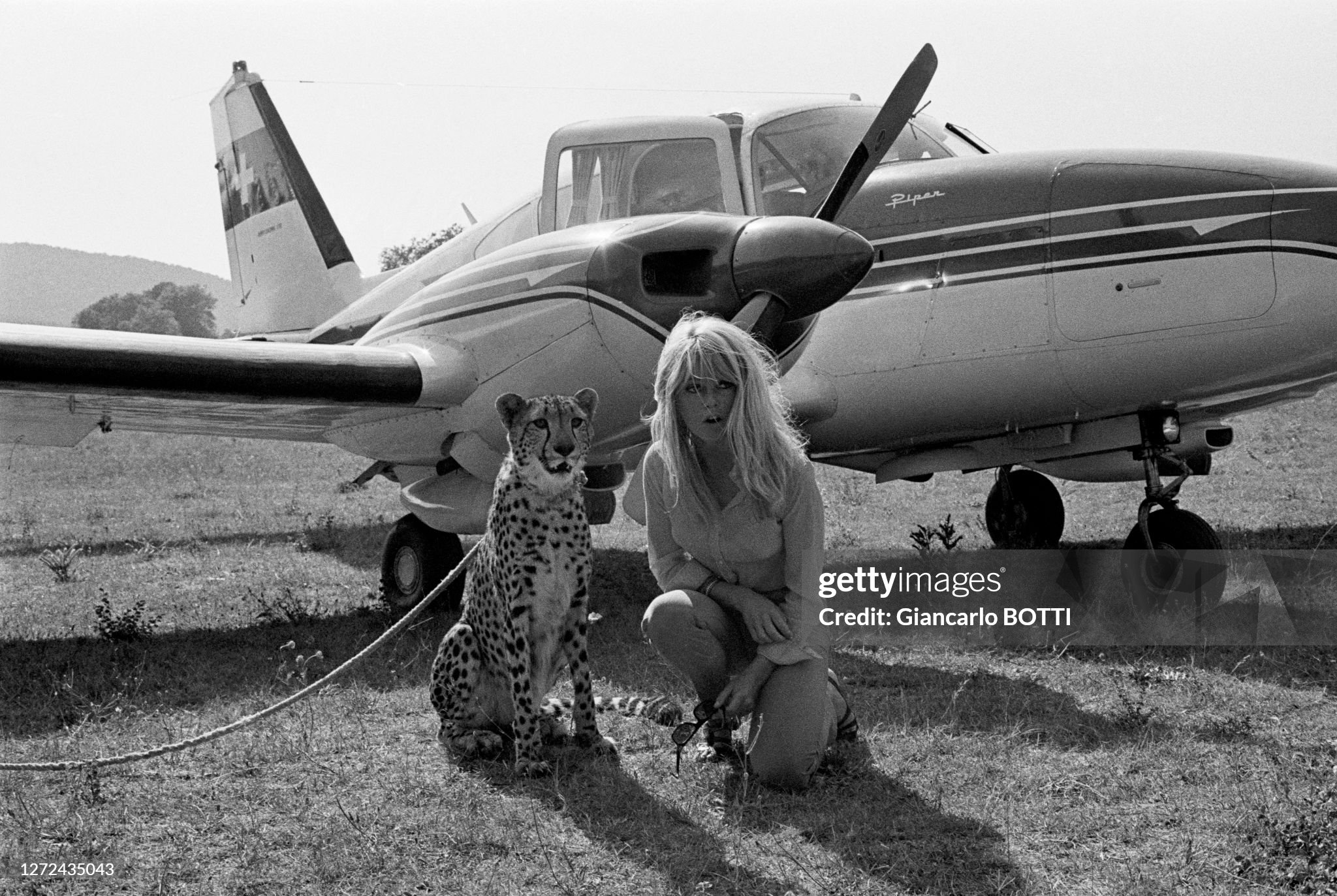
Brigitte Bardot with a cheetah next to a Piper aircraft in August 1966. Photo by Giancarlo Botti / Gamma-Rapho via Getty Images.
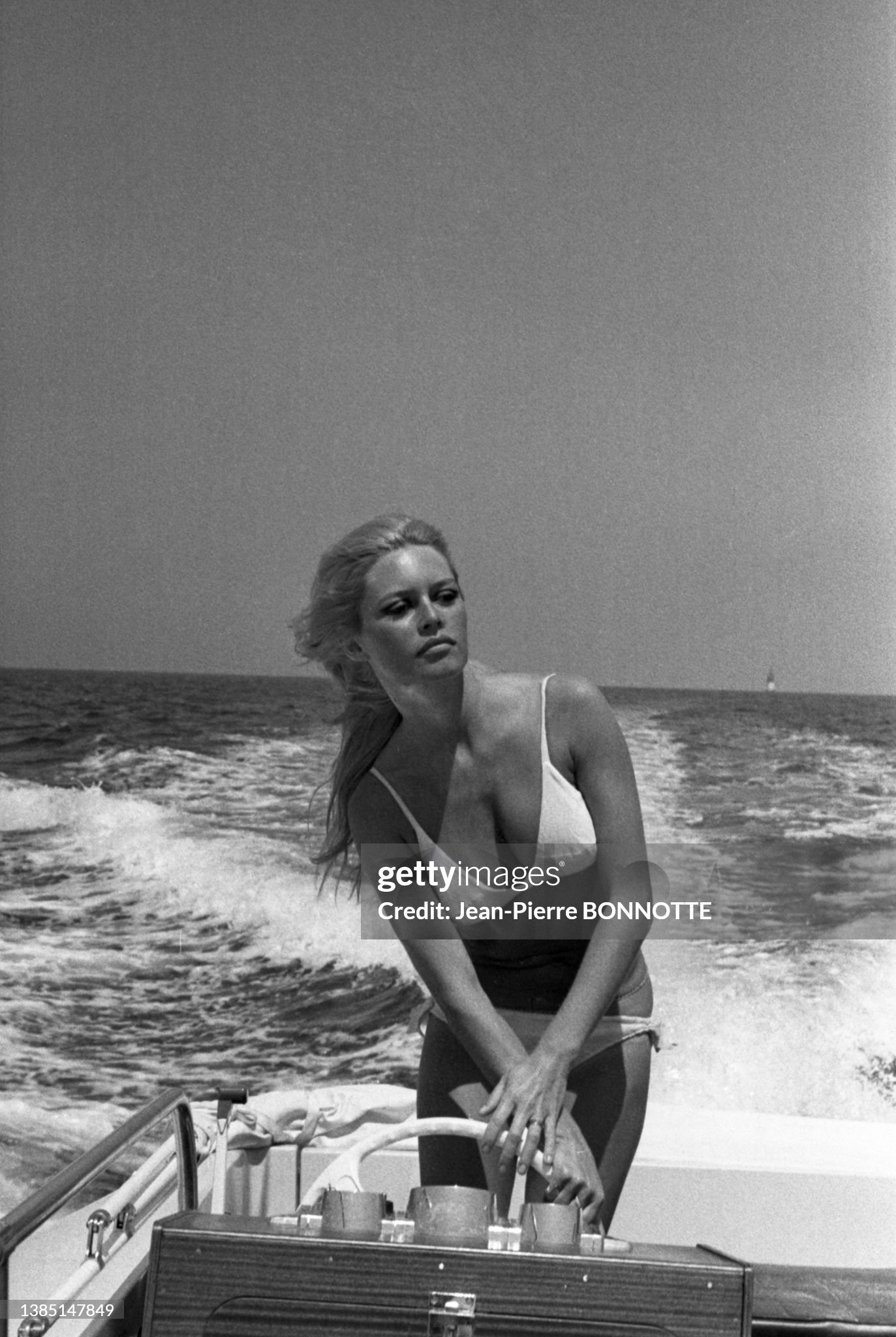
Brigitte Bardot at the controls of her speedboat in the bay of Saint-Tropez in July 1967. Photo by Jean-Pierre Bonnotte / Gamma-Rapho via Getty Images.
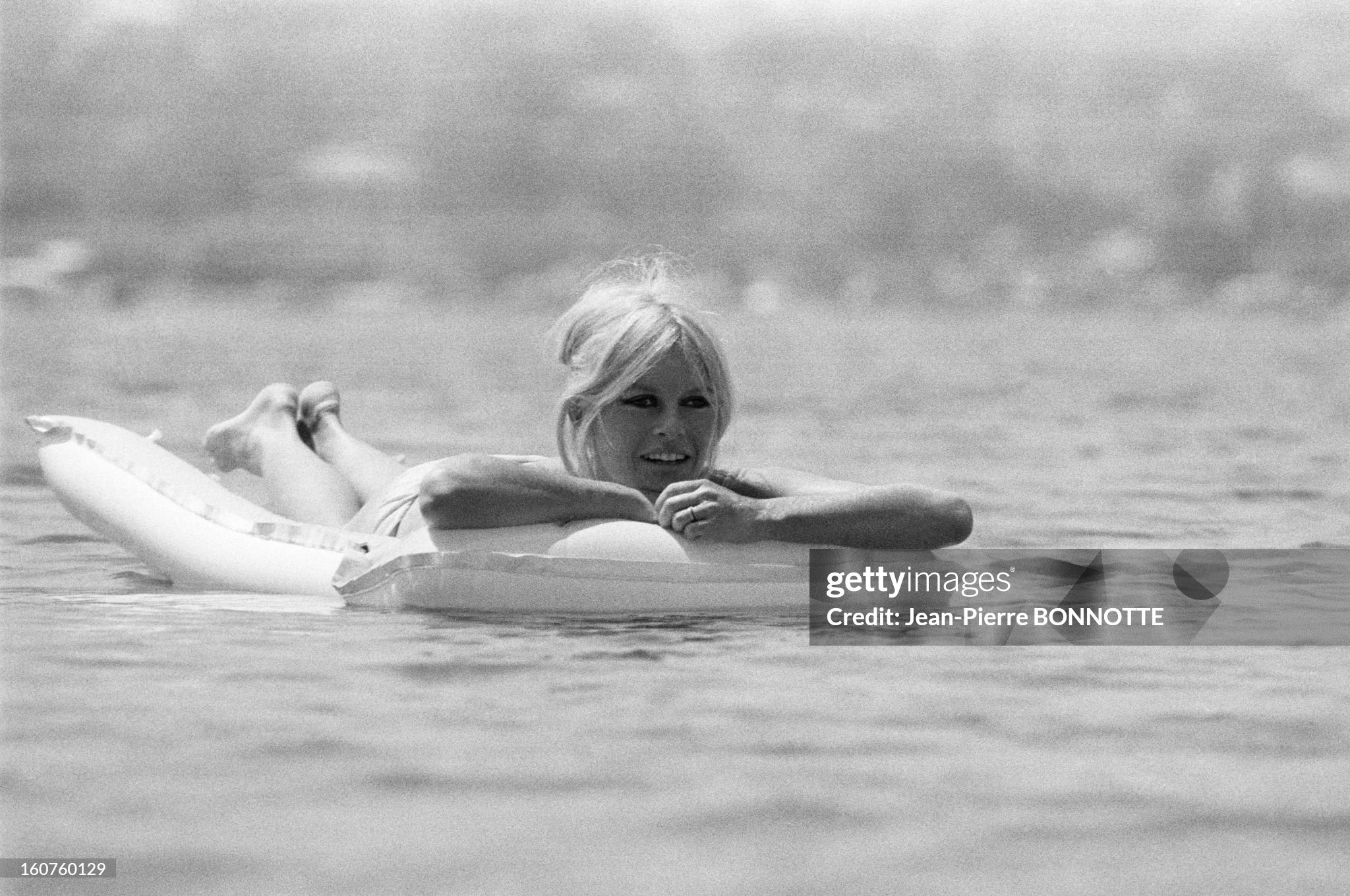
Brigitte Bardot in her house 'La Madrague' in July 1967 in Saint-Tropez, France. Photo by Jean Pierre Bonnotte / Gamma-Rapho via Getty Images.
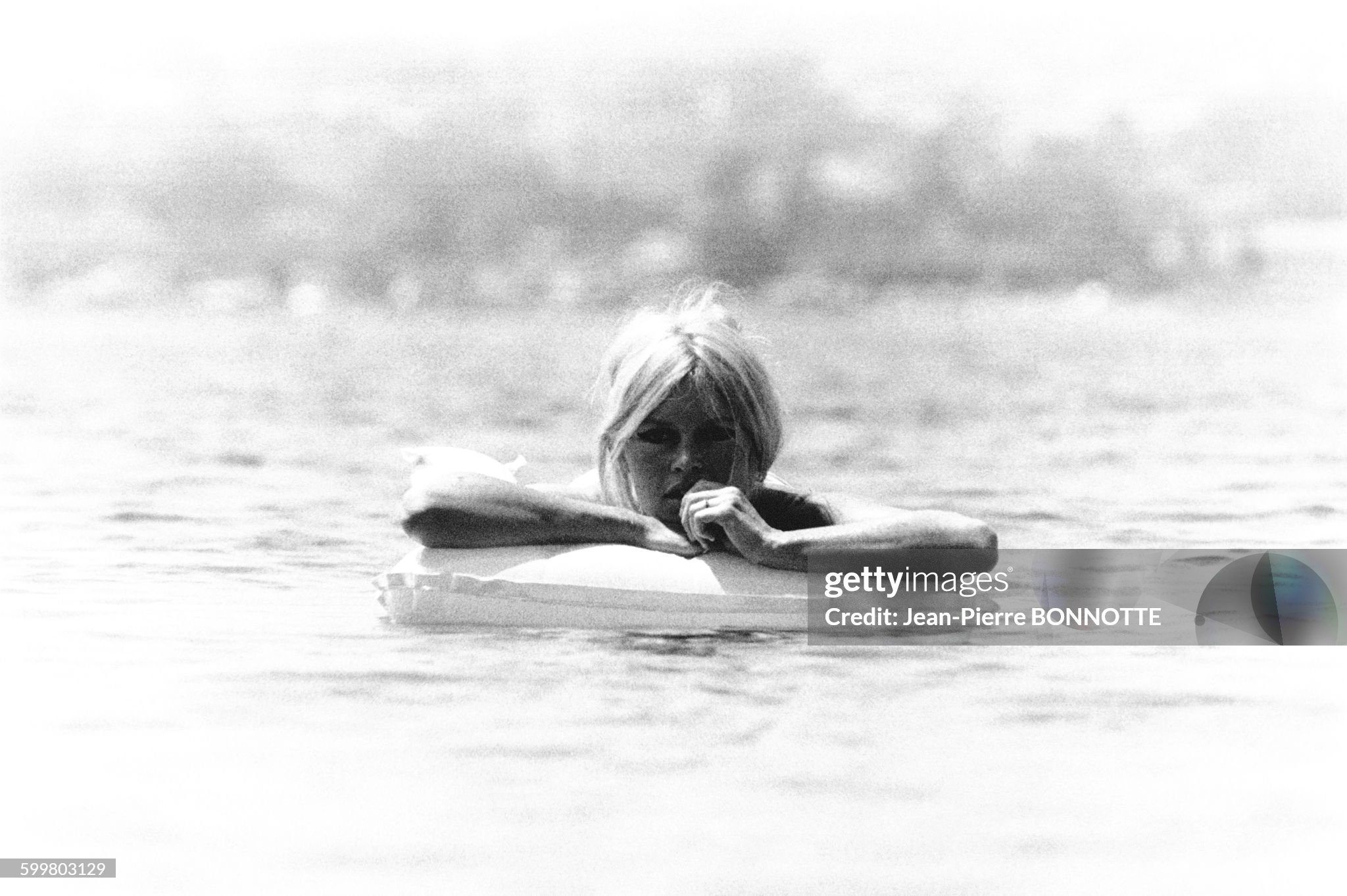
Brigitte Bardot in her house 'La Madrague' in July 1967 in Saint-Tropez, France. Photo by Jean Pierre Bonnotte / Gamma-Rapho via Getty Images.
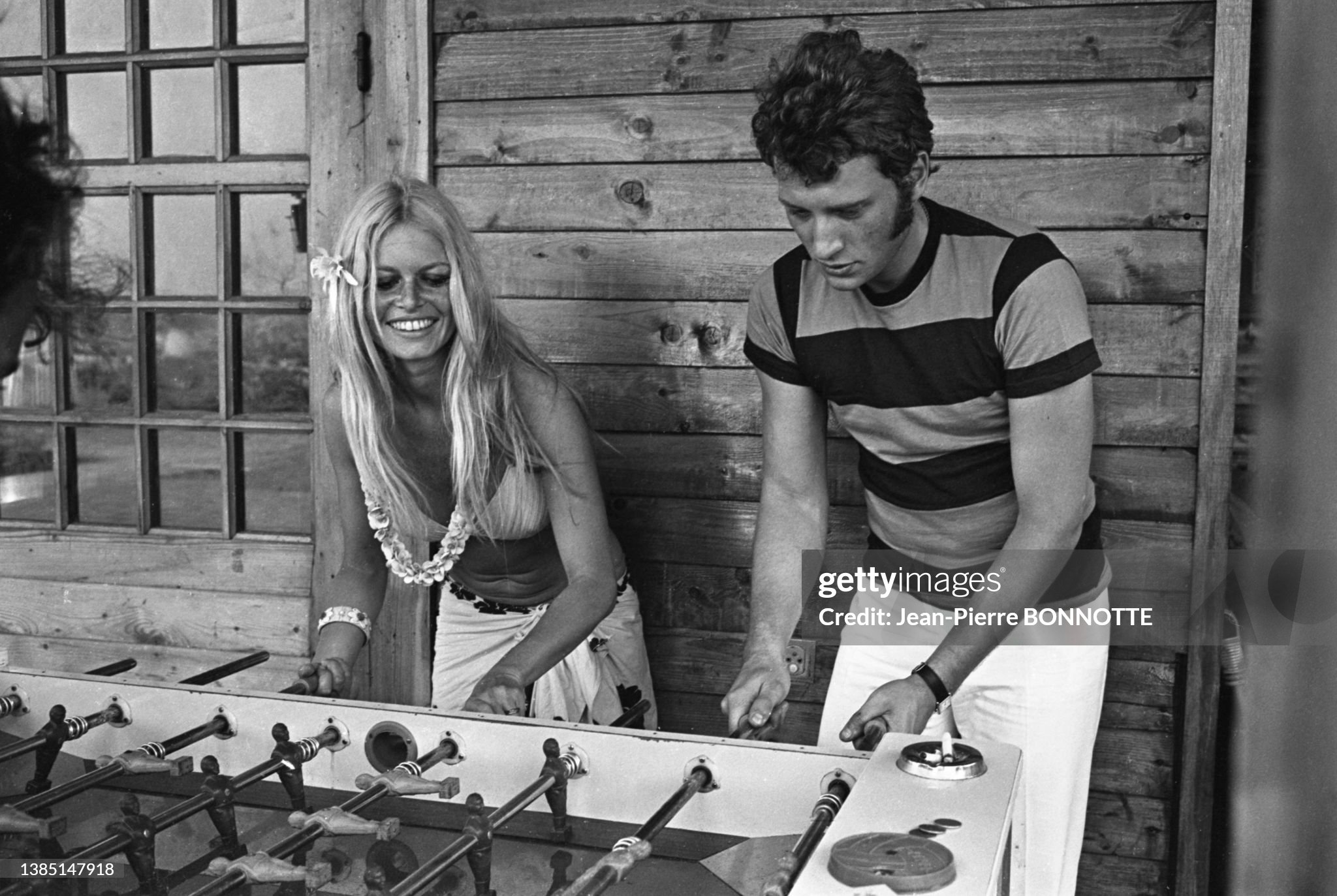
Brigitte Bardot in a bikini and sarong and Johnny Hallyday playing table football at the Epi-plage hotel in Saint-Tropez in August 1967. Photo by Jean-Pierre Bonnotte / Gamma-Rapho via Getty Images.
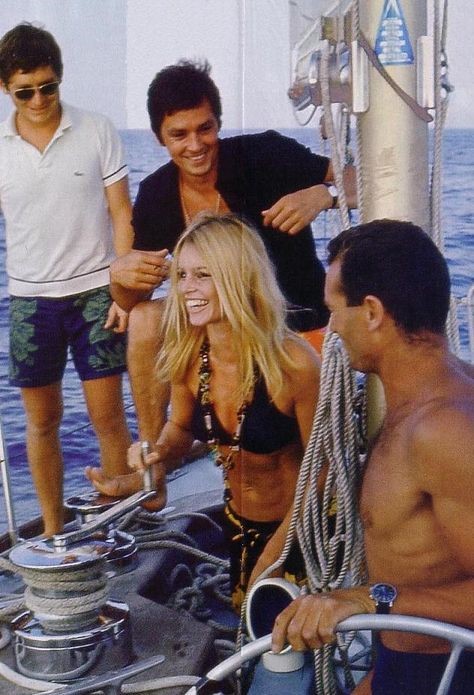
Brigitte Bardot and Alain Delon.
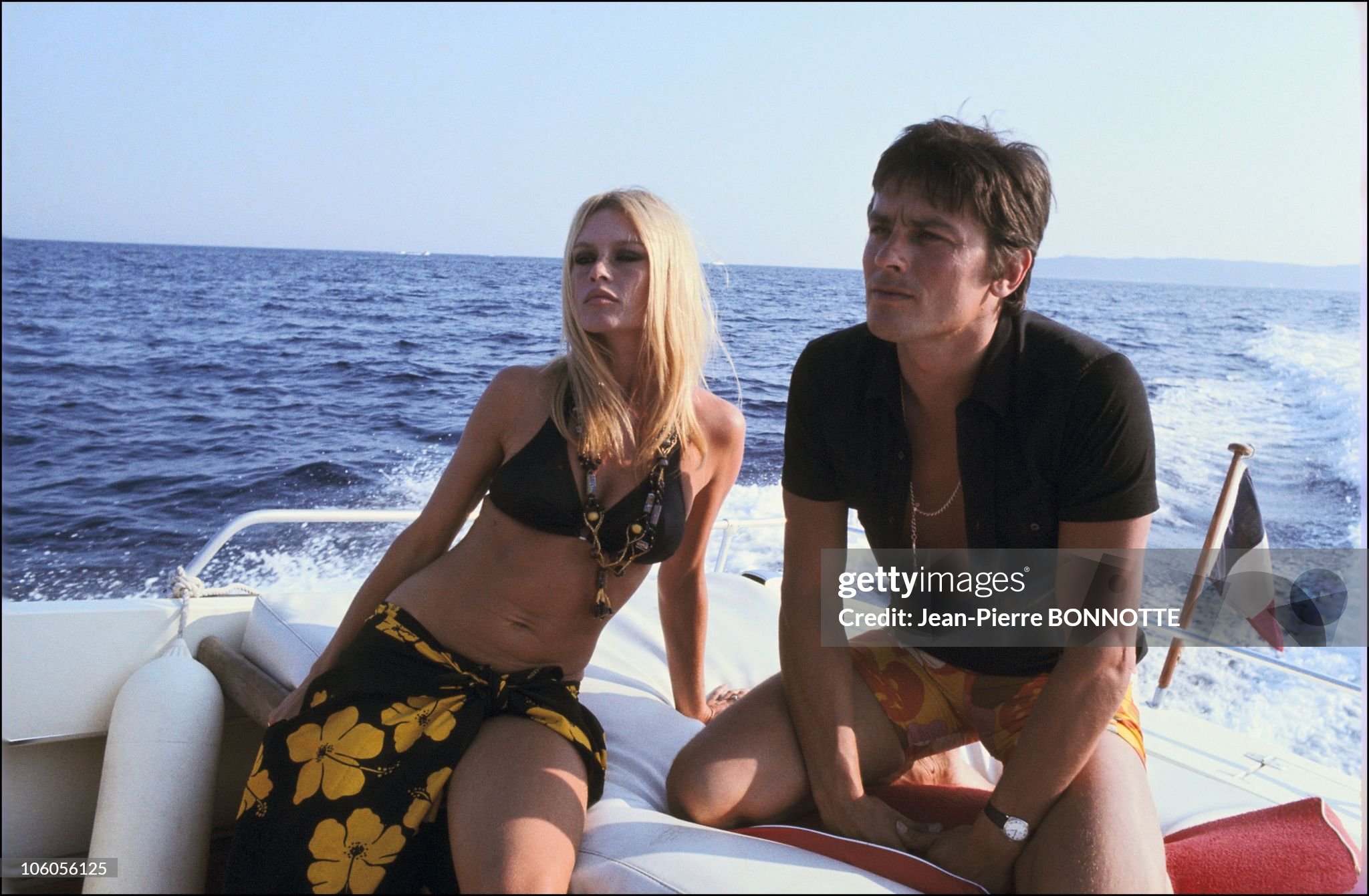
Brigitte Bardot with French actor Alain Delon in August 1968 in Saint-Tropez, France. Photo by Jean-Pierre Bonnotte / Gamma-Keystone via Getty Images.
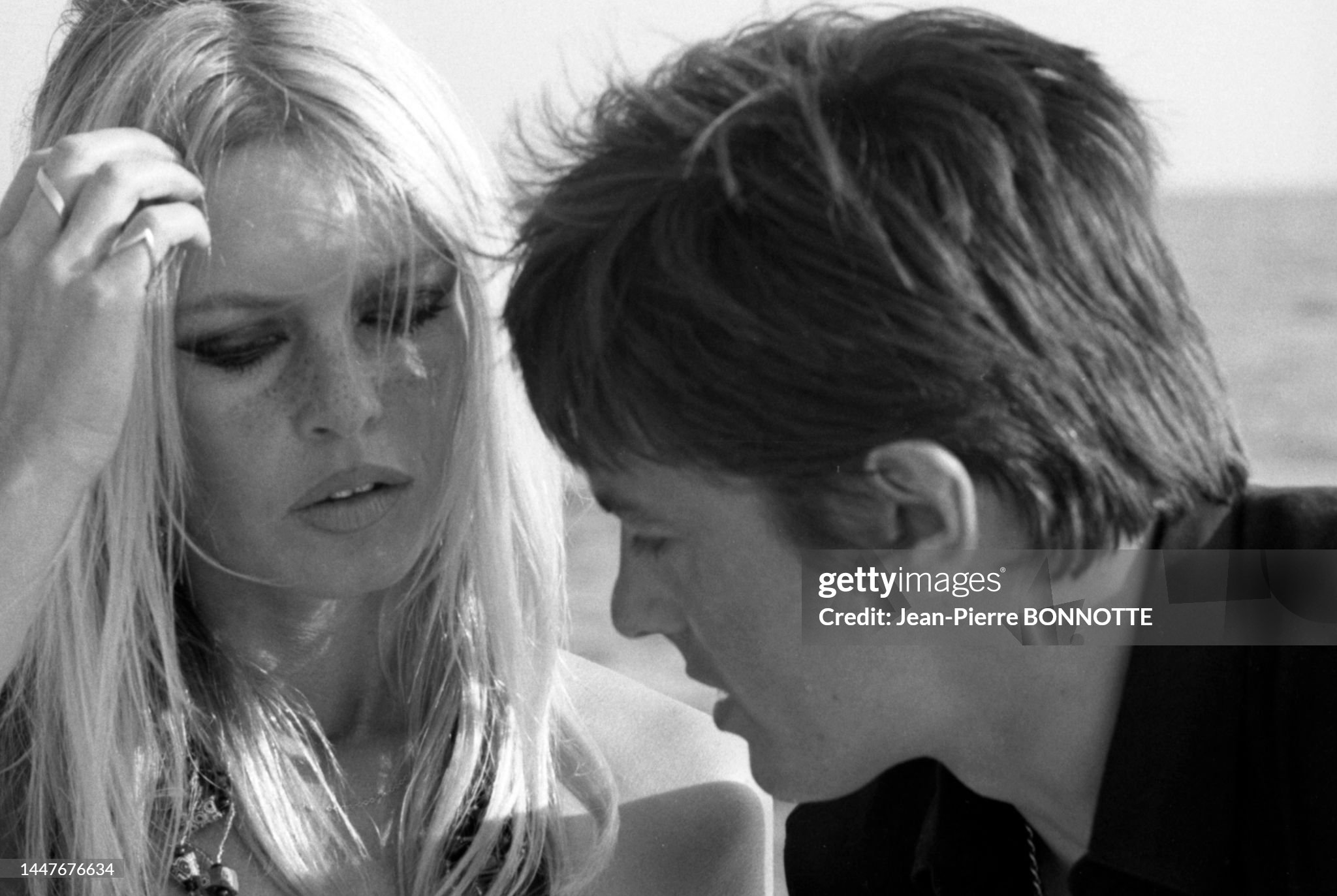
Brigitte Bardot and Alain Delon on a boat off Saint-Tropez in August 1968. Photo by Jean-Pierre Bonnotte / Gamma-Rapho via Getty Images.
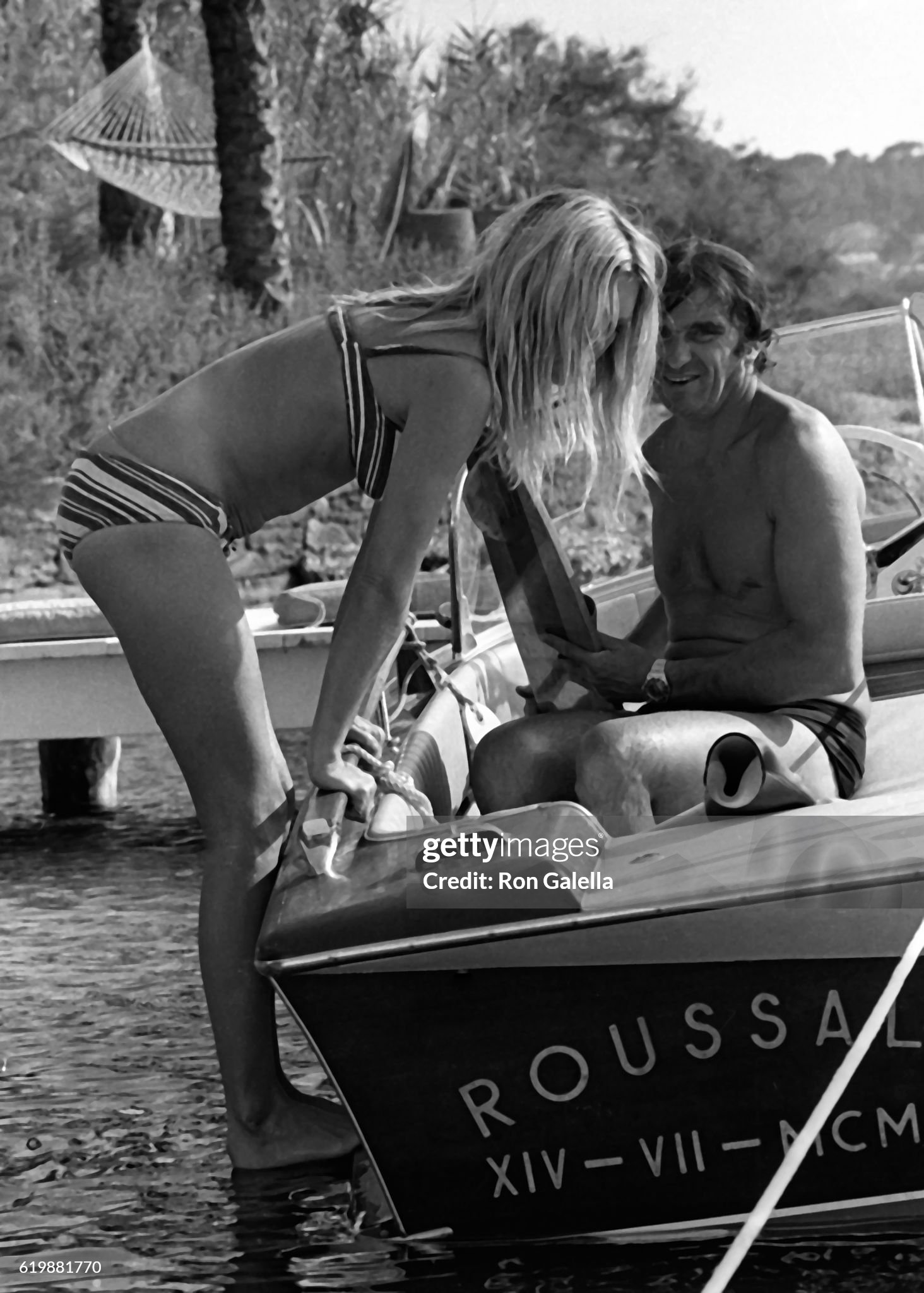
Brigitte Bardot in September 1968 in St. Tropez, France. Photo by Getty Images.
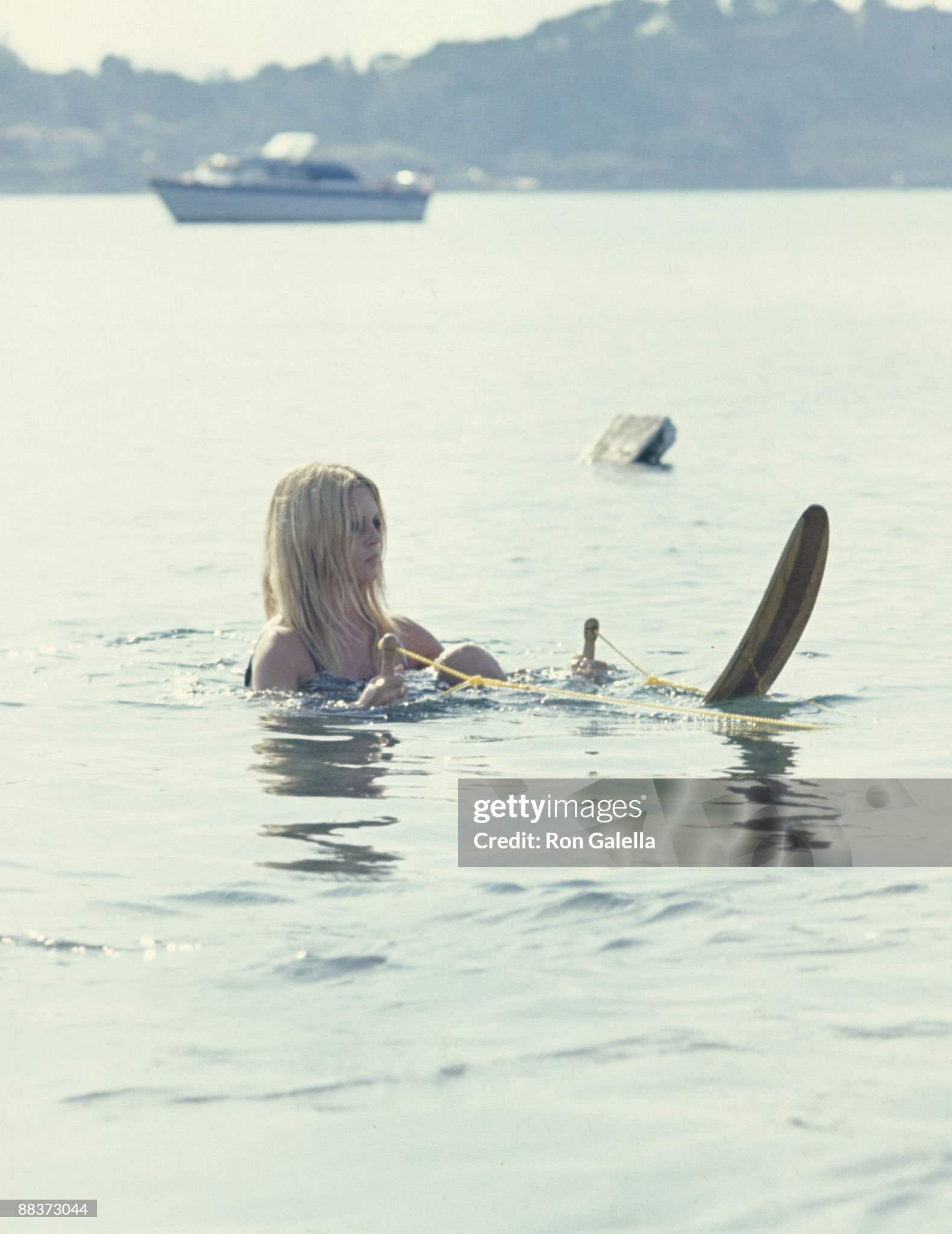
Brigitte Bardot doing water skiing in September 1968. Photo by Ron Galella Collection via Getty Images.
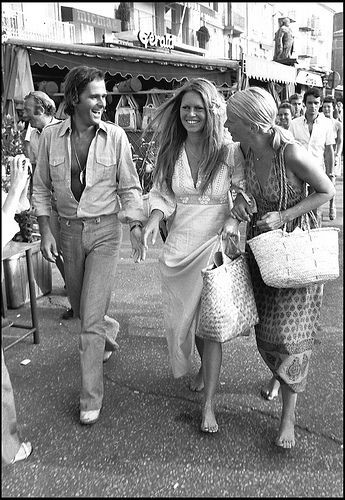
Brigitte Bardot and friends.
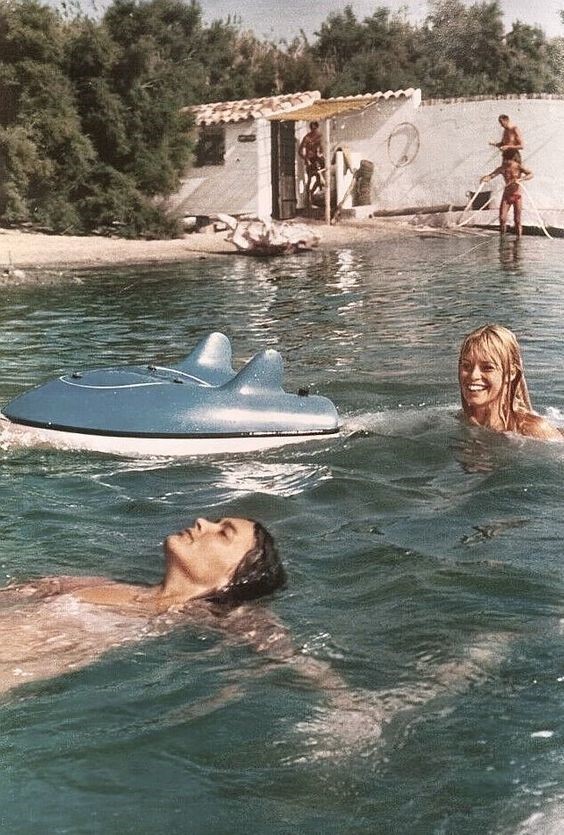
Brigitte Bardot with a friend.
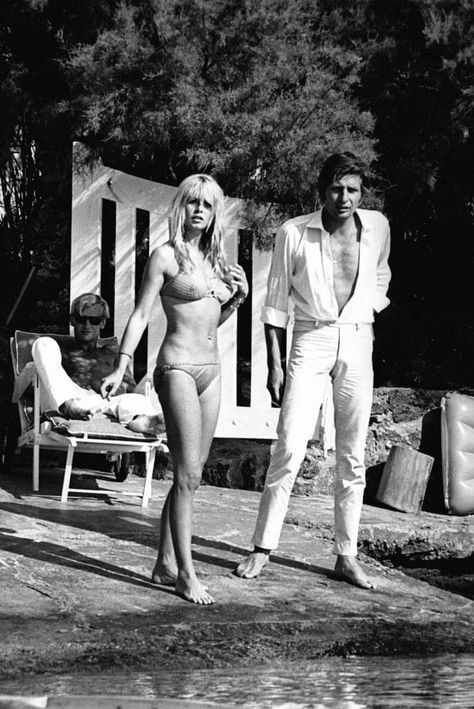
Brigitte Bardot with Gunther Sachs.
Growing up, she had spent her summers in a nearby vacation house owned by her wealthy Parisian parents and, prior to her return as a 22-year-old, the Bardot family were not the only ones to succumb to the charms of the French Riviera town.
The marriage of American film actress Grace Kelly to Prince Rainier of Monaco, on 18 April 1956, attracted world attention once again. It was viewed on television by 30 million people.
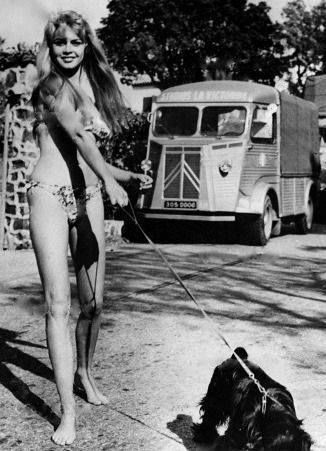
Brigitte Bardot and Citroen.
While there’s an undisputed thrill to spectating, motoring enthusiasts will agree nothing beats getting behind the wheel themselves. The coastal roads of the Riviera provide plenty of opportunities for exciting driving. You can drive along the Corniche de l’Esterel, from La Napoule to St-Raphael. It is a spectacular road with vast rocks rising up on one side of the road with the Mediterranean Sea sparkling on the other. Follow the route east from Nice to Monaco (avoiding joining the Grand Prix, of course). Stop at St-Jean-Cap-Ferrat and the Villa Ephrussi, the villages of Villefrance-sur-Mer and Beaulieur-sur-Mer. Visit the perched village of Eze with its exotic garden and fabulous Chevre d’Or Hotel.
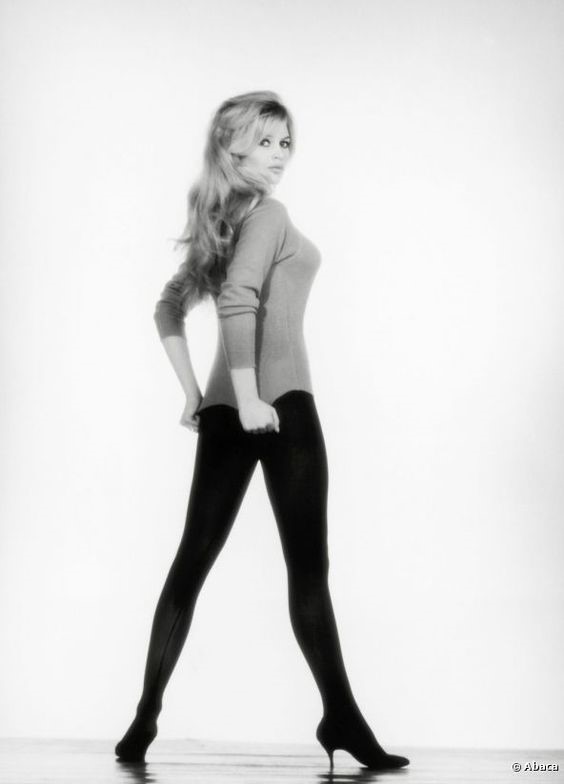
Brigitte Bardot.
Brigitte Bardot: queen of the Côte d’Azur. By Nick Scott.
A gust of fresh air in the stifling social atmosphere of her time, Brigitte Bardot lived up to the ‘sex-kitten’ role as well as she embodied it…
The sexiest scene in movie history is not Donald Sutherland and Julie Christie’s tussle between Venetian bed sheets in the 1973 psychological thriller “Don’t look now”. Neither is it Mila Kunis and Natalie Portman’s sapphic tryst in 2010’s Black Swan. It’s not the nihilistic orgy in Lars von Trier’s “The idiots”, the bookshelf knee-trembler between Keira Knightley and James McAvoy in “Atonement”, or any of the classification board-ruffling cross-cuts in Alfonso Cuarón’s “Y Tu Mamá También”.
No, the sexiest scene committed to celluloid involved no nudity, saw no physical contact between the actors and was soundtracked not by some tenor-sax bra-remover in C minor but by a Carioca-lite cacophony of pounding bongos. I’m referring, of course, to the famous dance scene in “Et Dieu... créa la femme”, in which Brigitte Bardot plays a young orphan indulging in an unbridled bonk-fest in 1950s Saint-Tropez. In the scene in question, Bardot — barefoot, unkempt, skirt flailing, insouciance and sensuality leaping from her pores right through the camera lens — flounders and table-dances for an ensemble of libido-stupefied men in a sequence that will have the most querulous Darwinist nodding in agreement with the movie’s title.
Only she could have done the scene. Without her — without the extraordinary sequence of chemical base pairs residing in her 30 trillion cells — the movie wouldn’t have worked.
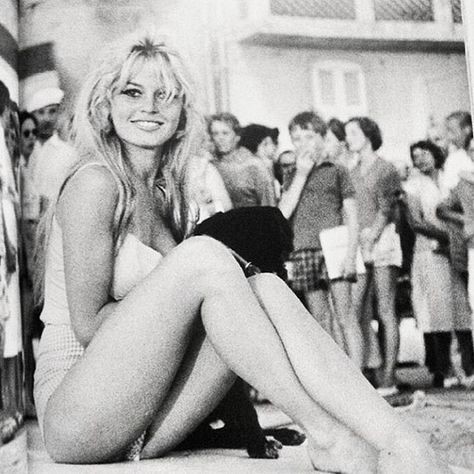
For Bardot’s radiant sexual charisma belongs to her alone.
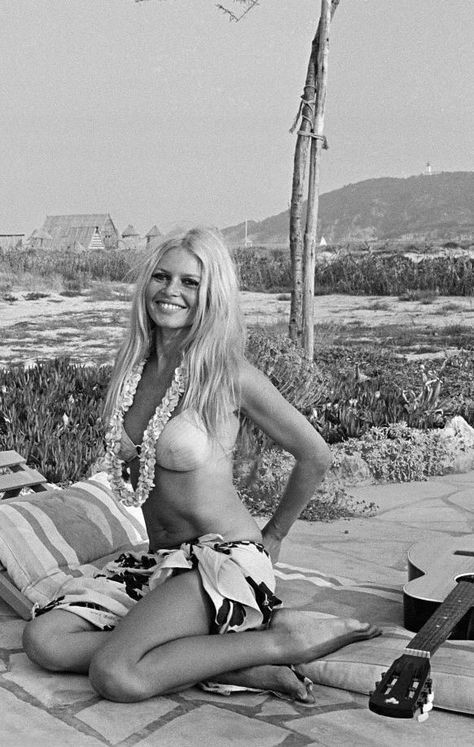
The slight physical imperfections — the gap between her front teeth and a profile that, mid-pout, could come across as a sneer of incredulous contempt at others’ ordinariness — somehow complemented her more conventionally beautiful traits: the delineated feline eyes, the breeze-bouffanted hair, the plush lips and a physique that came on leaps, bounds and entrechats thanks to ballet sessions at the Conservatoire de Paris.
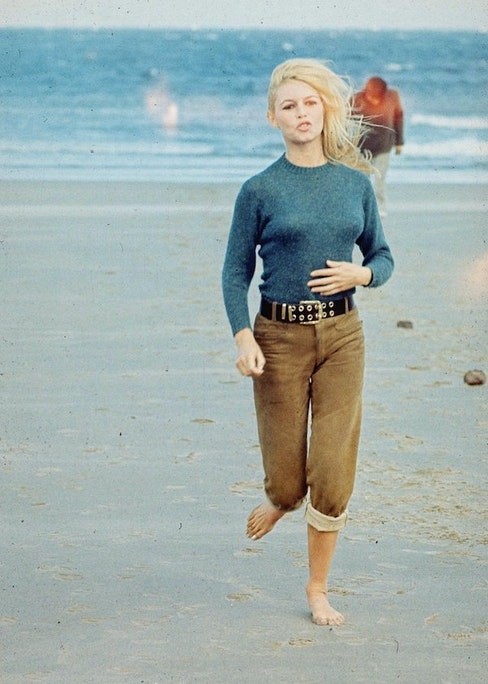
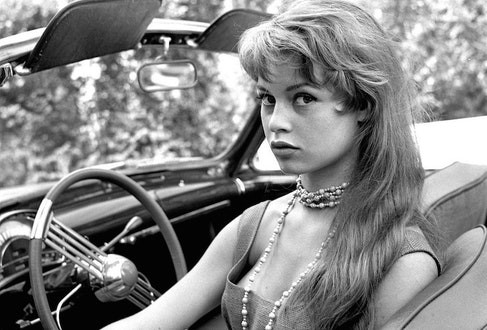
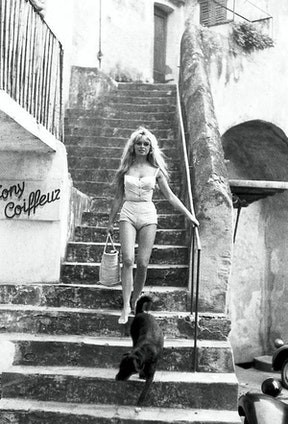
“There are plenty of beautiful women out there, but she’s beautiful in a non-typical way — distinctive; you know it’s her instantly,” Ginette Vincendeau, a professor in Film Studies at King’s College London, says. “She was such an iconoclastic figure, a taboo breaker, an outrageous figure at the time and an emblem of the moment when women began to emancipate themselves — sexually, primarily, in her case but in other ways too. She’s a proto-feminist figure without being a feminist from an ideological point of view. She’s both an incredible sex goddess in a conventional way — endlessly displaying herself for the male gaze — but at the same time she really followed her own desires. [Her enigma lies in] that dual nature of being a really strong personality, knowing and getting what she wants, at the same time as being pleasing to men.”
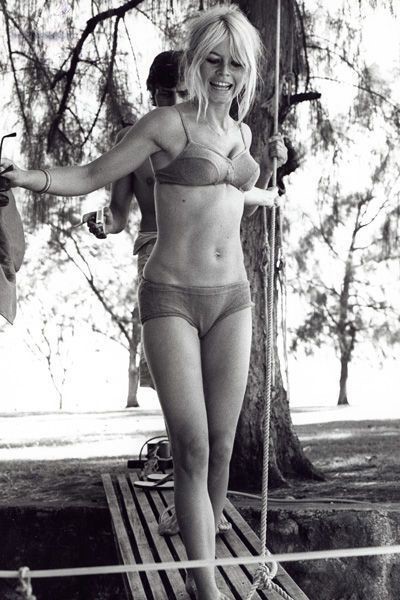
Brigitte Bardot in a bathing suit.
So what distinguished her from the sex-kitten clowder? “There were many sex goddesses at the time but they didn’t have the same quality of being so wilful and strong,” Vincendeau says. “Take Marilyn Monroe — there’s something very vulnerable in her as far as sexiness goes. Bardot’s tough. One of her most appealing attributes, apart from being so natural and so confident, was that insolence. She answered back. That made her extremely attractive. Things were written about her [at the time] that people wouldn’t be allowed to write anymore.”
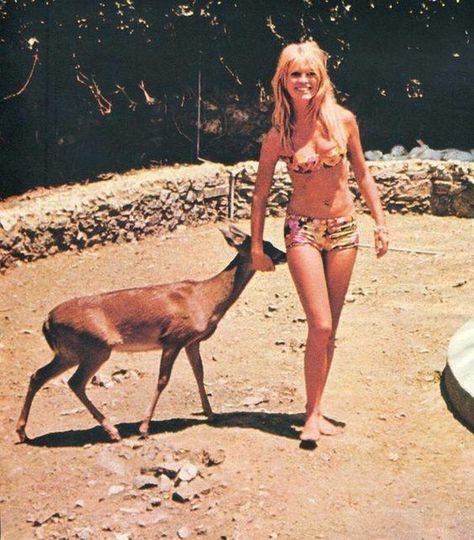
Bardot herself would be the first to concur — “My wild and free side unsettled some and unwedged others,” as she once put it — and it’s likely that what finger-waggers in the media couldn’t handle about Bardot, inadvertently at least, was that her sexual potency came from within. Much about her amorous convective core is revealed by some advice she gave to Laetitia Casta, as the younger actress and model prepared to play Bardot in the 2010 biopic Gainsbourg (Vie Héroïque). Casta reported: “she said, ‘when you walk into a room, put your head up and look like you want to fuck everybody’.” Casta’s performance in the movie suggests she’s a master of emulation, but Bardot, who has referred to herself as “a lousy actress”, surely didn’t need to pretend to have a vociferous carnal appetite. Not if what we know of her prodigious love life is anything to go by.
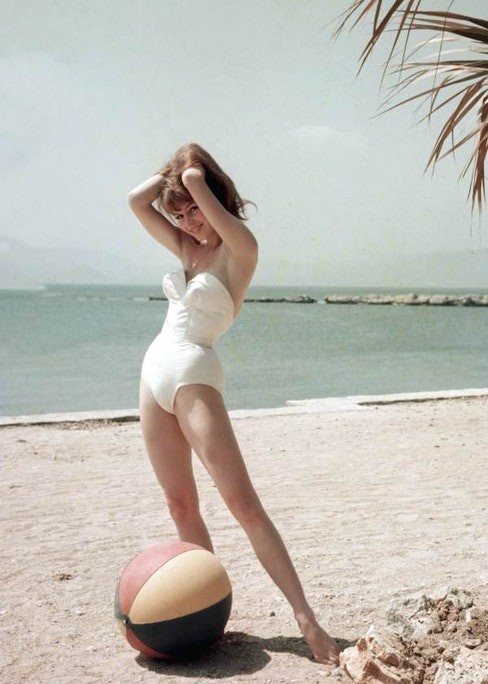
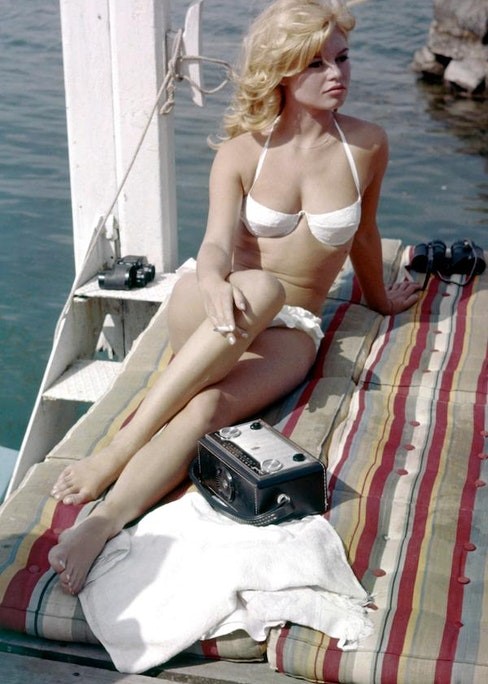
The world has long since caught up with Brigitte Bardot’s laissez-faire sexual mores, but she now courts controversy of a different nature: her husband is a former adviser to the far-right Front National and, between 1997 and 2008, she faced legal action five times for various comments, such as those concerning the cruelty of halal food preparation. Despite now enjoying a lengthy period of calm after tempestuous decades peppered with unwelcome press intrusions, nervous breakdowns and suicide attempts, she cuts a weary, albeit still potently audacious, figure.
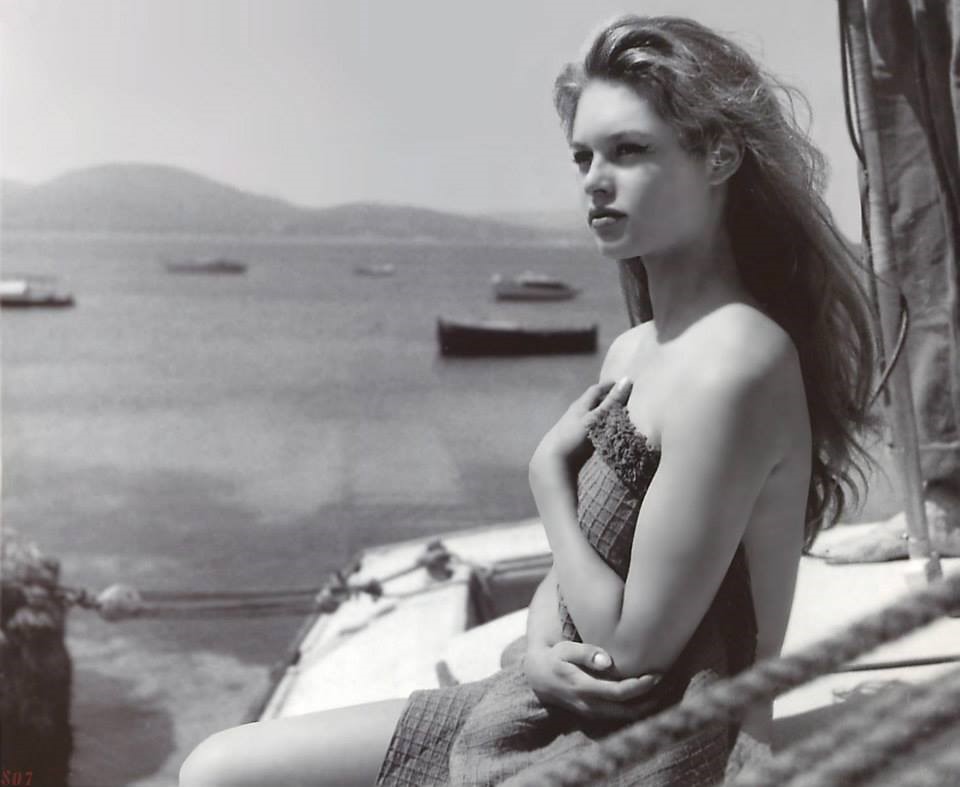
Meanwhile, the Brigitte Bardot of her youth — the queen regnant of the Côte d’Azur, about whom Woody Allen said, “I’m firmly convinced nothing more beautiful exists on Earth”;
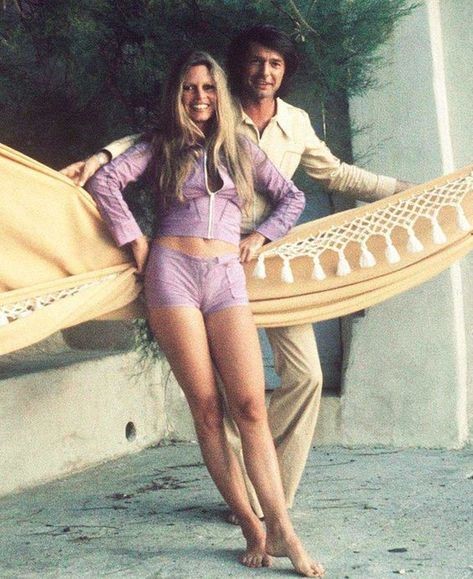
the woman whom sculptor Alain Gourdon used in 1970 as his model for a representation of Marianne, the national figurehead of France; the fashion maven whose ballet shoes, un-corseted gingham dresses and loud bikinis have been appropriated by the likes of Kate Moss and Vanessa Paradis; and the woman who has perhaps done more than any other to wake the sleeping giant of candid female sexuality — is alive and well in the soft-lensed, aquamarine realms of ultra-glamorous sixties and seventies pop culture legend.
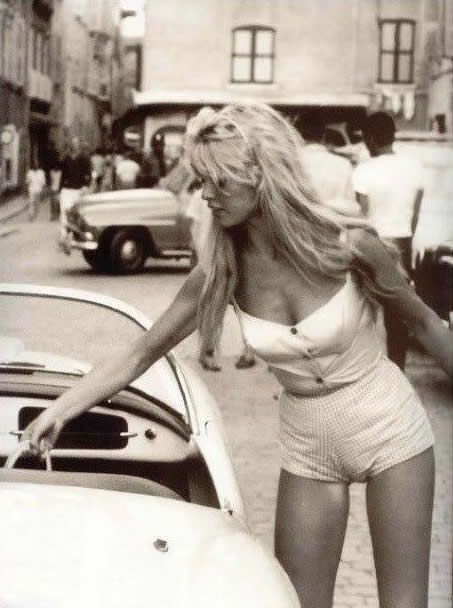
Brigitte Bardot at Saint Moritz in 1960.
Some, Bardot included, may question her achievements as an actress. But as a cultural emblem? Well, she redefined how half the human population might approach the very act that made us skulk out of the primordial soup. If that doesn’t make someone deserving of the over-flogged ‘icon’ bijou, what does?
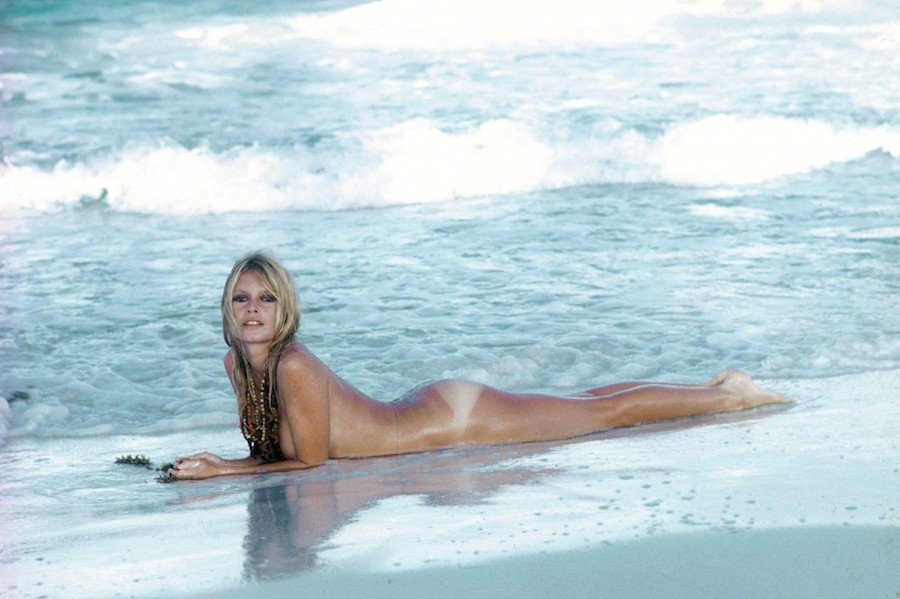
Bardot posing on the beach in 1975.
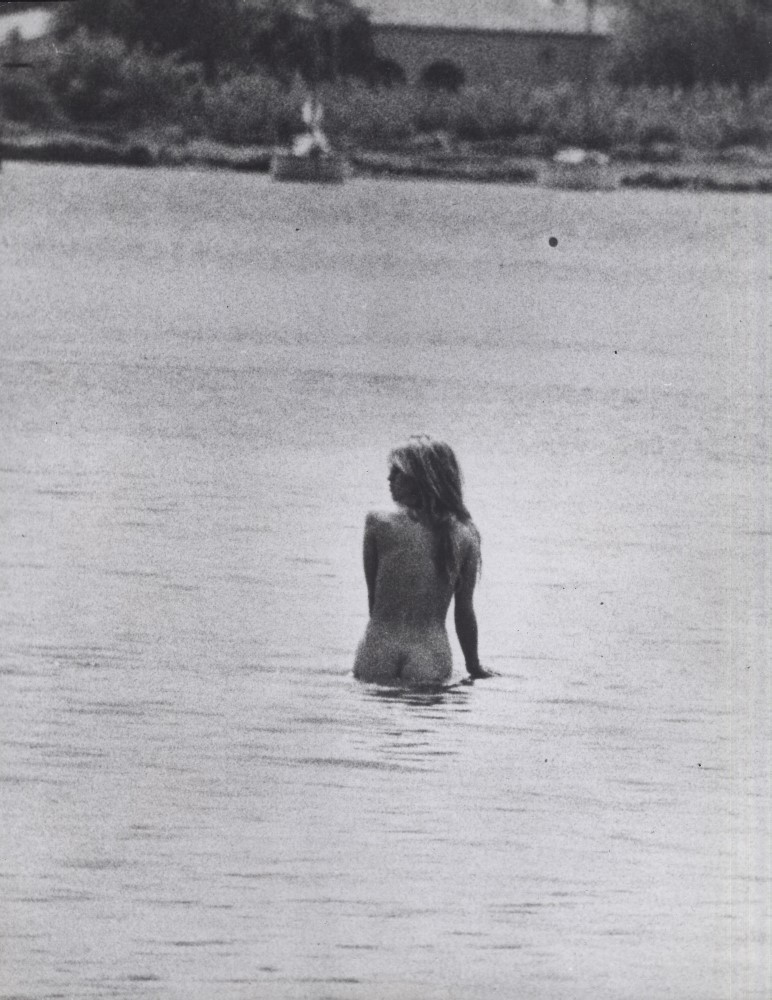
A naked Brigitte Bardot bathes in the sea.
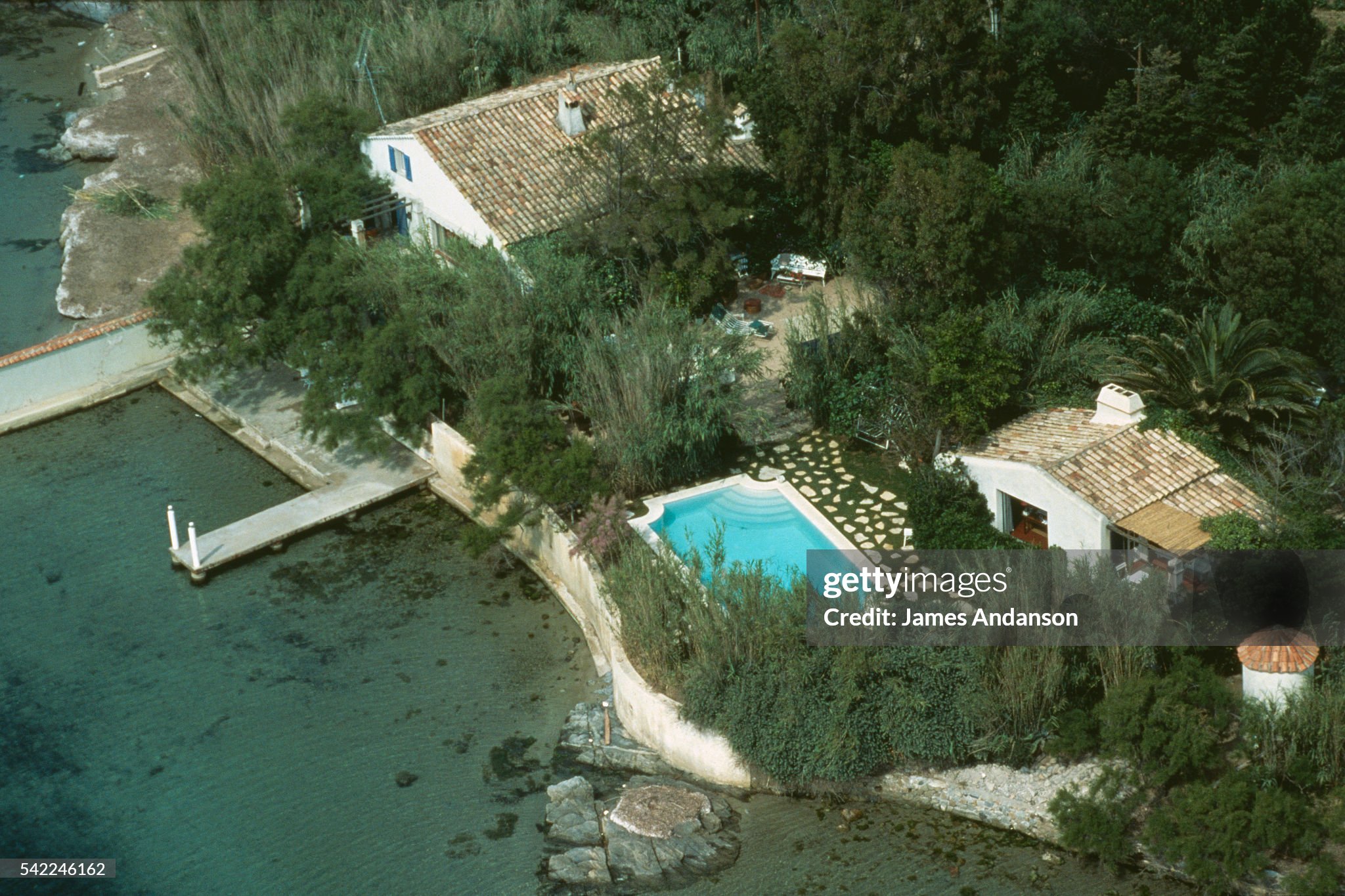
La Madrague, the house of Brigitte Bardot in St Tropez, on 06 June 1980. Photo by James Andanson / Sygma via Getty Images.
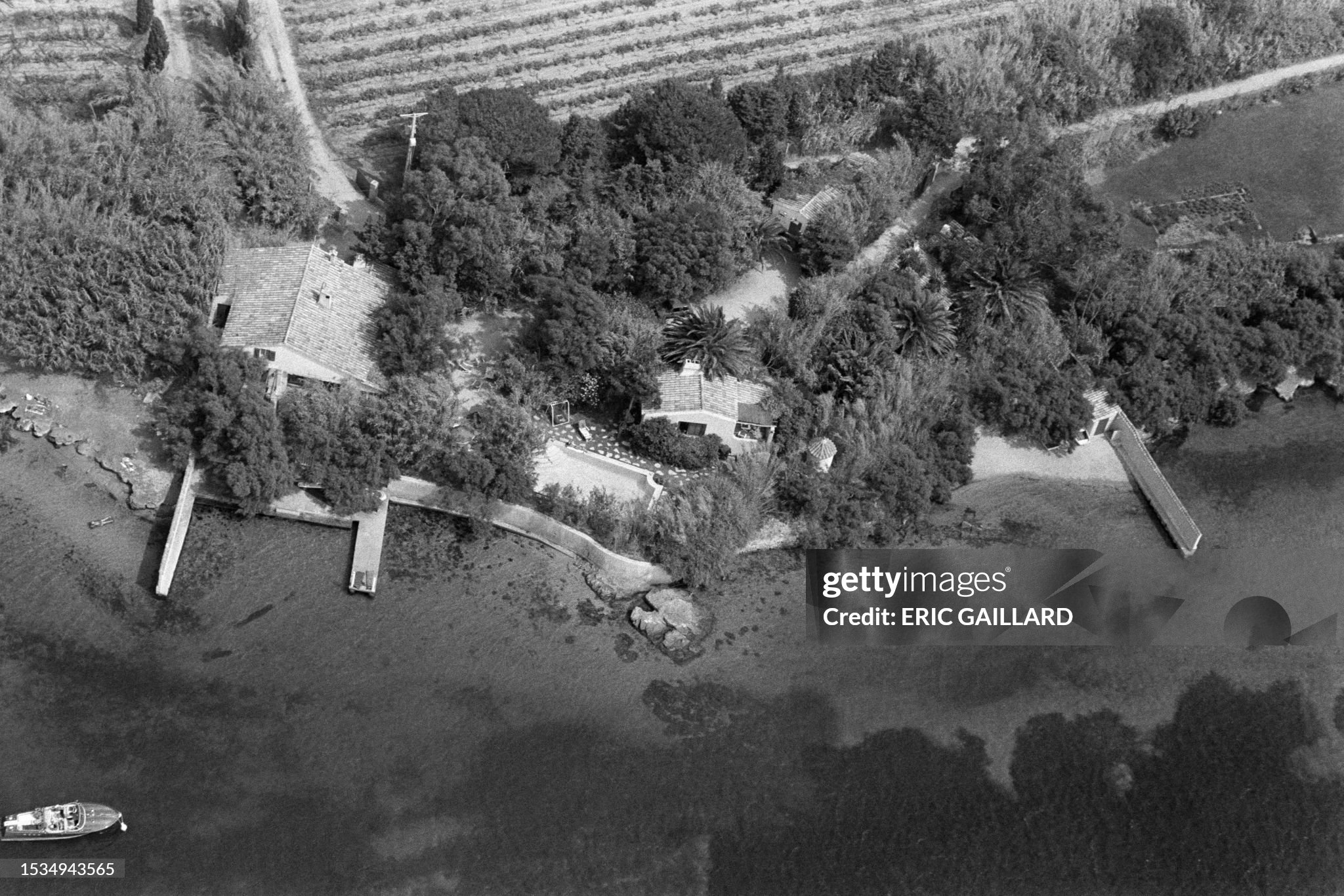
A picture taken on 17 August 1982 shows an aerial view of La Madrague house, property of French actress Brigitte Bardot in Saint-Tropez, southeastern France. Photo by Eric Gaillard / AFP via Getty Images.
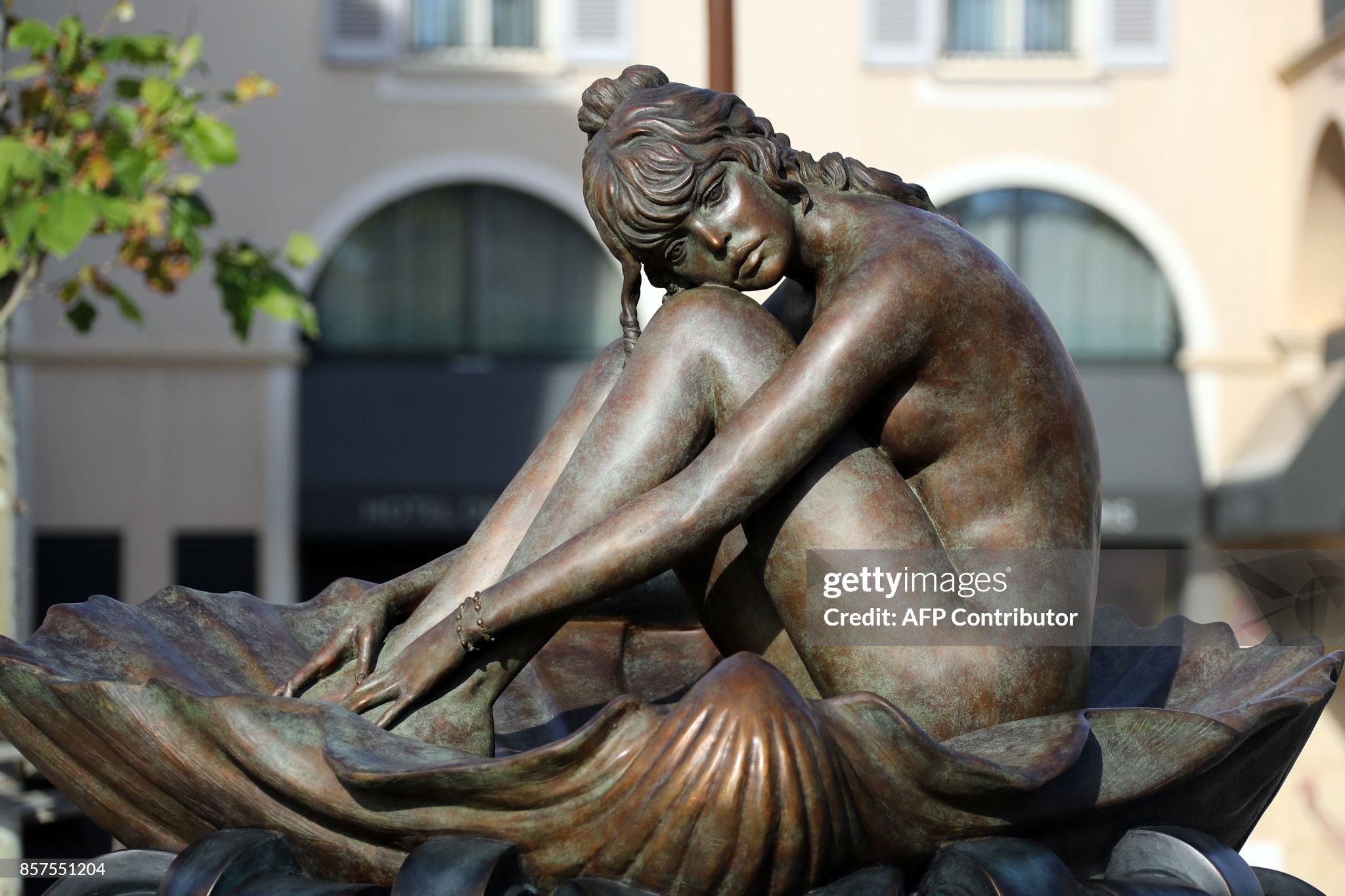
Picture of a statue of Brigitte Bardot, based on an illustration watercolour by Italian illustrator Milo Manara, is pictured in the Riviera resort of St Tropez on 04 October 2017. Photo by Valery Hache / AFP via Getty Images.
But the Côte d'Azur is not just Brigitte Bardot. There are many female beauties that made it unique in its golden age.
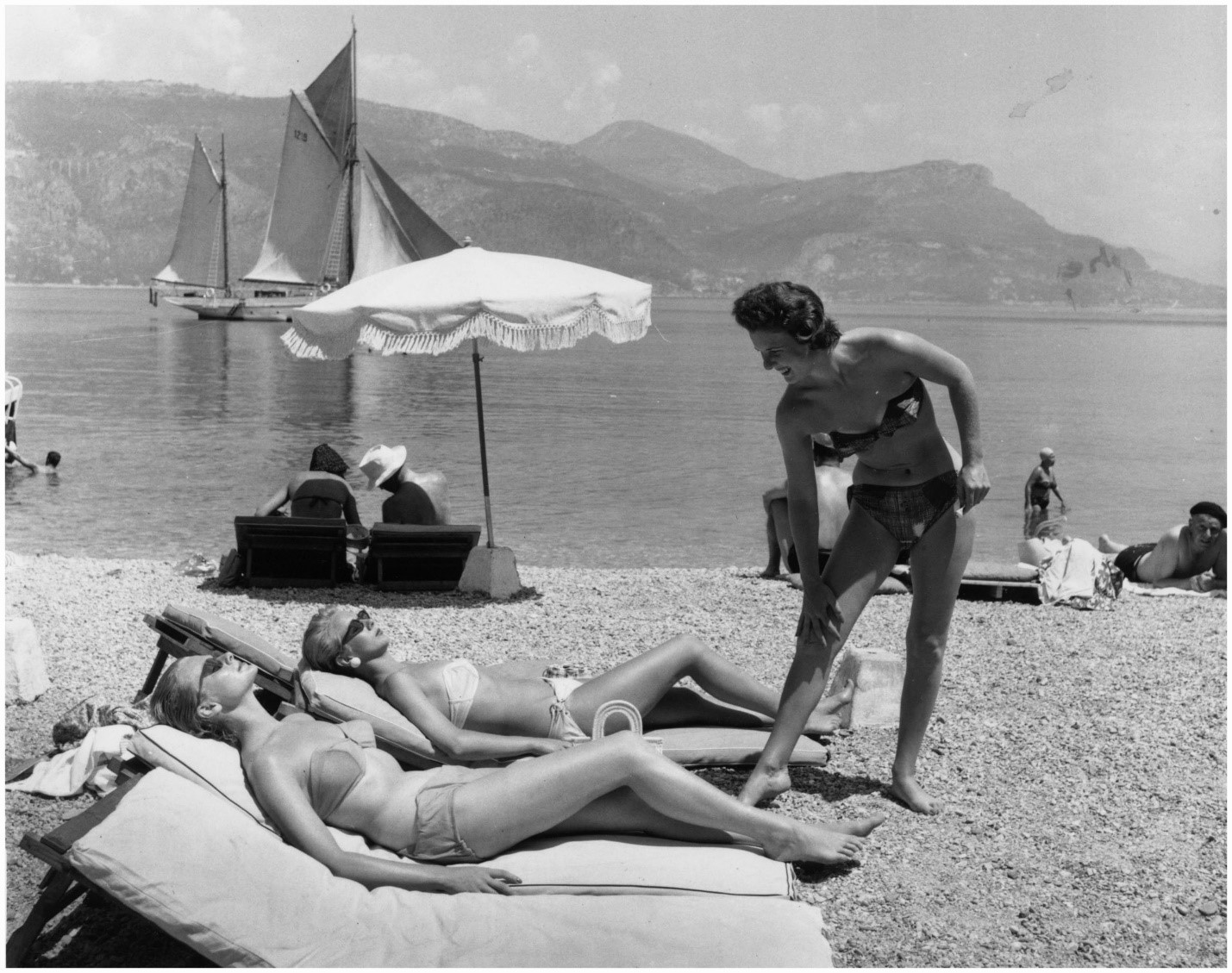
Three British models sunbathing on a beach on the Cote d’Azur during a cruise.
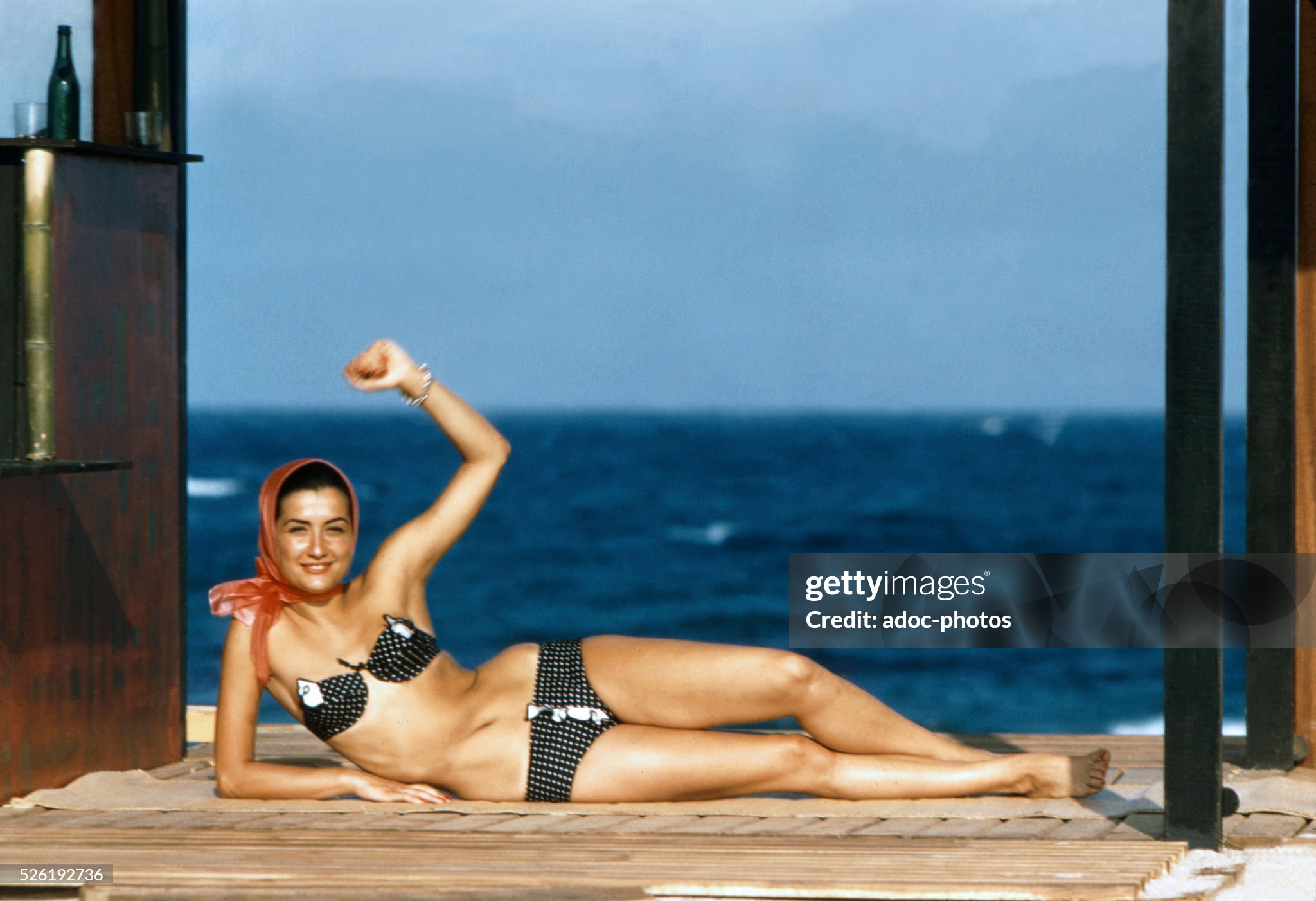
Fashion photography taken on the beach of Saint-Tropez, France, in 1957. Photo by Adoc-photos / Corbis via Getty Images.
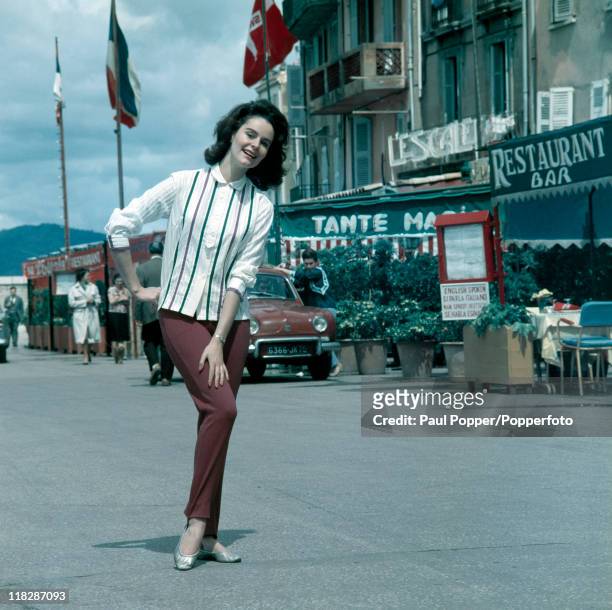
Model Chris Gregg in mauve trousers and a green and mauve ribbon-trimmed blouse on a street in St Tropez, circa 1961. Photo by Popperfoto via Getty Images.
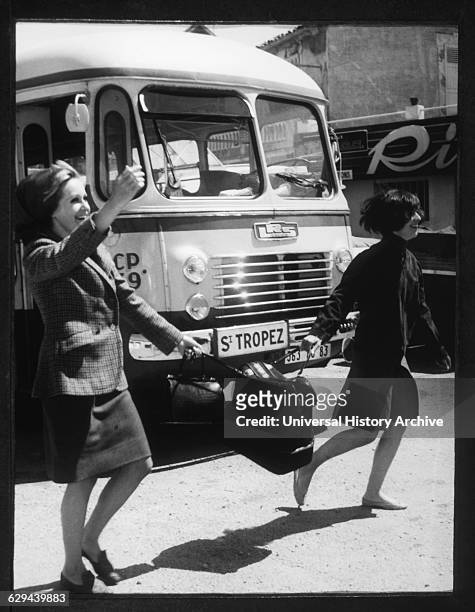
Women crossing street carrying a suitcase in St. Tropez, France, in 1965. Photo by Universal History Archive / Universal Images Group via Getty Images.
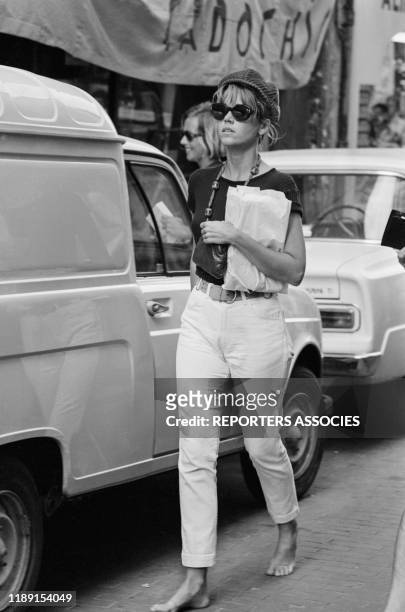
American actress Jane Fonda in a street in Saint-Tropez on 30 August 1966. Photo by Reporters Associes Gamma-Rapho via Getty Images.
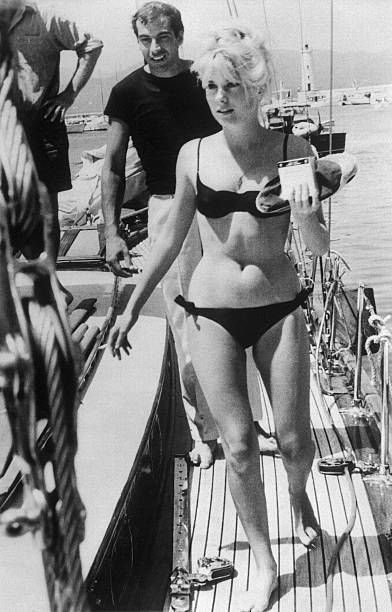
Catherine Deneuve.
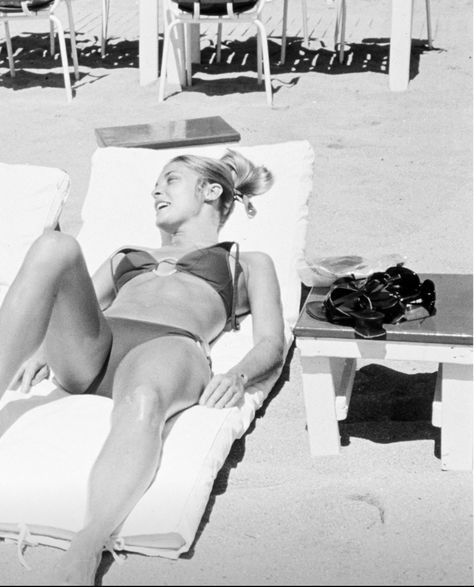
Sharon Tate in Cannes, France.
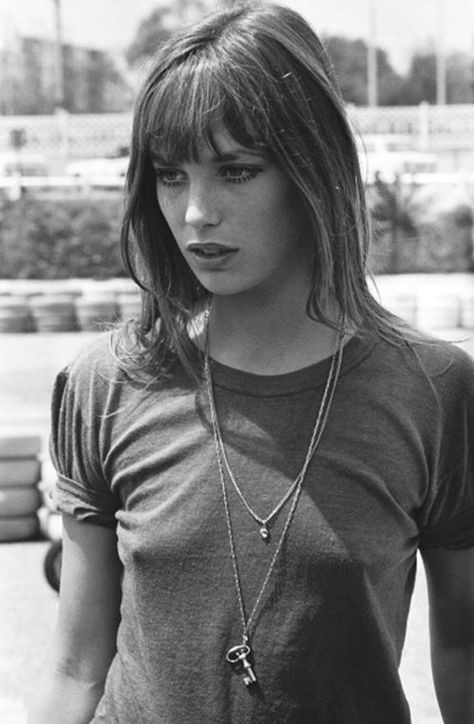
Jane Mallory Birkin, born 14 December 1946, is an English singer, songwriter, actress and former model. She attained international fame and notability for her decade-long musical and romantic partnership with Serge Gainsbourg. She also had a prolific career as an actress in British and French cinema.
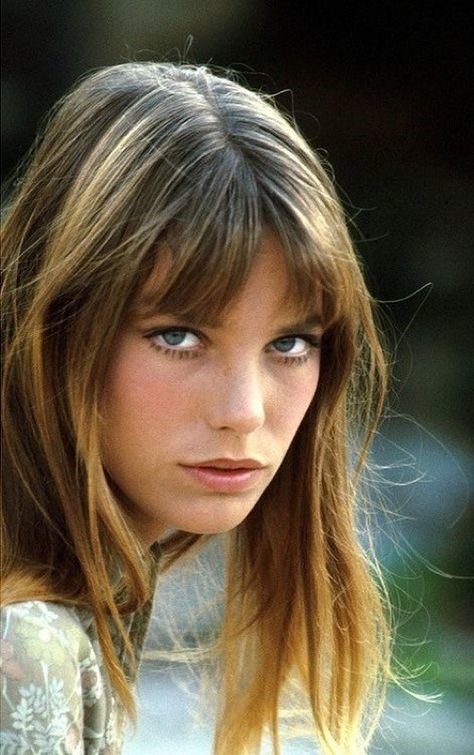
Jane Birkin.
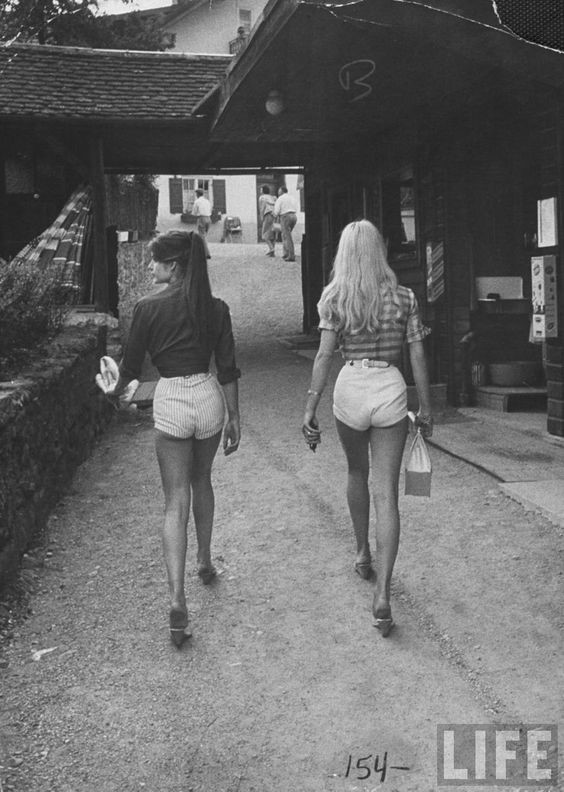
Jane Birkin and Brigitte Bardot out for a walk in 1970.
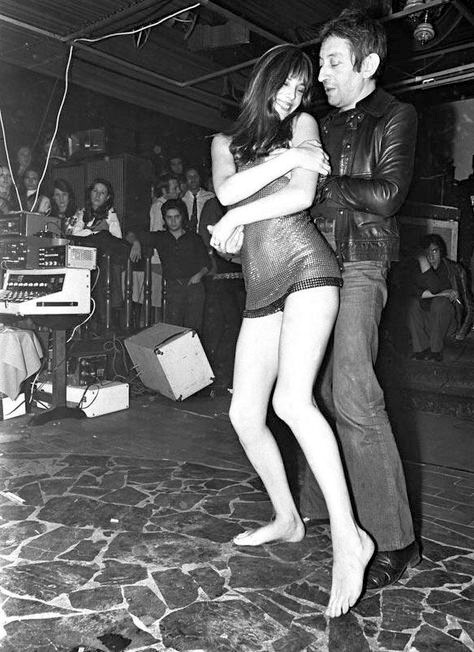
Serge Gainsbourg and Jane Birkin.
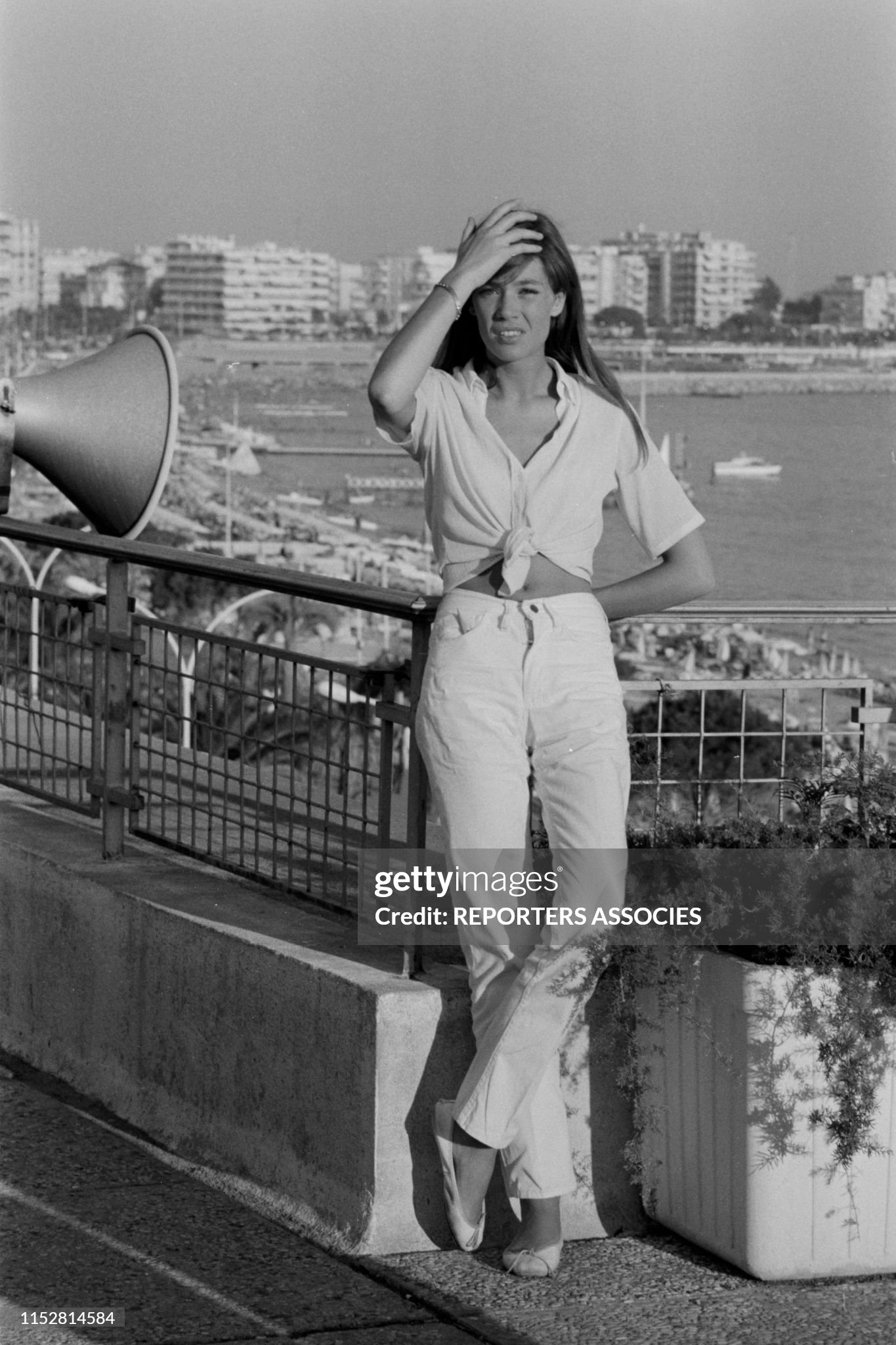
Françoise Hardy on vacation on the Côte d'Azur on August 9, 1965. Photo by REPORTERS ASSOCIES/Gamma-Rapho via Getty Images.
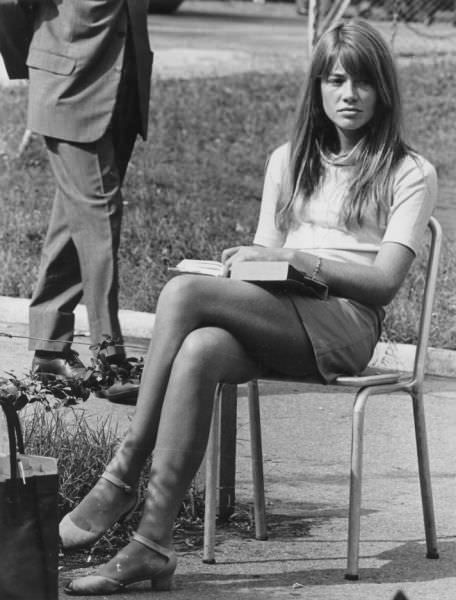
Francoise Hardy, ageless style. Françoise Madeleine Hardy, born 17 January 1944, is a French singer and songwriter. Mainly known for singing melancholic sentimental ballads, Hardy has been an important figure in French pop music since her debut, spanning a career of more than fifty years with over thirty studio albums released. She rose to prominence in the early 1960s as a leading figure of the yé-yé wave, a genre of pop music and associated youth culture phenomenon that adapted to French the pop and rock styles that came from the United States and the United Kingdom.
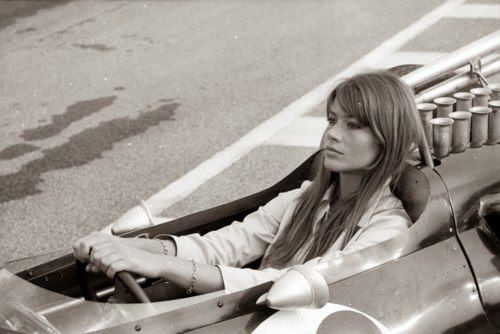
Car girl: Francoise Hardy. She has long been considered by those in the know as a 1960's style icon. By Michael Satterfield.
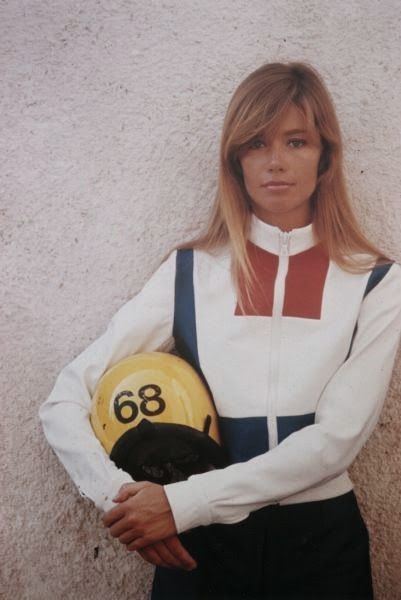
Francoise Hardy. By Michael Satterfield.
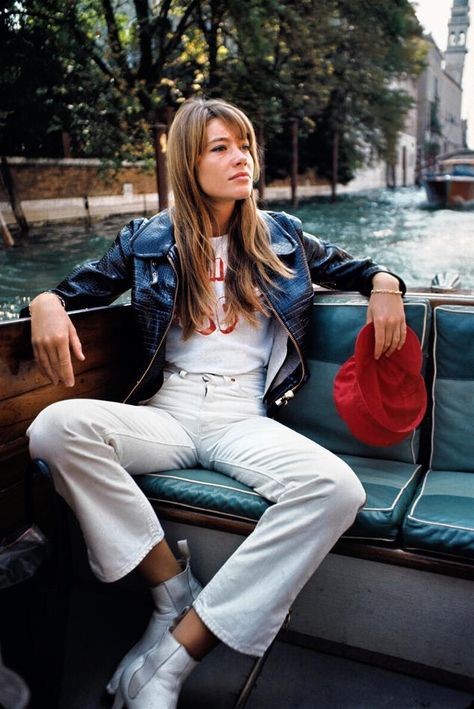
Francoise Hardy.
Saint-Tropez is a town on the French Riviera, 68 kilometres (42 miles) west of Nice and 100 kilometres (62 miles) east of Marseille in the Var department of the Provence-Alpes-Côte d'Azur region, Southern France.
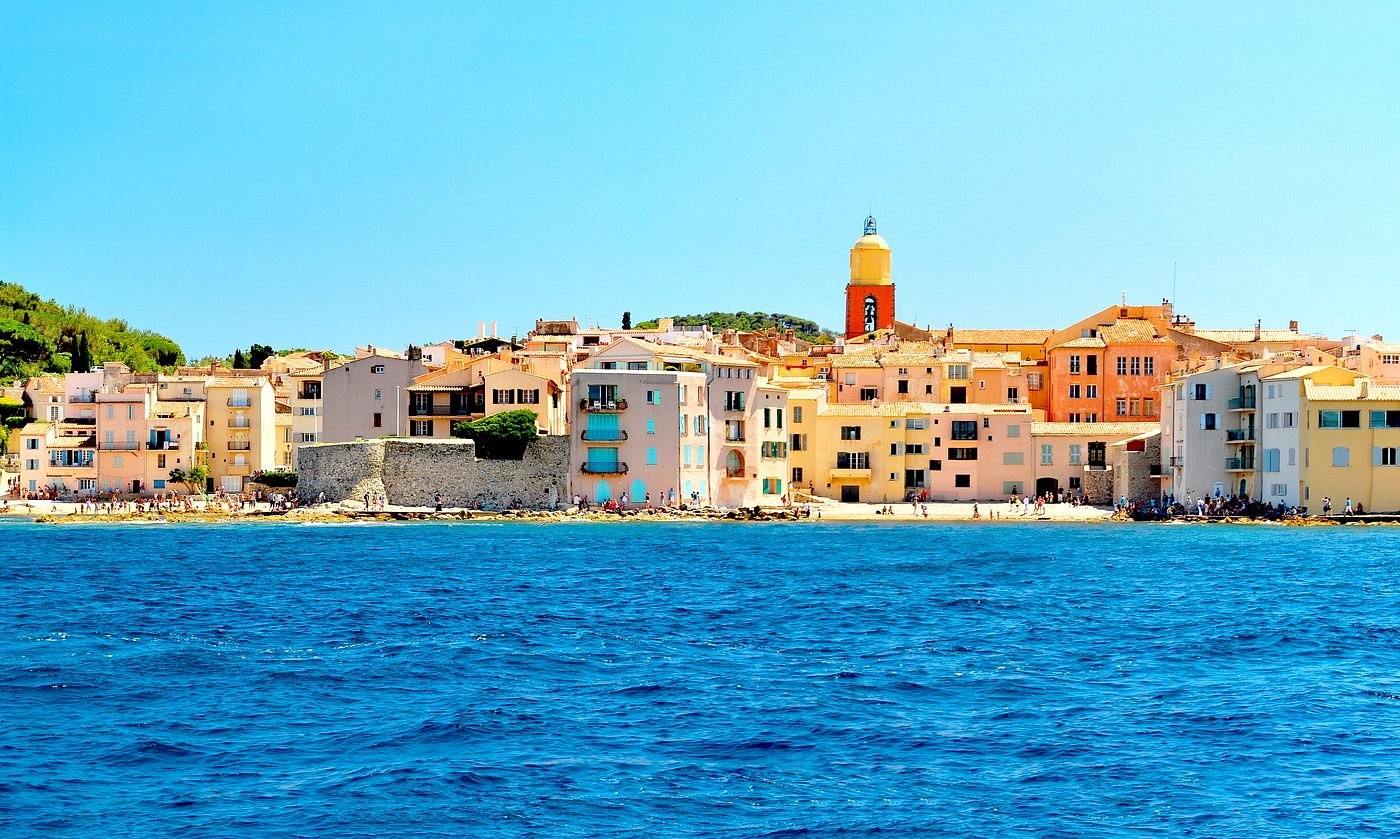
Saint-Tropez.
The adjacent narrow body of water is the Gulf of Saint-Tropez (Golfe de Saint-Tropez). Saint-Tropez was a military stronghold and fishing village until the beginning of the 20th century.
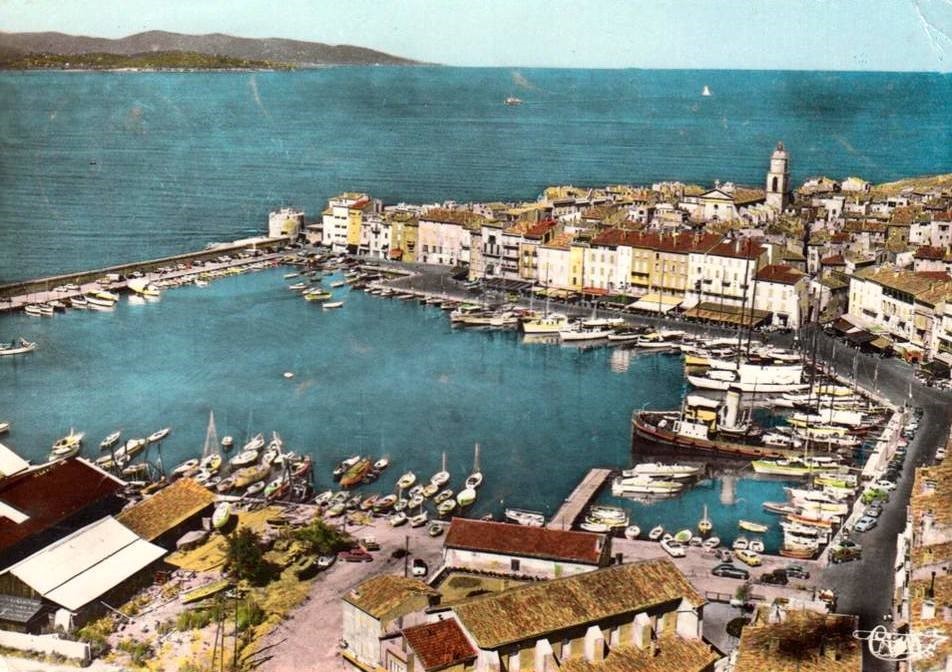
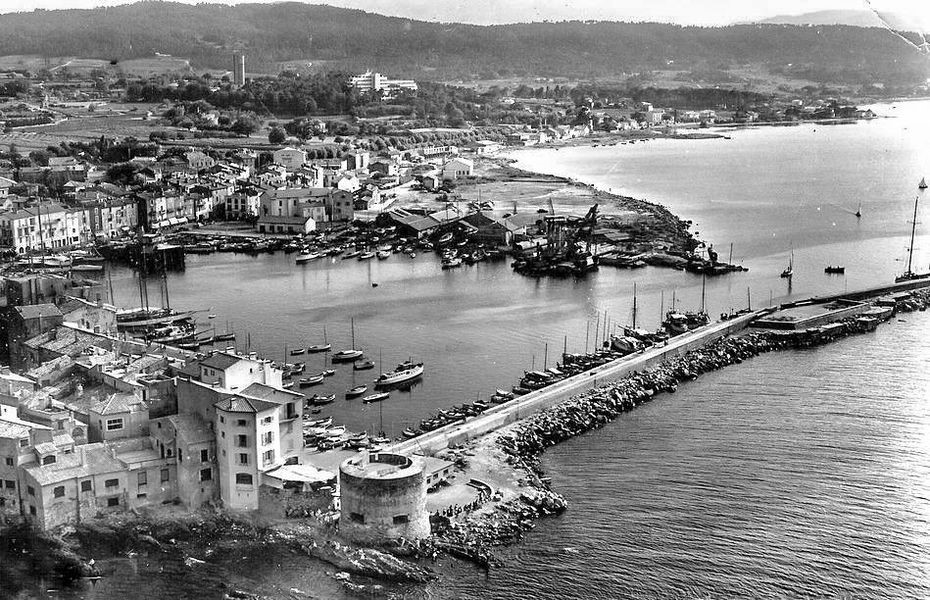
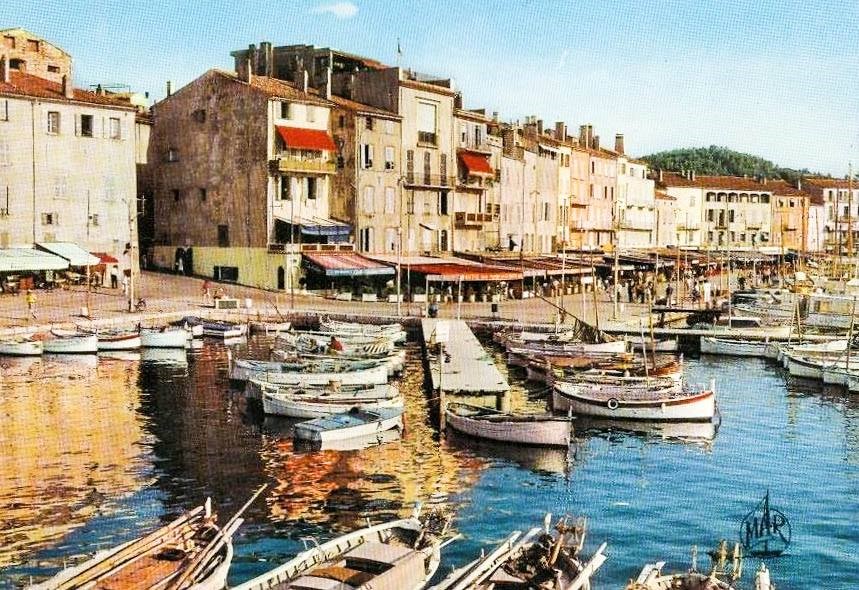
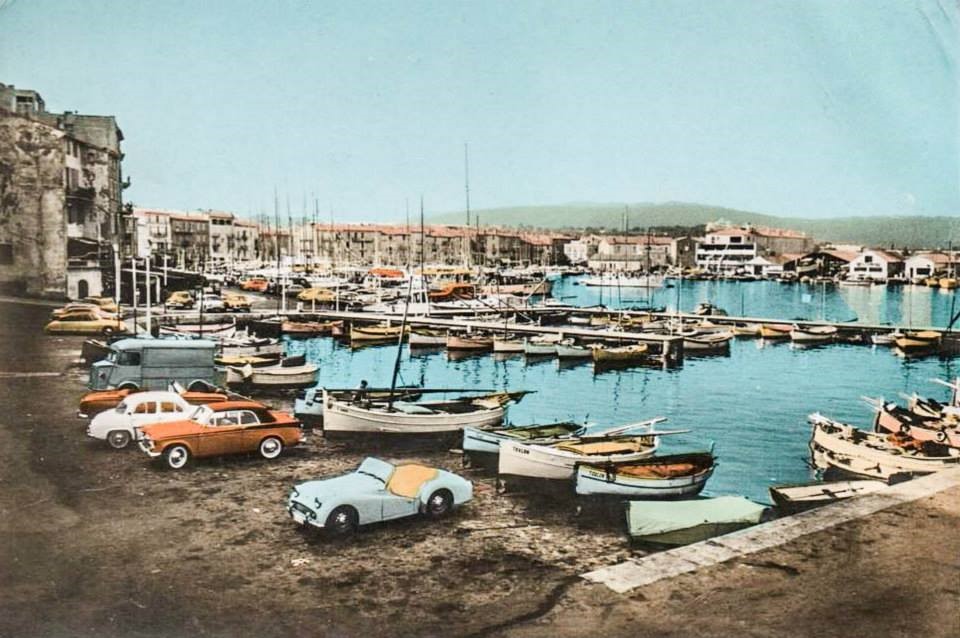
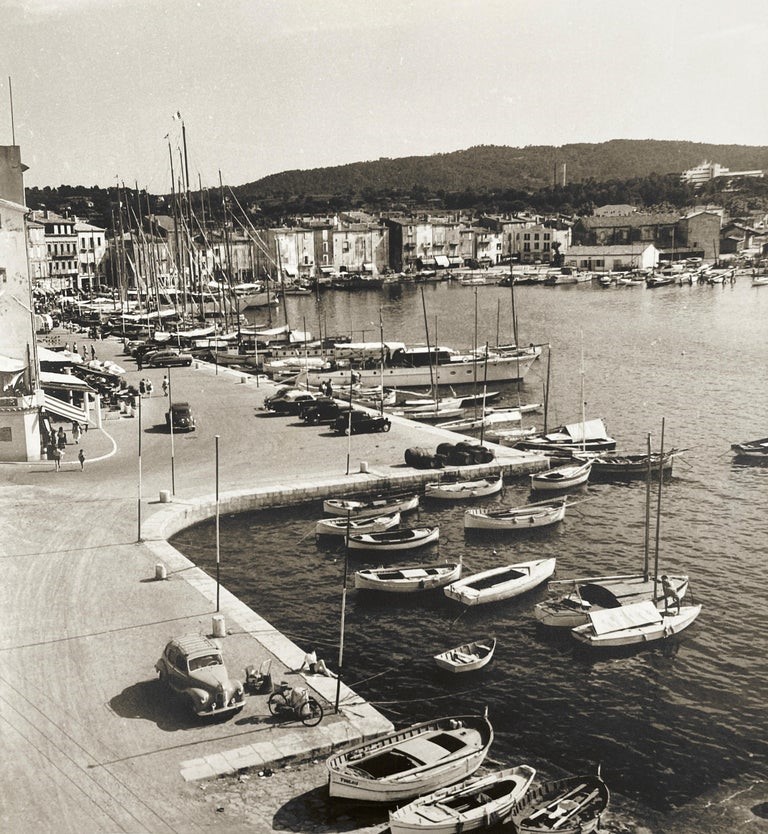
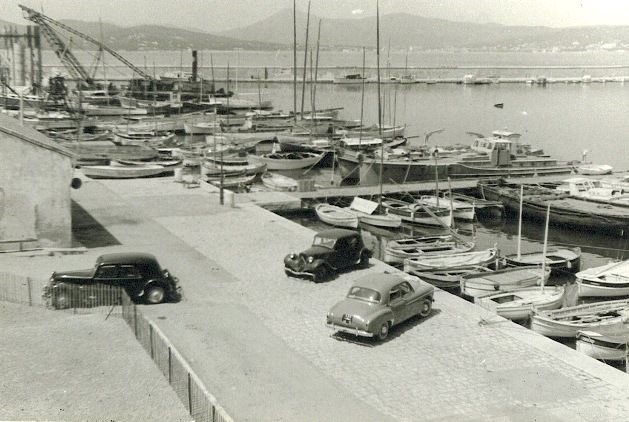
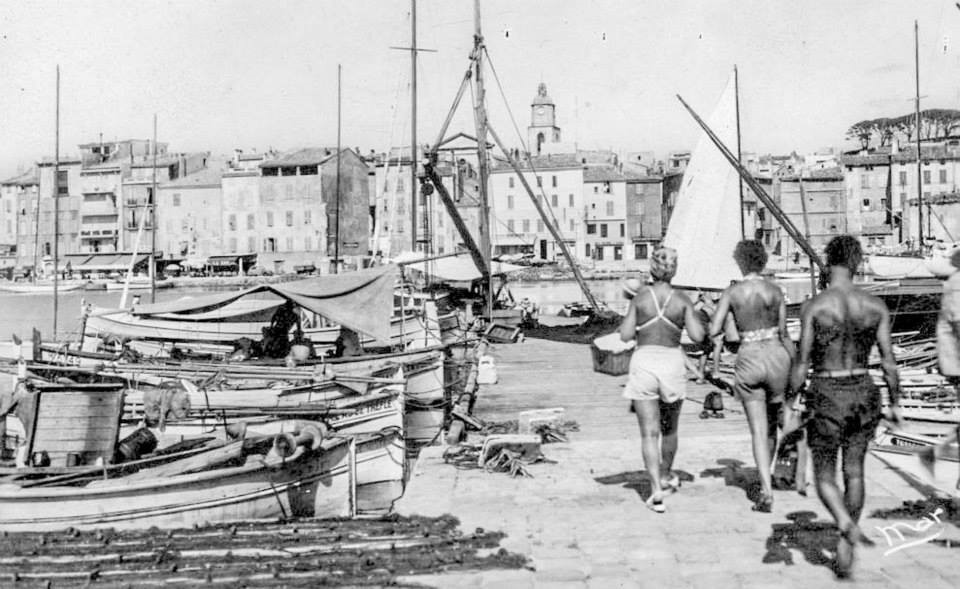
It was the first town on its coast to be liberated during World War II as part of Operation Dragoon.
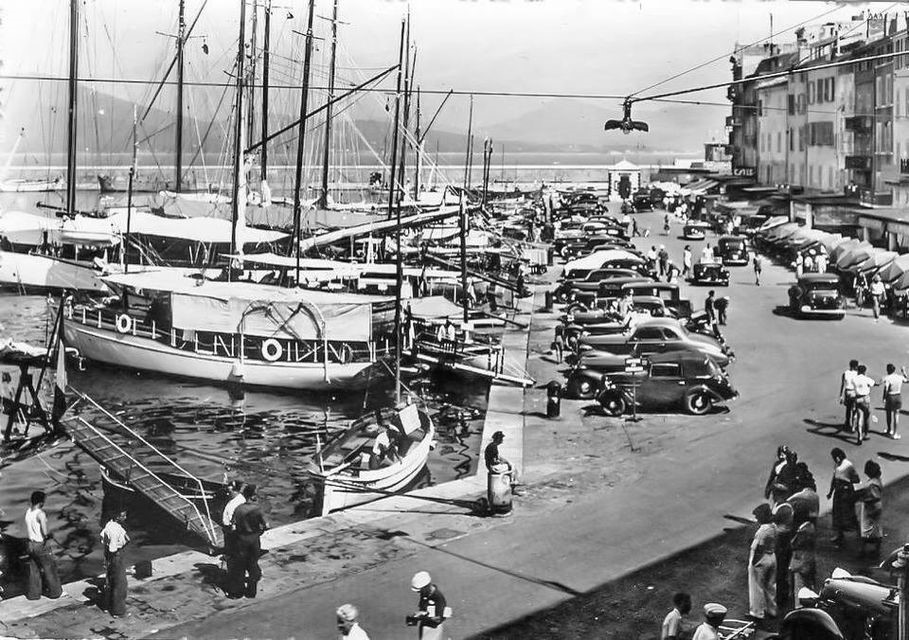
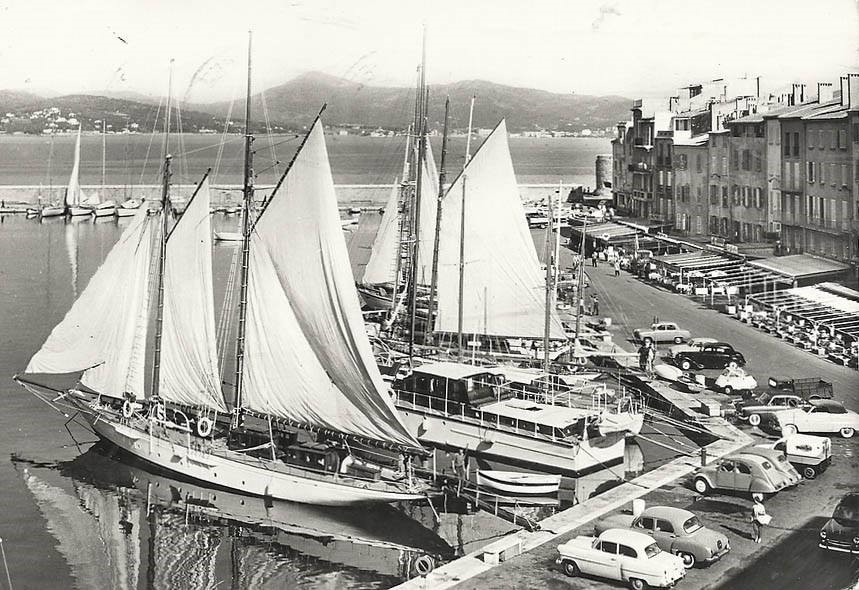
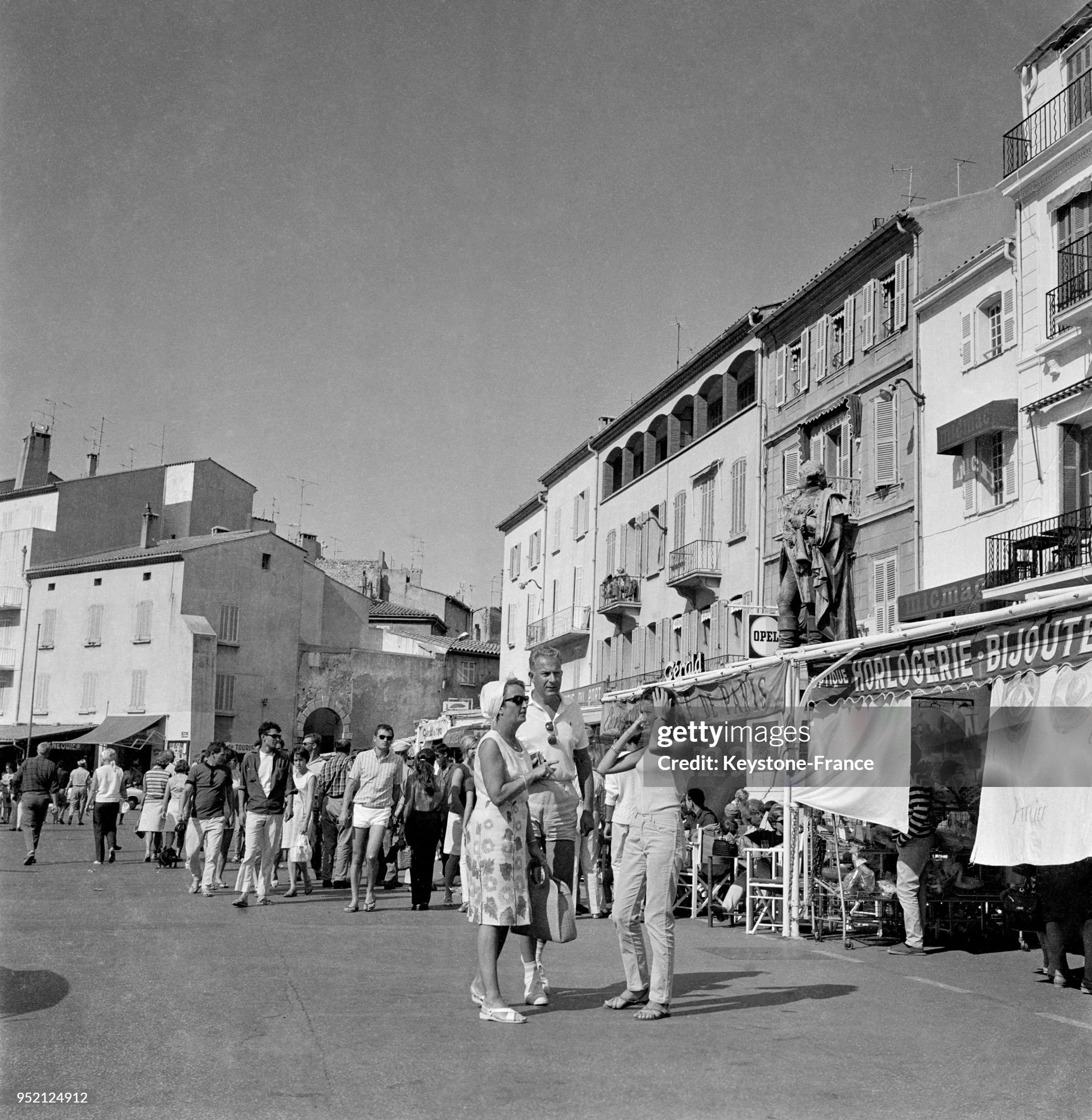
Street scene on the port of Saint-Tropez in 1950s. Photo by Getty Images.
After the war, it became an internationally known seaside resort, renowned principally because of the influx of artists of the French New Wave in cinema and the Yé-yé movement in music.
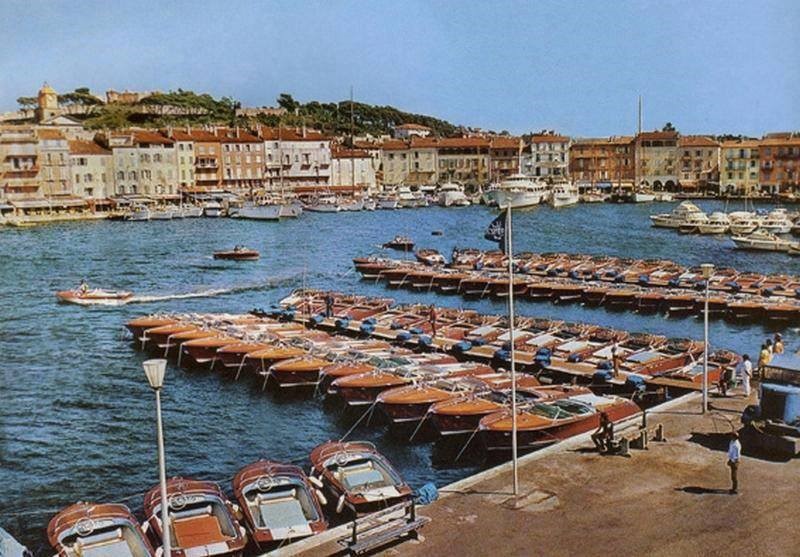
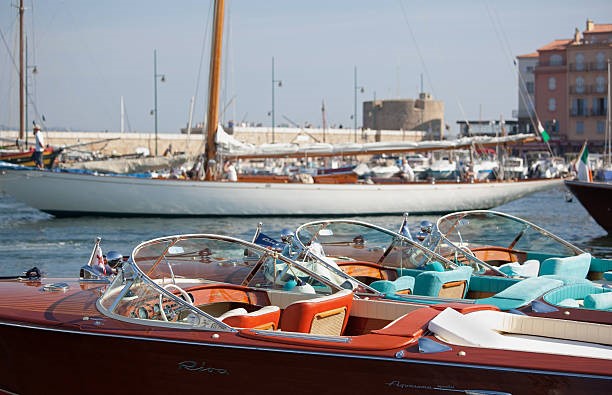
It later became a resort for the European and American jet set and tourists.
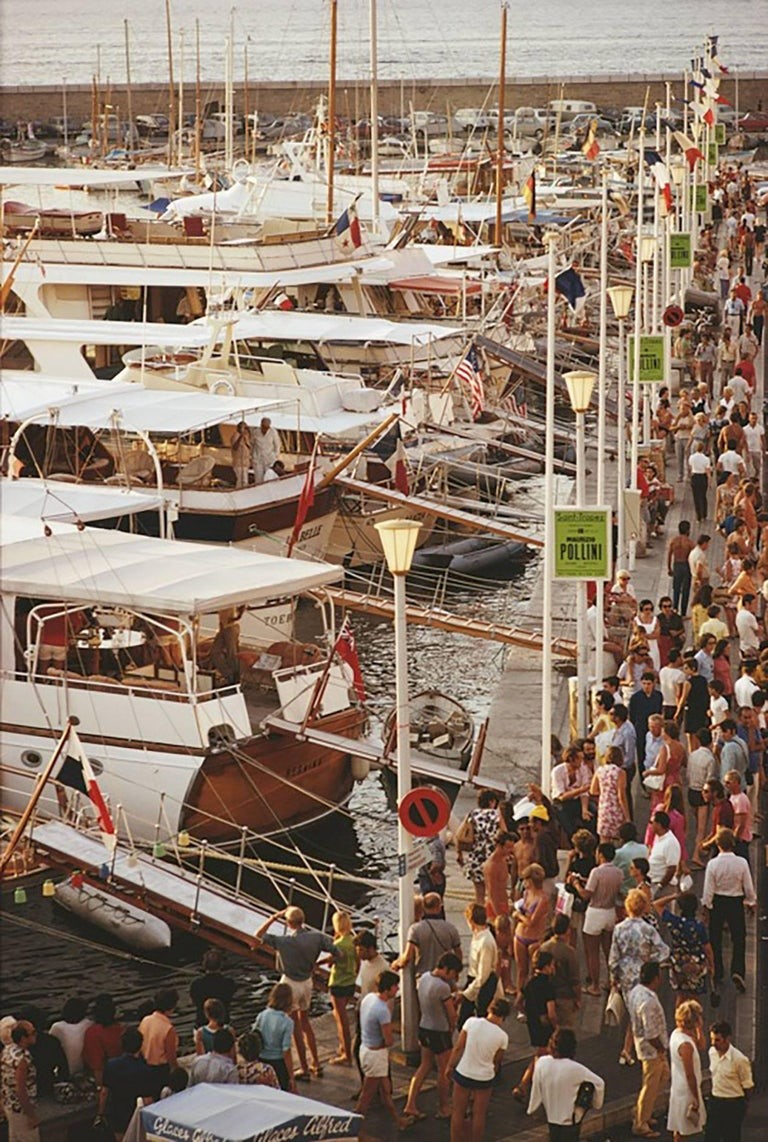
Saint-Tropez seafront in 1970. By Slim Aarons.
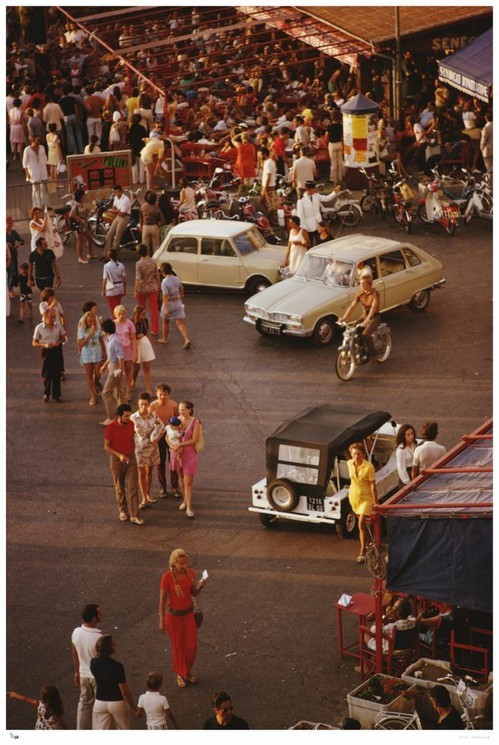
Cars and pedestrians on the busy seafront at Saint-Tropez, September 1970. By Slim Aarons.
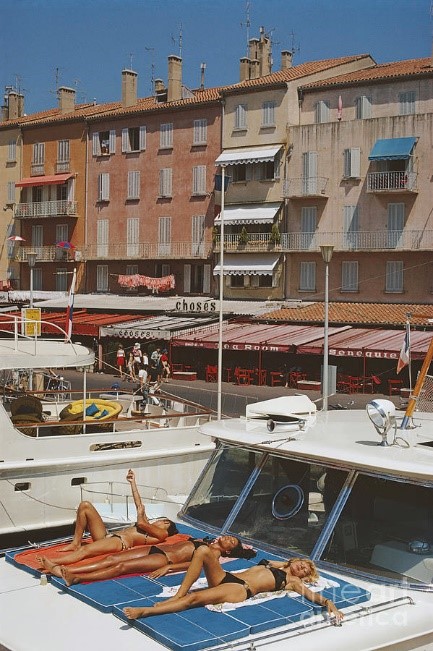
Holidaymakers on the deck of a yacht in Saint-Tropez in August 1971. Photo by Slim Aarons / Getty Images.
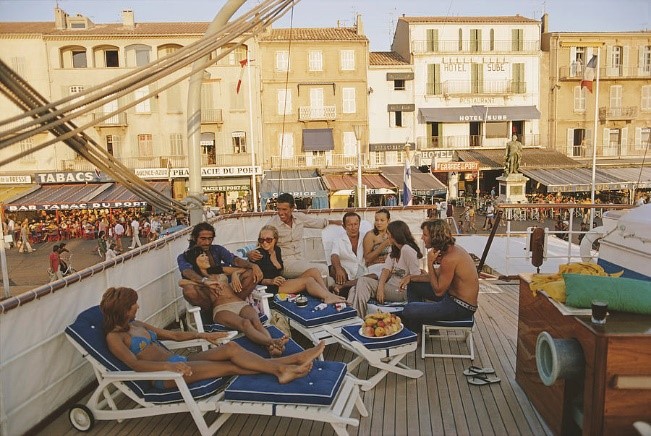
Holidaymakers on the deck of a yacht in Saint-Tropez in August 1971. Photo by Slim Aarons.
Tropezian beaches are located along the coast in the Baie de Pampelonne, which lies south of Saint-Tropez and east of Ramatuelle.
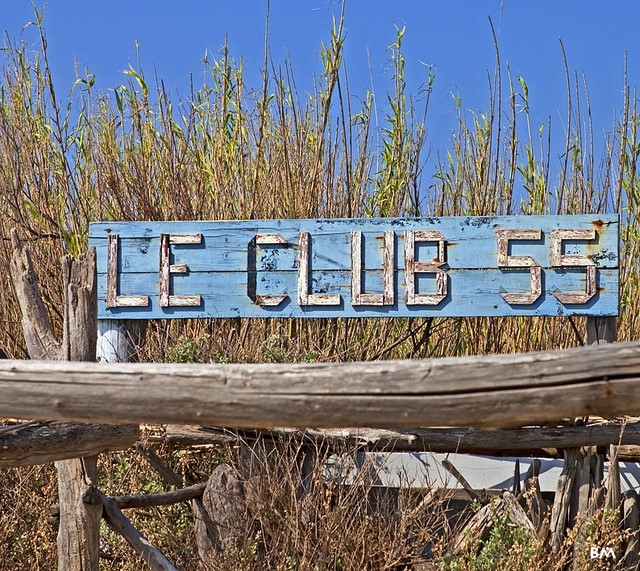
On a beautiful stretch of white sandy beach near Saint-Tropez, there are restaurants and bars that line up along the shore. Club 55, situated on this very beach, is the most famous of them all. Legendary in St. Tropez, this institution was named after the year it was founded. Despite being a celebrity hotspot on the luxurious sands of Pampelonne Beach, it still remains delightfully down-to-earth as an ode to its humble beginnings.
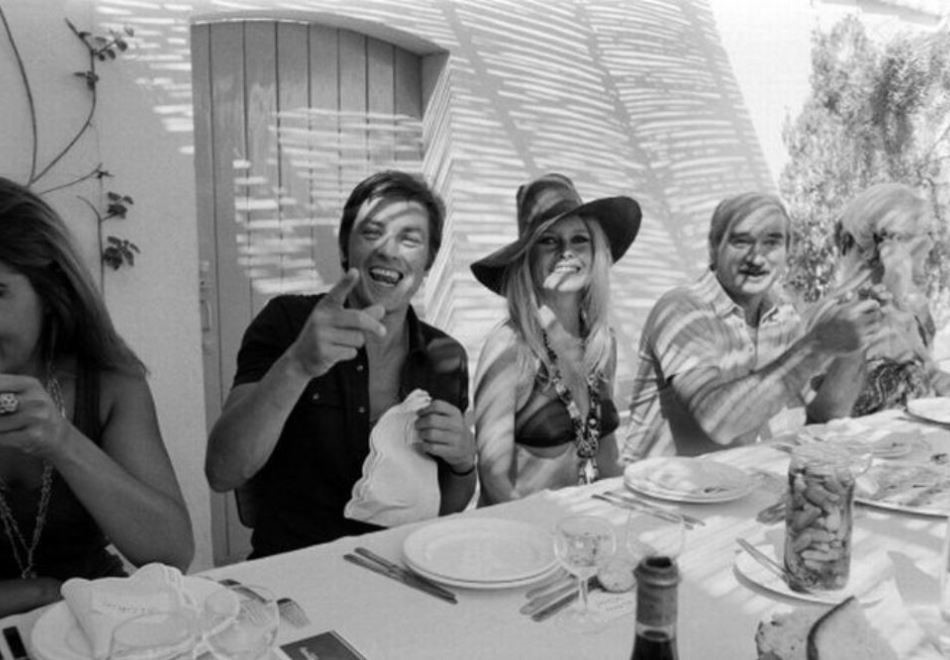
Alain Delon and Brigitte Bardot at Le Club 55.
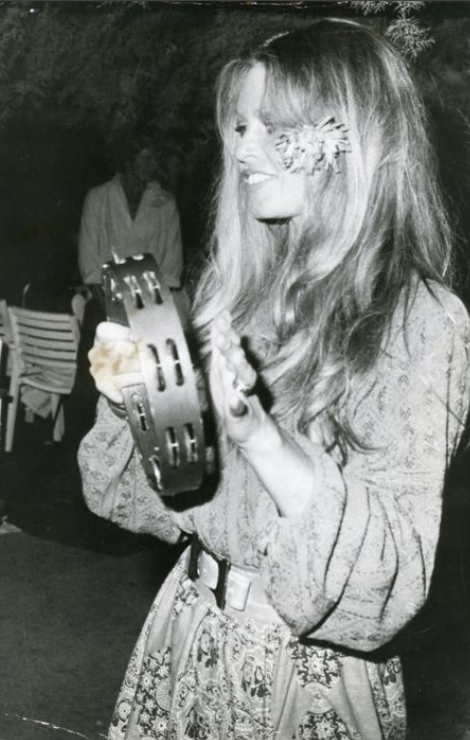
Brigitte Bardot at Le Club 55.
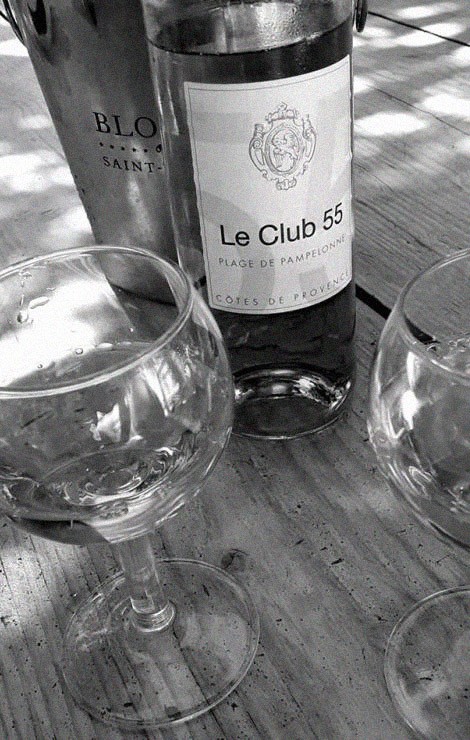
Photo by Richard Askew.
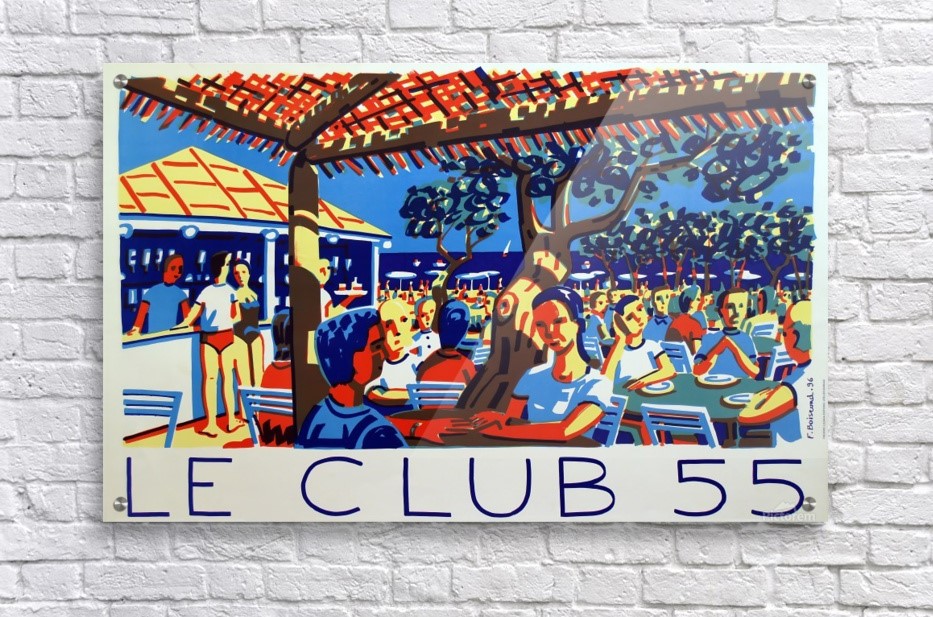
Pampelonne offers a collection of beaches along its five-kilometre shore.
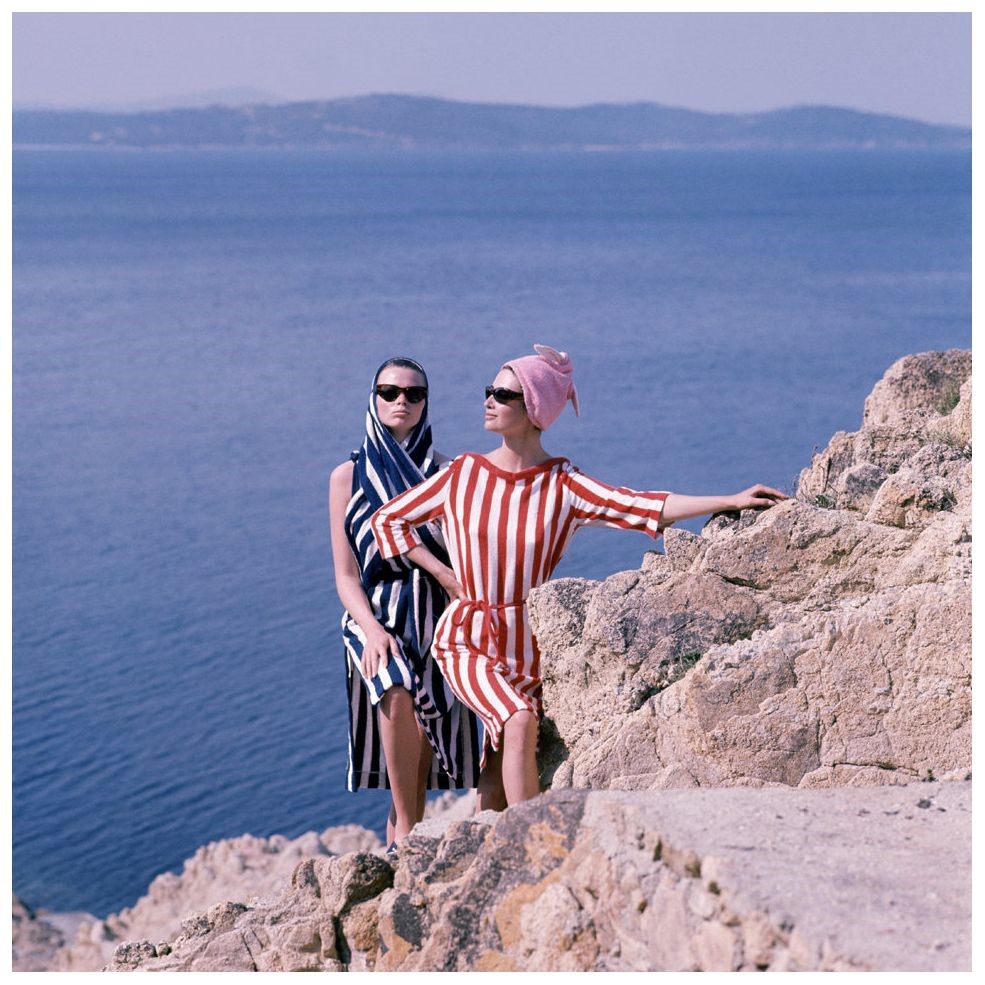
Elle magazine 1961. Saint Tropez style, Riviera fashion. Fashion photography.
Each beach is around 30 metres wide with its own beach hut and private or public tanning area. Some of the beaches are naturist beaches.
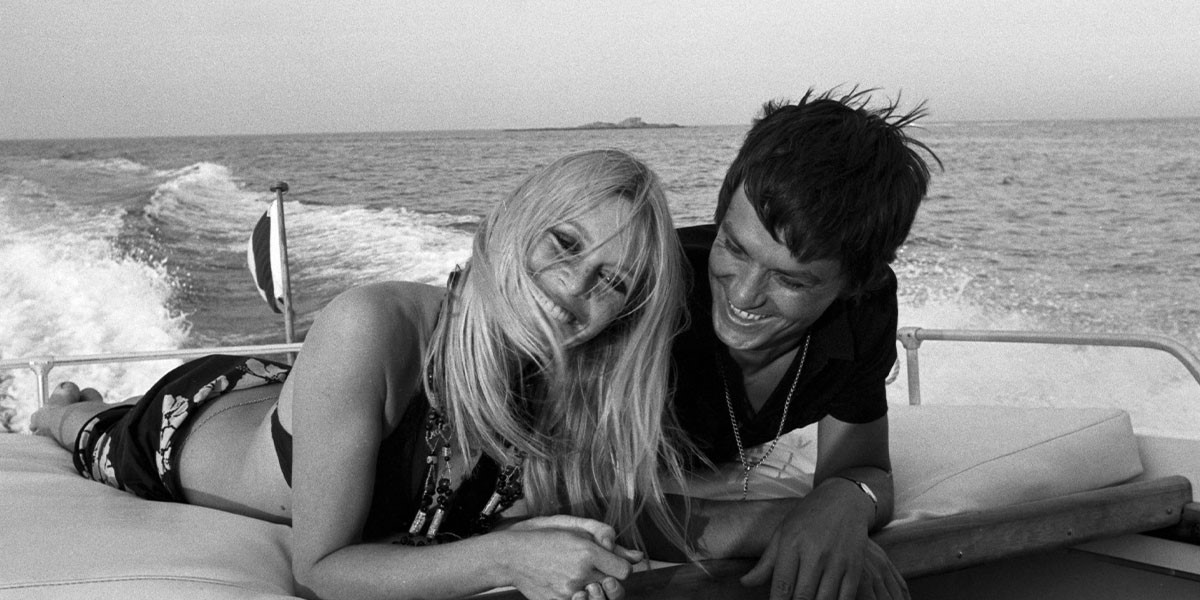
Brigitte Bardot and Alain Delon.
There are also many exclusive beach clubs. One of the most famous beaches is Bagatelle, a popular destination of many wealthy people from around the world. Saint-Tropez's Tahiti Beach, which had been popularized in the film “And God created woman” featuring Brigitte Bardot, emerged as a clothing-optional destination, but the mayor of Saint-Tropez ordered police to ban toplessness and to watch over the beach via helicopter.
The "clothing fights" between the gendarmerie and nudists become the main topic of a famous French comedy film series, “Le gendarme de Saint-Tropez” (The Troops of St. Tropez) featuring Louis de Funès. In the end, the nudist side prevailed.
Topless sunbathing is now the norm for both men and women from Pampelonne beaches to yachts in the centre of Saint-Tropez port. The Tahiti beach is now clothing-optional, but nudists often head to private nudist beaches, such as that in Cap d'Agde. The Tarte tropézienne is a traditional cake invented by a Polish confectioner who had set up shop in Saint-Tropez in the mid-1950s and made famous Brigitte Bardot.
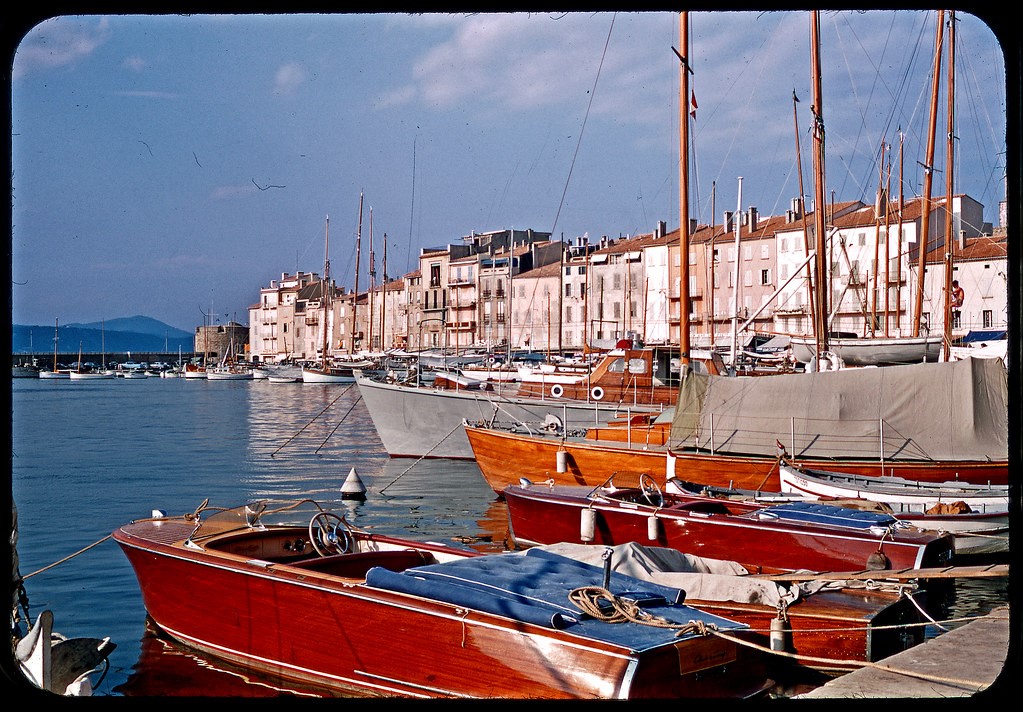
Vintage Kodachrome. August 1956, France. The famous port of Saint-Tropez. In those years, the small port of Saint Tropez was still a magical place, full of life, fantasy and good-natured. Admire the mahogany hulls and masts of pine wood, since replaced by the soulless and arrogant silhouettes of billionaires' yachts ... By Jean-Paul Margnac.
Long popular with artists, Saint-Tropez attracted the international "jet set" in the 1960s and remains known for its beaches and nightlife. The cobblestoned La Ponche quarter recalls its past as a fishing village, although yachts now outnumber fishing boats in the Vieux Port (Old Port).
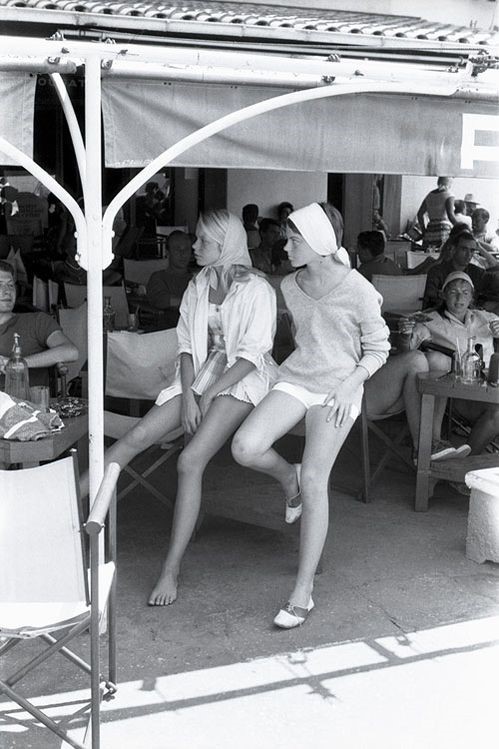
The golden age of Saint-Tropez captured by Willy Rizzo.
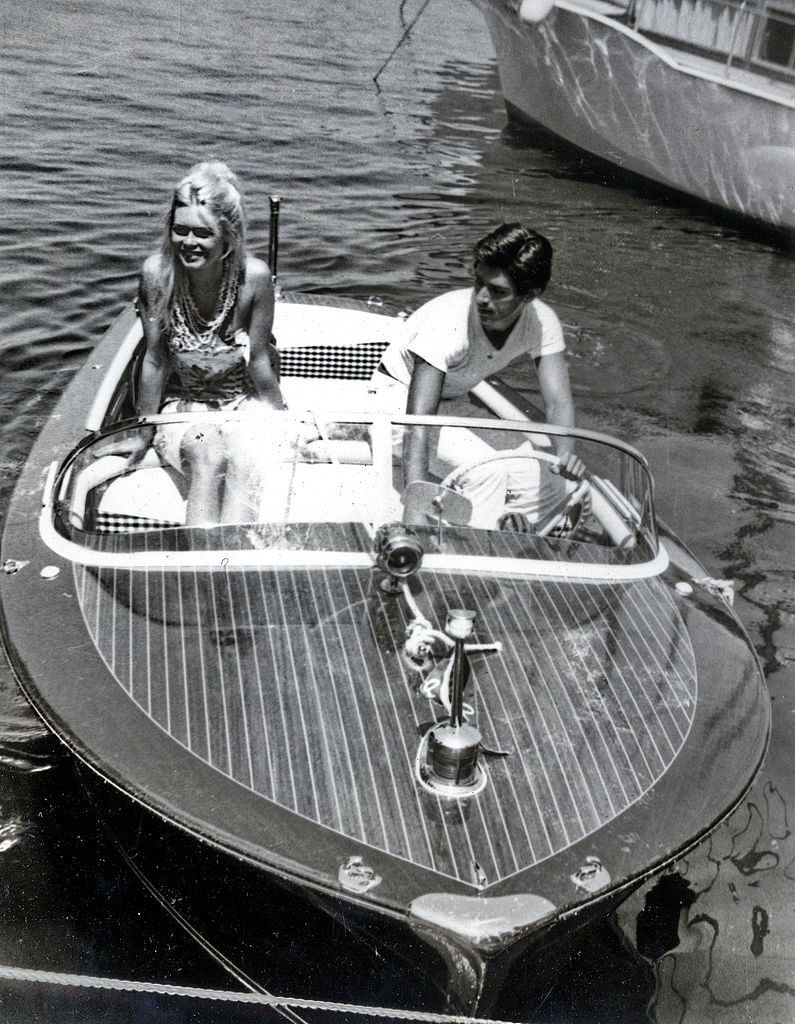
Actors Brigitte Bardot and Sami Frey in St Tropez in 1963. Credit Wiki Commons.
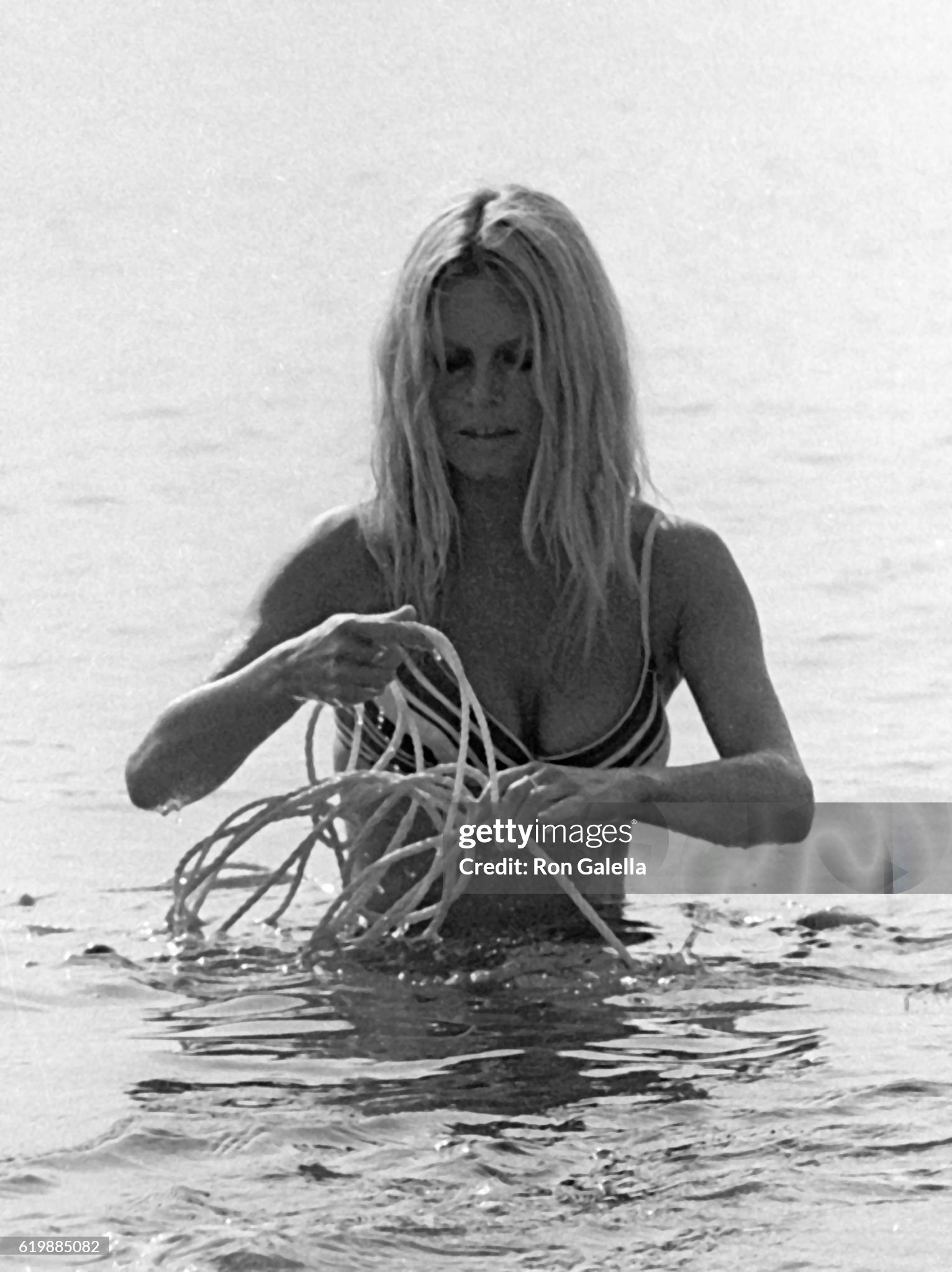
Brigitte Bardot sighted on September 01, 1968 in Saint-Tropez. Photo by Getty Images.
Whether it’s Brigitte Bardot strolling barefoot through the cobbled streets, a seductive Roger Vadim holding court on the terrace of Sénéquier, Jack Nicholson zipping around on his moped or a pensive Françoise Sagan by the sea, the photographers captured them at their finest in the iconic Saint-Tropez. In a series of magnificent photographs, they tell the story of a simple fishing village that from 1949 became the favorite haunt of the golden-skinned, young and beautiful…
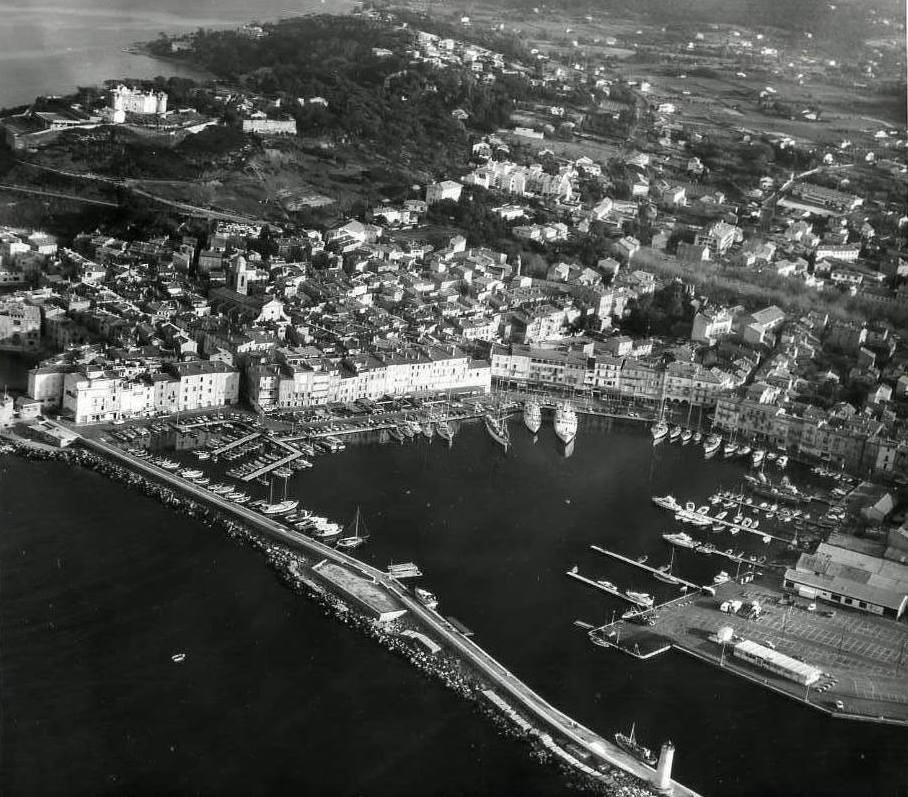
On the Mediterranean coast between Hyeres (40 km) and Sainte Maxime (14 km). International tourist mecca, Saint Tropez's mythical tame has played a large part in the renown of the whole French Riviera. In Saint Tropez everything is famous:
- Beaches: Bouillabaisse Beach, Caneliers Beach, Salins Beach, Pampelonne... there are at least 40 on the peninsula.
- There is the Place des Lices where movie stars and local stars get together to play a game of “boules’ or sip Pastis under the plane trees. Everybody, of course, wears their leather "Tropeziennes" sandals.
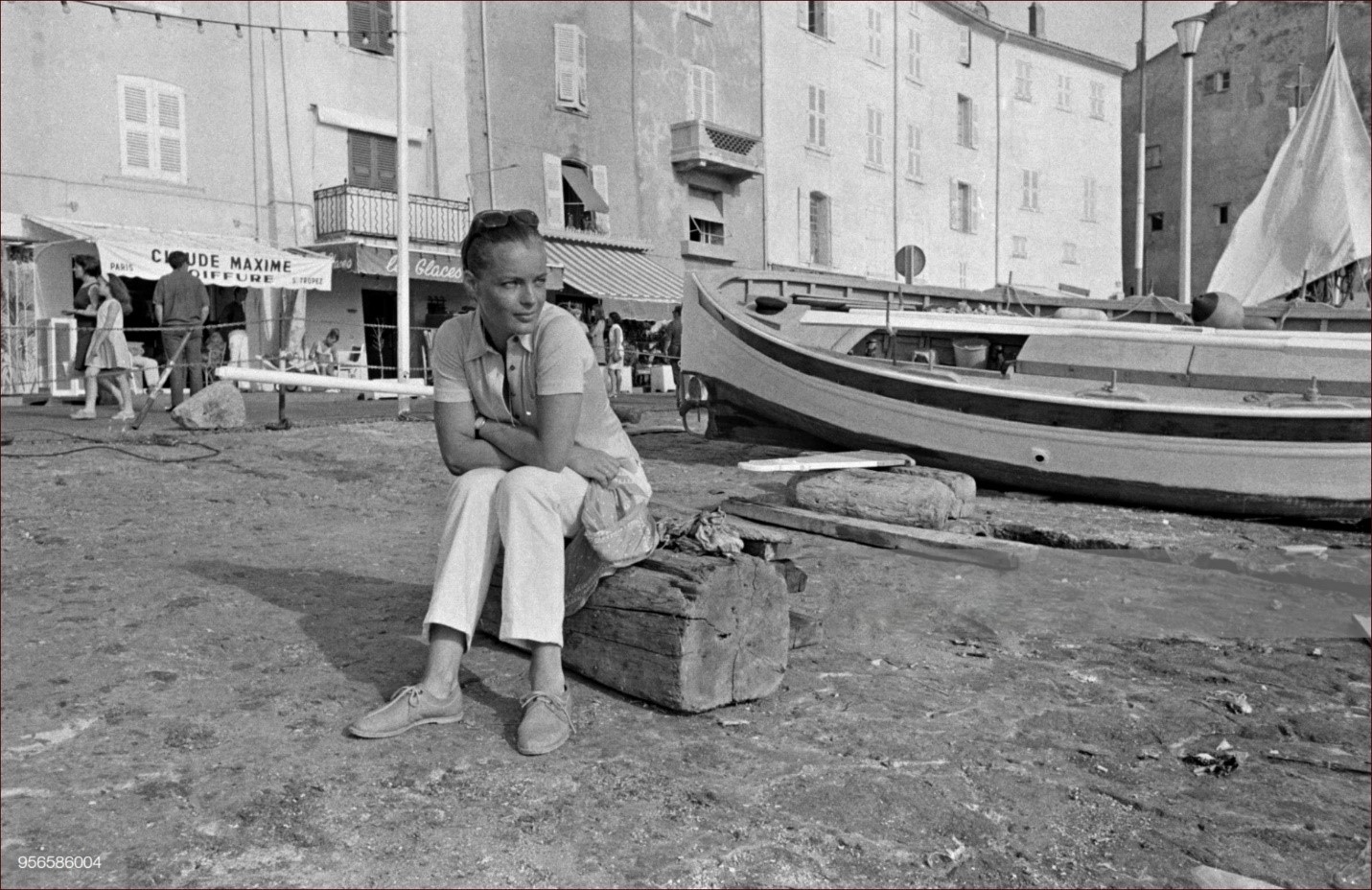
Romy Schneider in Saint Tropez in 1968.
St. Tropez became "St Trop" when the show business people, artists and writers all fell under the spell of this charming little port in the 1950's.
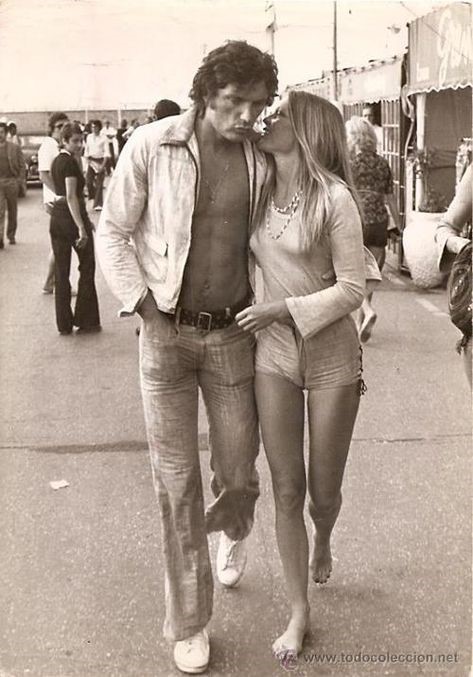
April 12, 1971. Brigitte Bardot with her boyfriend in Saint Tropez.
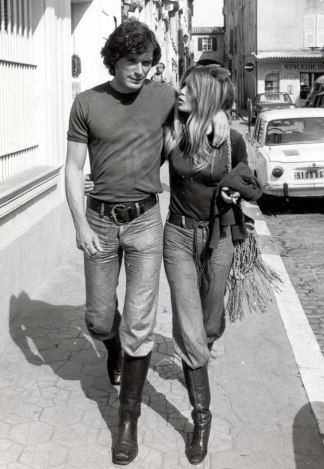
Brigitte Bardot and boyfriend Christian Kalt on holiday in St Tropez, December1971.
In the summer one could bump into Picasso, Francoise Sagan, Jacques Prevert and many others.
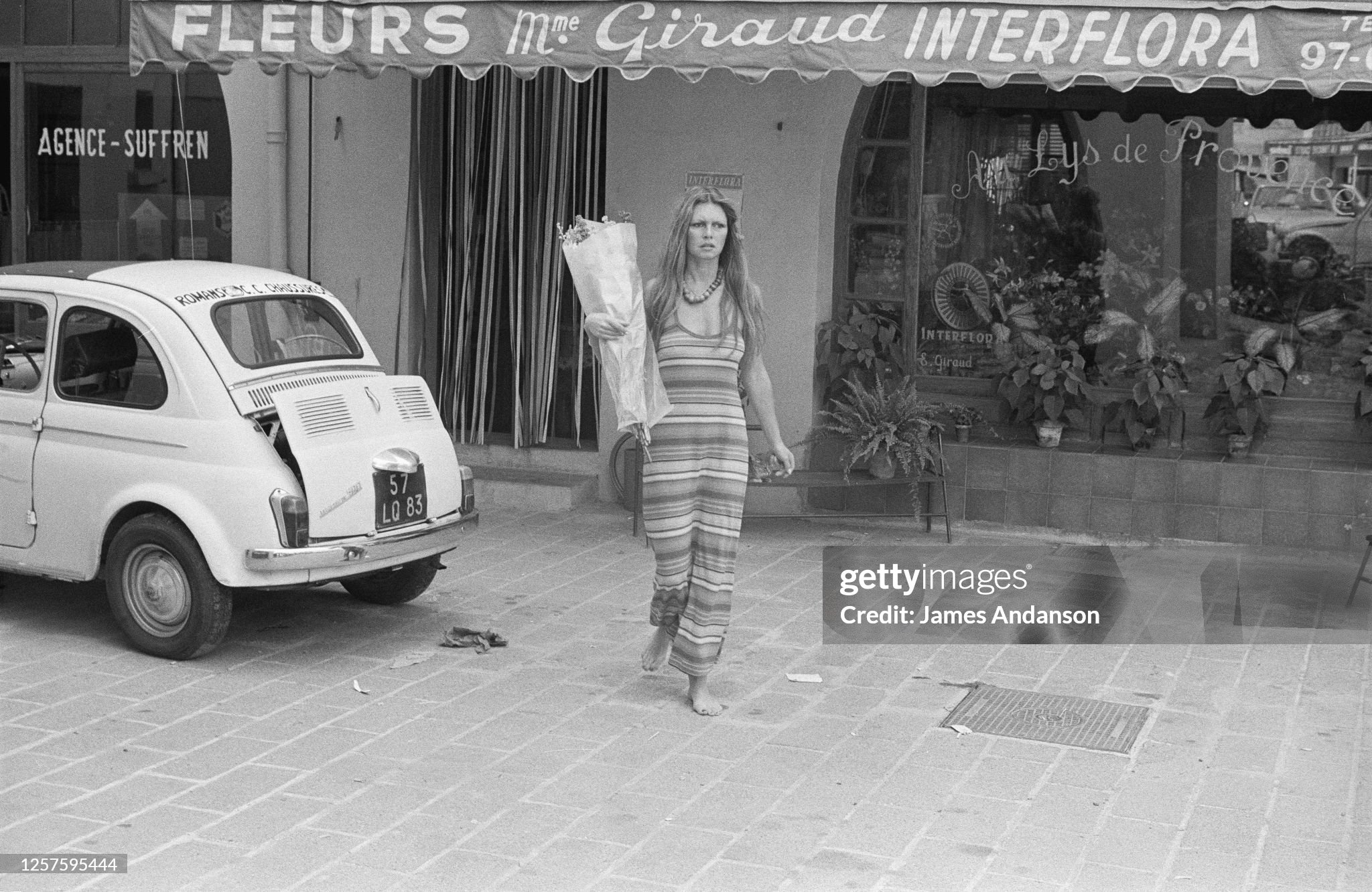
Brigitte Bardot in Saint Tropez.
With the arrival of Brigitte Bardot in the 60's the myth was installed for good.

Do you, do you, do you Saint Tropez?
Since then St. Tropez has become the in vacation spot for chic Parisians and the international Jet Set.
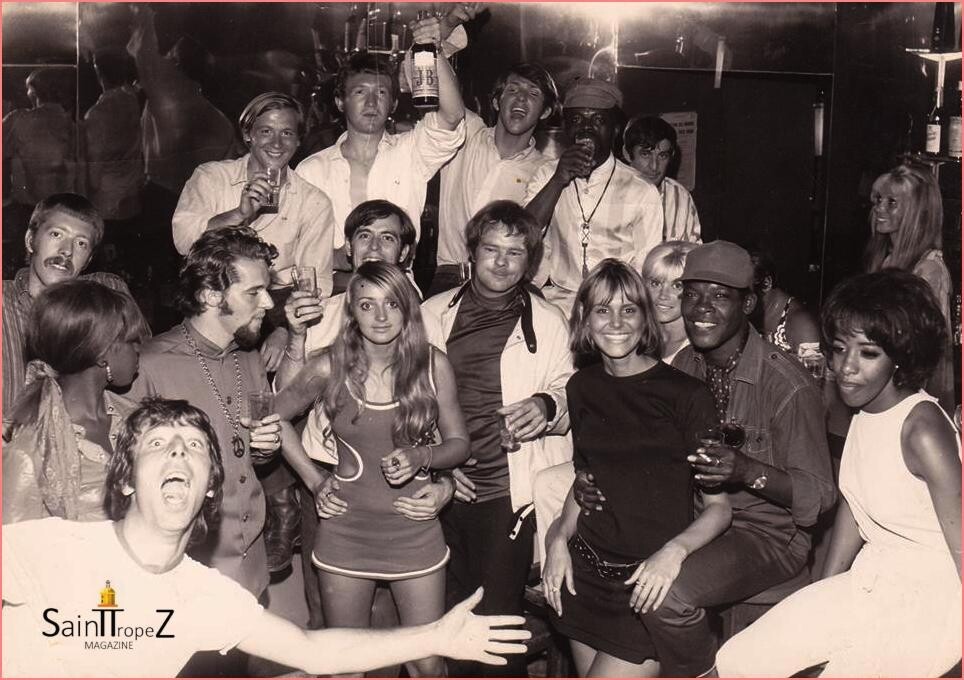
Vip room in 1968. By Saint-Tropez Magazine.
The nightlife is very lively, several private parties are held each evening in the luxurious villas of the gulf where some of the guests arrive by helicopter to avoid traffic jams. People watching is a favorite sport here in the summer.
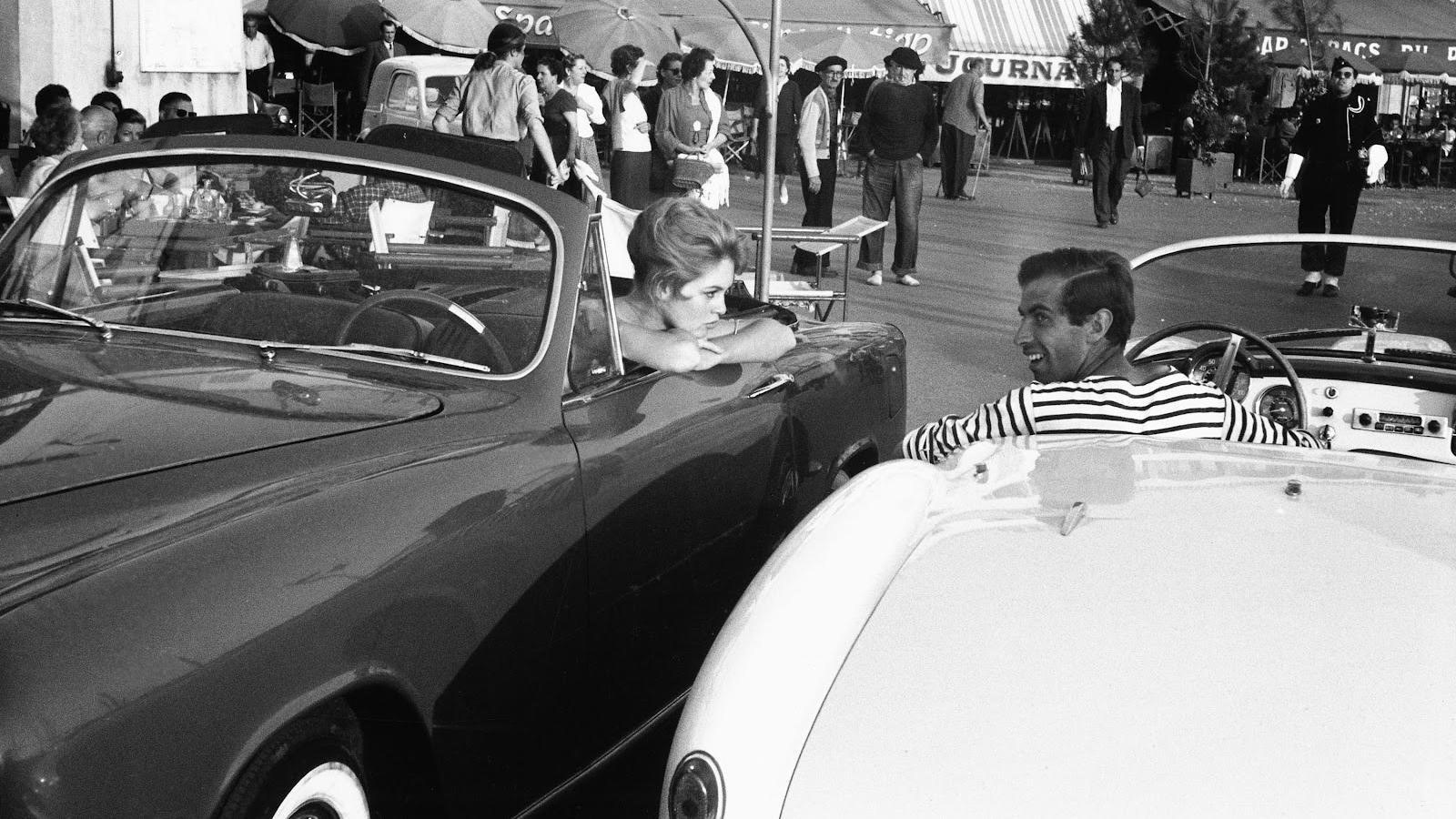
Whether they have two wheels or four, legendary vehicles are in the spotlight in Saint-Tropez. Photo by Michou Simon.
Visitors like to sit at the outdoor cafés hoping either to be seen or to see someone else. Competition is rife. Huge yachts line up in the port rivaling to see which is the biggest, the prettiest, the best kept, or has the snappiest crew.
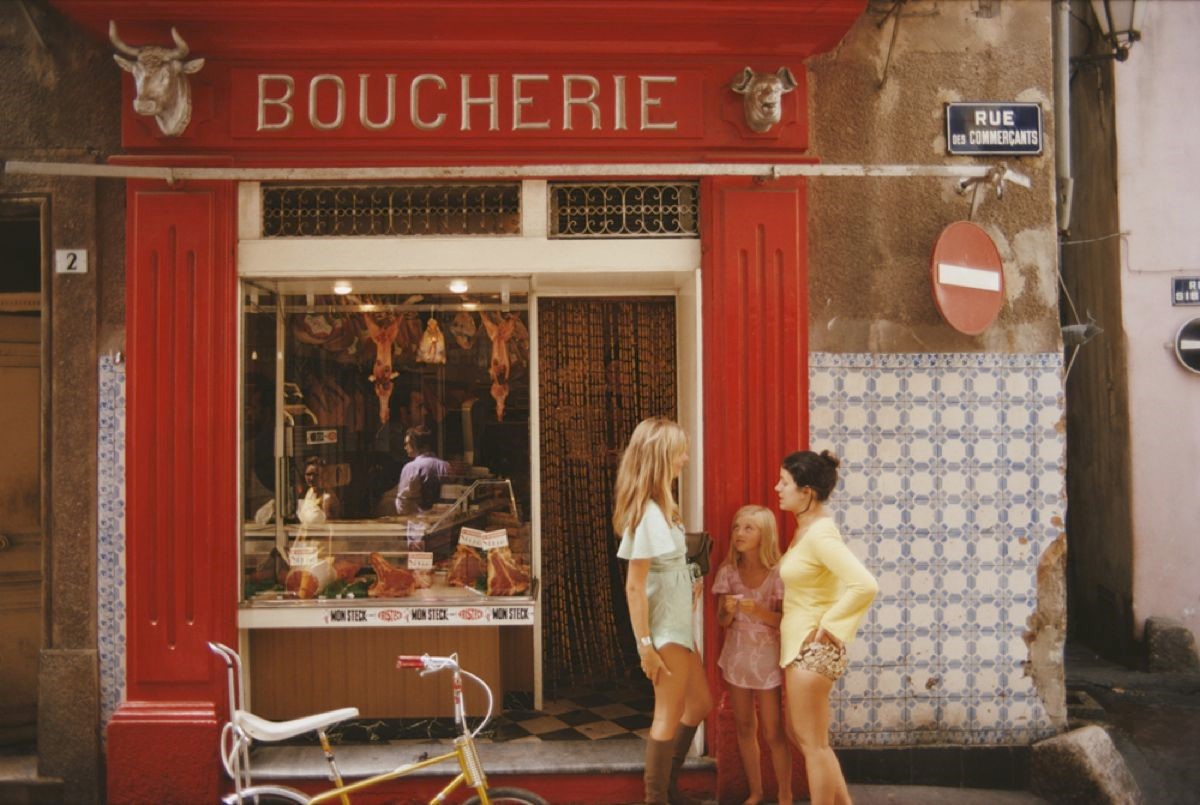
A boucherie or butcher's shop on Rue des Commercants in Saint-Tropez, on the French Riviera, August 1971. Photo by Slim Aarons/Getty Images.
If you have the choice, prefer the months of May, June and September to enjoy St Tropez. Without the crowds, old St Tropez will reveal itself with its charming little alleys and flowers in warm colors... Early in the morning, Place aux Herbes offers vegetables, fruit and flowers next to the marina where some fishermen live who sell their fish on the market, not far from the famous breweries "Le Gorille" and "Senequier". A typical Provencal market is held every Tuesday and Saturday morning in the Place des Lices. Religious and festive processions called "Bravades" are lively celebrations which begin in May and continue until the 15th of June.
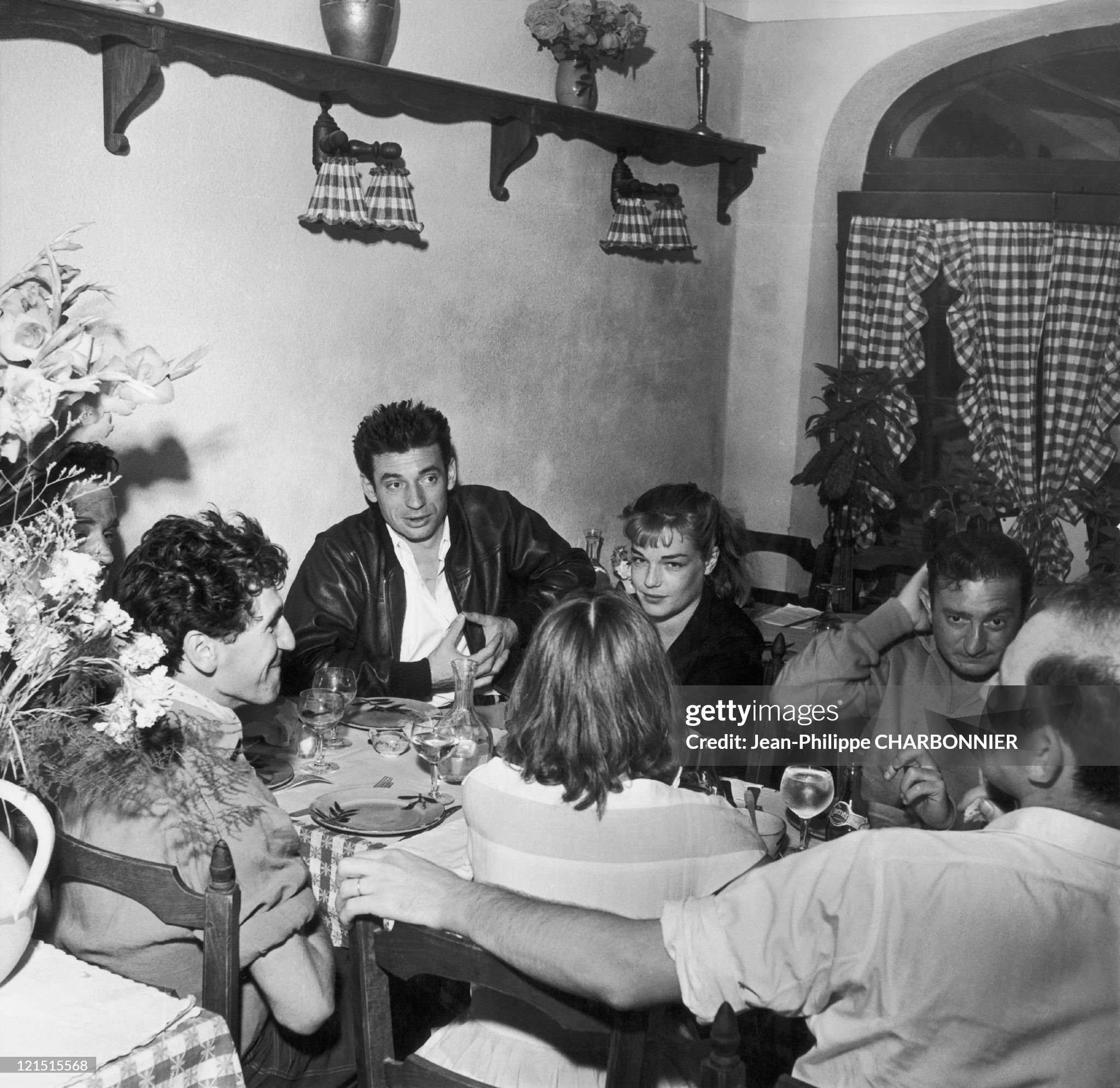
Henri Crolla, his back to the camera, guitarist, Saint-Tropez, 1950. Photo by Jean-Philippe Charbonnier/Gamma-Rapho/Getty Images.
Brigitte Bardot frolicked on the beaches of St. Tropez in the '50s; now it's the playground of rap stars and international socialites.
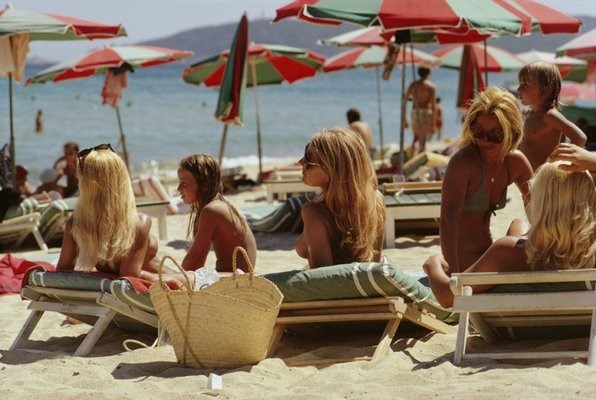
Saint-Tropez beach. By Slim Aarons.
Most of the sandy hot spots lie southwest of town on the Baie de Pampelonne.
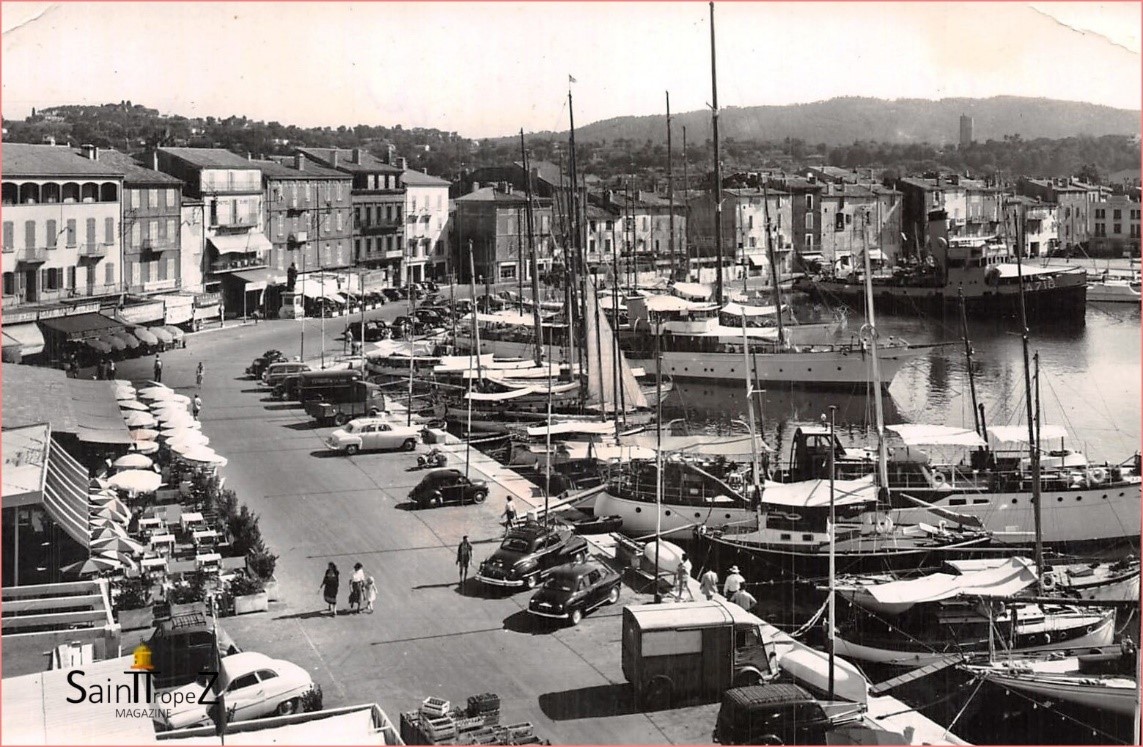
The name Saint-Tropez evokes images of sunbathing celebrities, designer boutiques and luxury yachts. It's hard to believe this stylish and upscale town was once just a humble fishing village.
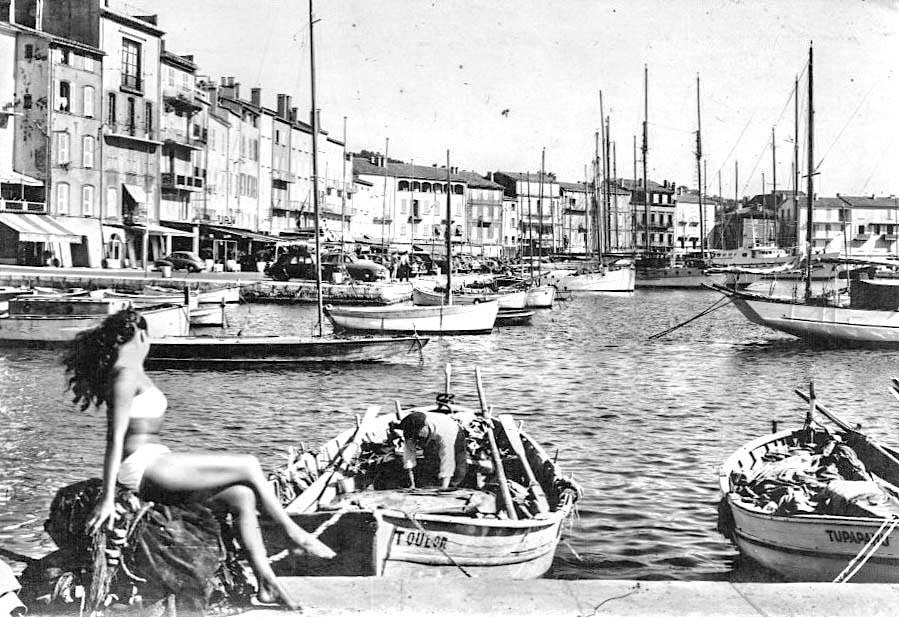
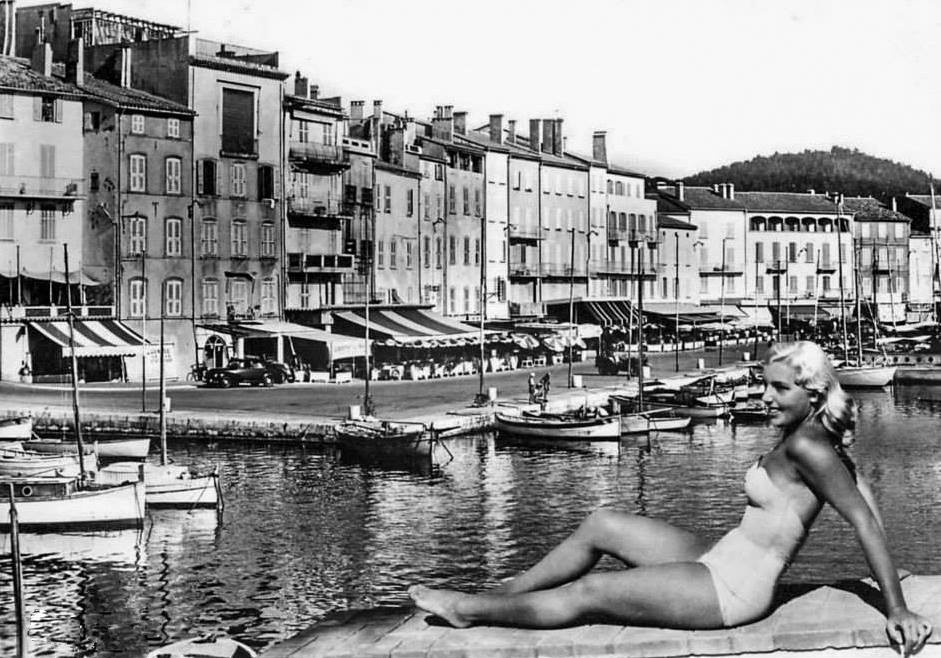
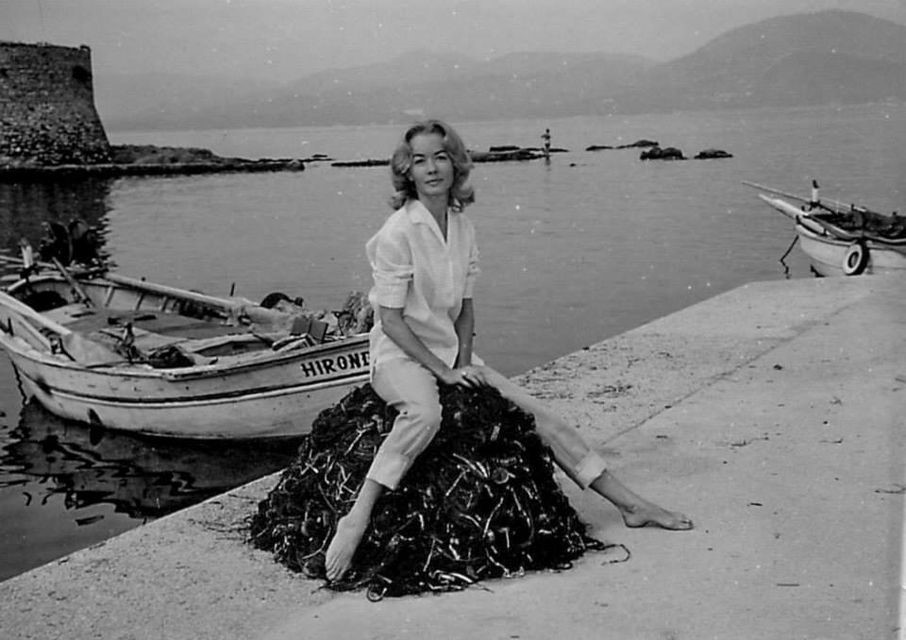
The appeal of Saint-Tropez was first discovered in the late 19th century by the Impressionist painter Paul Signac, who later lured artists such as Matisse and Marquet here. Then, in 1955, the film Et Dieu créa la femme forever changed this small port town into a legendary seaside resort, sparkling amid the glitz of the Côte d'Azur. Saint-Tropez is one of the best places to visit in France to experience the glamour and beauty of the French Riviera.
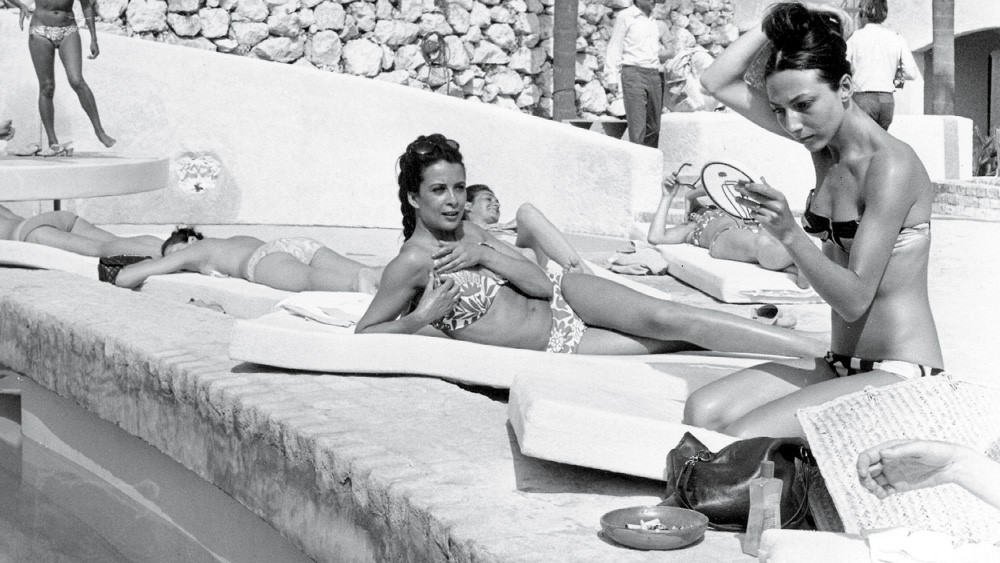
Beach babes.
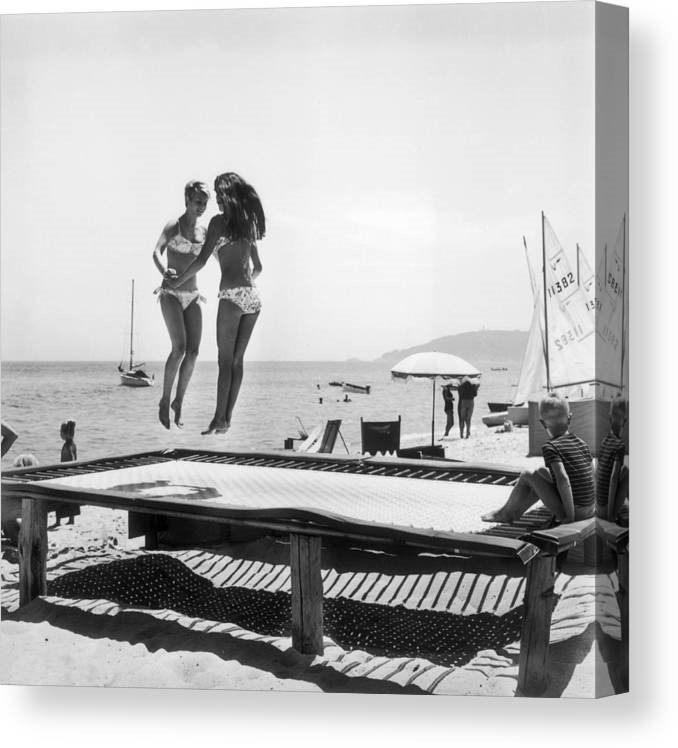
A trampoline on Saint-Tropez beach. By Keystone-France.
This sun-drenched resort town offers gorgeous sandy beaches and exclusive beach clubs along with a delightful historic village.
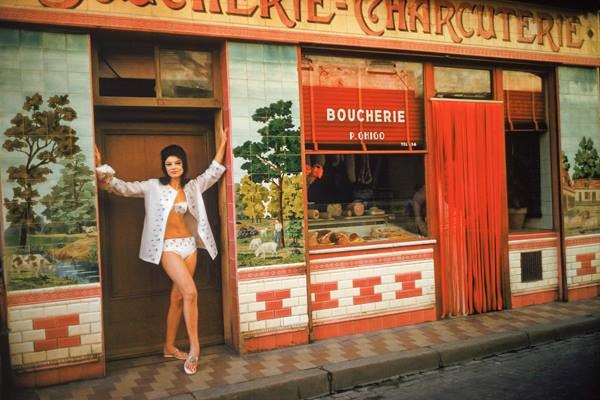
The village of Saint-Tropez is full of old-world charm, seen in its picturesque pastel-colored houses, narrow cobblestone streets and shady squares.
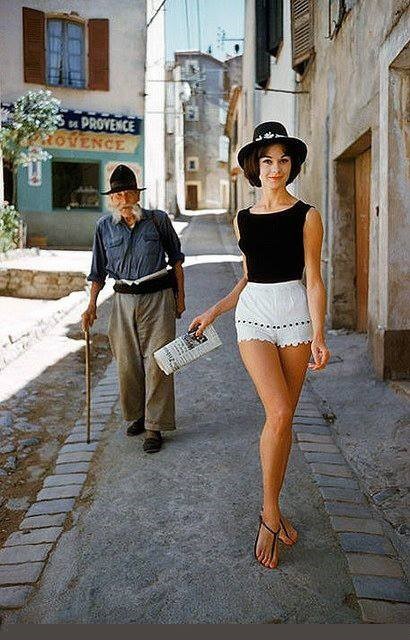
The seaside scenery adds to the allure, with its mesmerizing deep-blue waters and Mediterranean countryside featuring pine trees, olive groves, and cypresses.
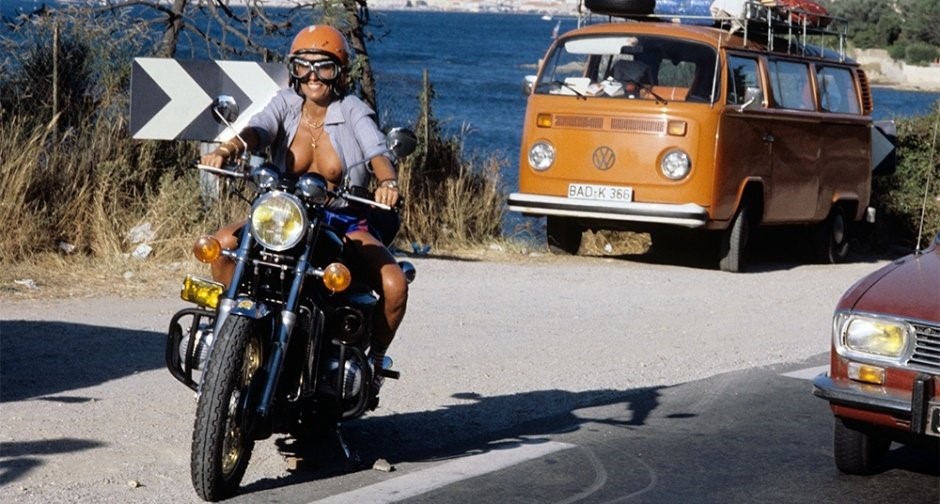
Photo: Jack Garofalo/Paris Match via Getty Images.
Snapshot, 1979: Luftgekühlt in Saint-Tropez. 22 July 2018.
Towards the end of the 1970s, the most in-vogue outfits on the beaches of Saint-Tropez were those chosen by Adam and Eve. In this particular case, why would you ride from the shore to a bar in the harbour in heavy leather overalls when you can dry so wonderfully in the airstream?
It’s the wild 1970s and the kilometre-long Pampelonne beach near Saint-Tropez is known not only for its fine sand and turquoise-blue ocean but also for its countless nudist bathers. Anyone who hasn’t mixed it with the bronzed naturists before should at least be familiar with the films of Louis de Funès, who played a voyeuristic gendarme on these very beaches. This lady, photographed by Jack Garofalo for Paris Match, appears to have embraced the textile-shy spirit of Saint-Tropez.
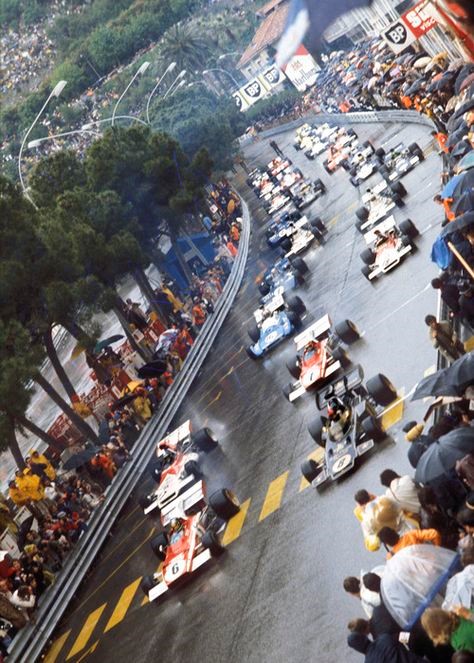
The Monaco Grand Prix, French: Grand Prix de Monaco, is a F1 motor racing event held annually on the Circuit de Monaco, in late May or early June. Run since 1929, it is widely considered to be one of the most important and prestigious automobile races in the world and is one of the races — along with the Indianapolis 500 and the 24 Hours of Le Mans — that form the Triple Crown of Motorsport.
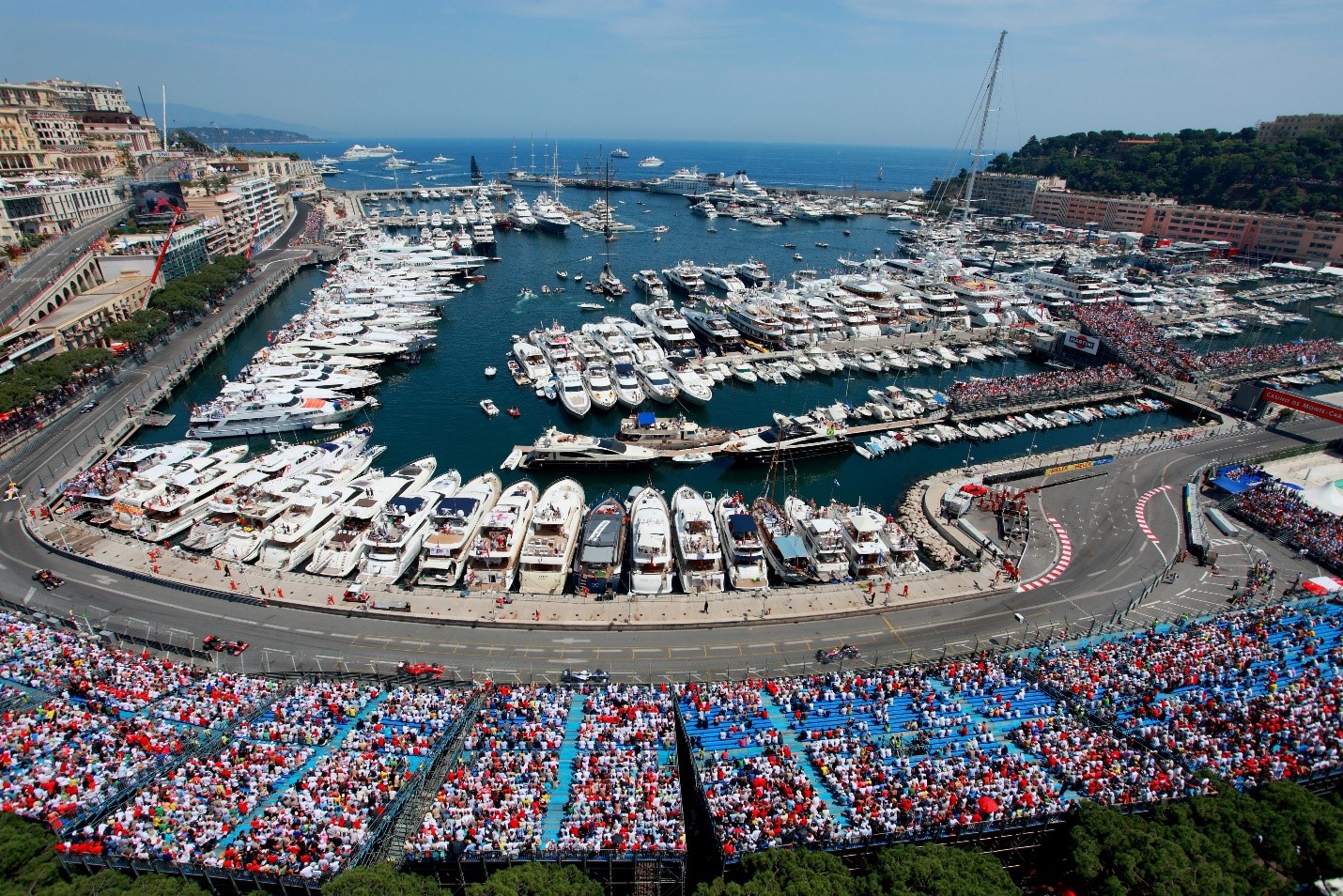
The circuit has been called "an exceptional location of glamour and prestige". The race is held on a narrow course laid out in the streets of Monaco, with many elevation changes and tight corners as well as a tunnel, making it one of the most demanding tracks in F1. In spite of the relatively low average speeds, the Monaco circuit is a dangerous place to race due to how narrow the track is. It is the only Grand Prix that does not adhere to the FIA's mandated 305-kilometre (190-mile) minimum race distance for F1 races. The Monaco Grand Prix was part of the pre-Second World War European Championship and was included in the first World Championship of Drivers in 1950.
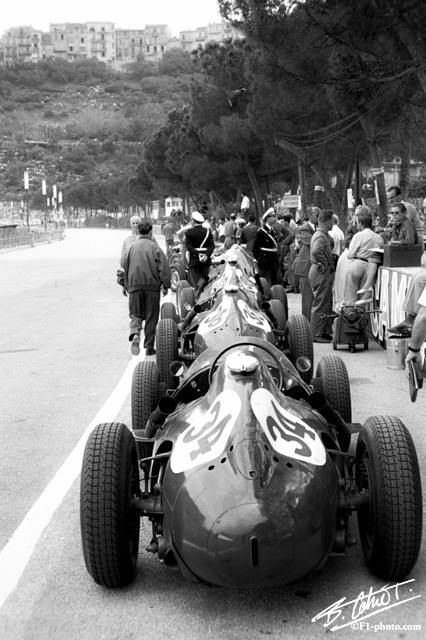
The Ferraris n°34 of Luigi Musso and n°36 of Peter Collins, second and third at 1958 Monaco Grand Prix. F1 History & Legends.
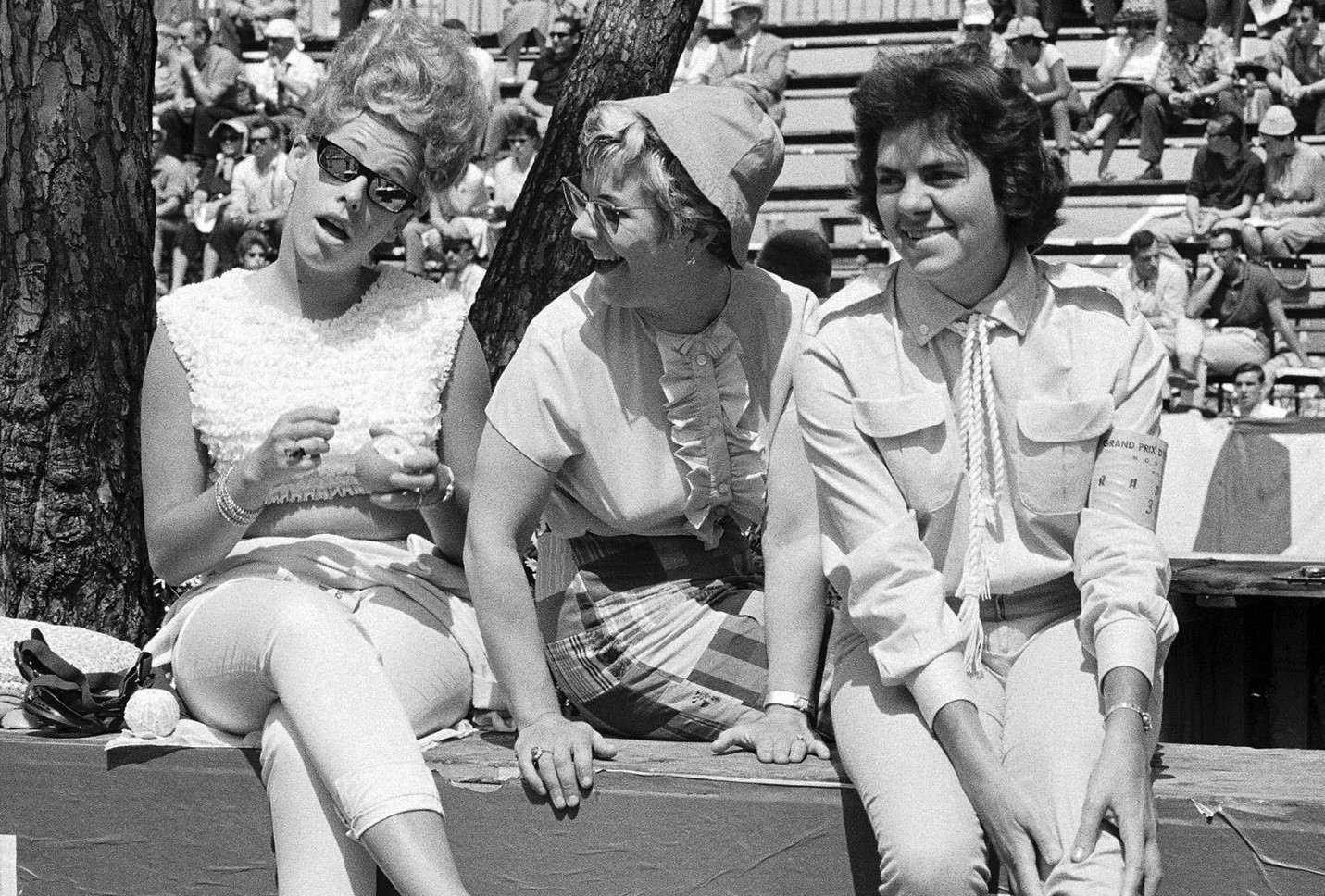
1963, Monte Carlo, Formula 1 women. Photo by Rainer Schlegelmilch.
It was twice designated the European Grand Prix, in 1955 and 1963, when this title was an honorary designation given each year to one Grand Prix race in Europe.
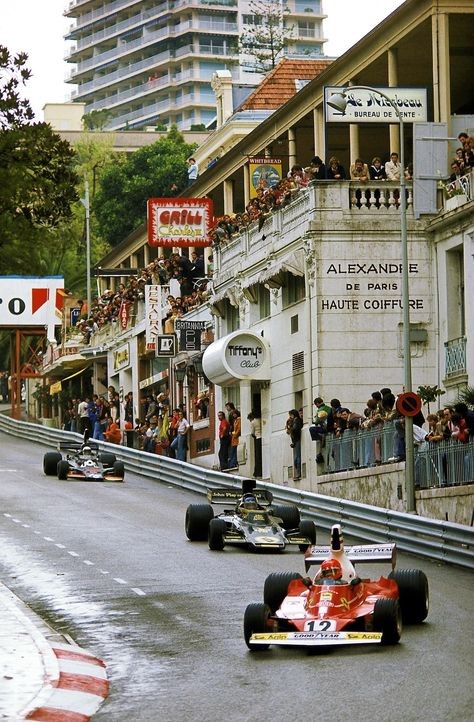
Niki Lauda, Ferrari, Monaco GP 1975.
The Circuit de Monaco consists of the city streets of Monte Carlo and La Condamine, which include the famous harbour. It is unique in having been held on the same circuit every time it has been run over such a long period – only the Italian Grand Prix, which has been held at Autodromo Nazionale Monza during every F1 regulated year except 1980, has a similarly lengthy and close relationship with a single circuit. As of 2018, two drivers have crashed and ended up in the harbour, the most famous being Alberto Ascari in 1955. Despite the fact that the course has had minor changes several times during its history, it is still considered the ultimate test of driving skills in F1 and if it were not already an existing Grand Prix, it would not be permitted to be added to the schedule for safety reasons. Notably, the course includes a tunnel. The contrast of daylight and gloom when entering/exiting the tunnel presents "challenges not faced elsewhere", as the drivers have to "adjust their vision as they emerge from the tunnel at the fastest point of the track and brake for the chicane in the daylight."
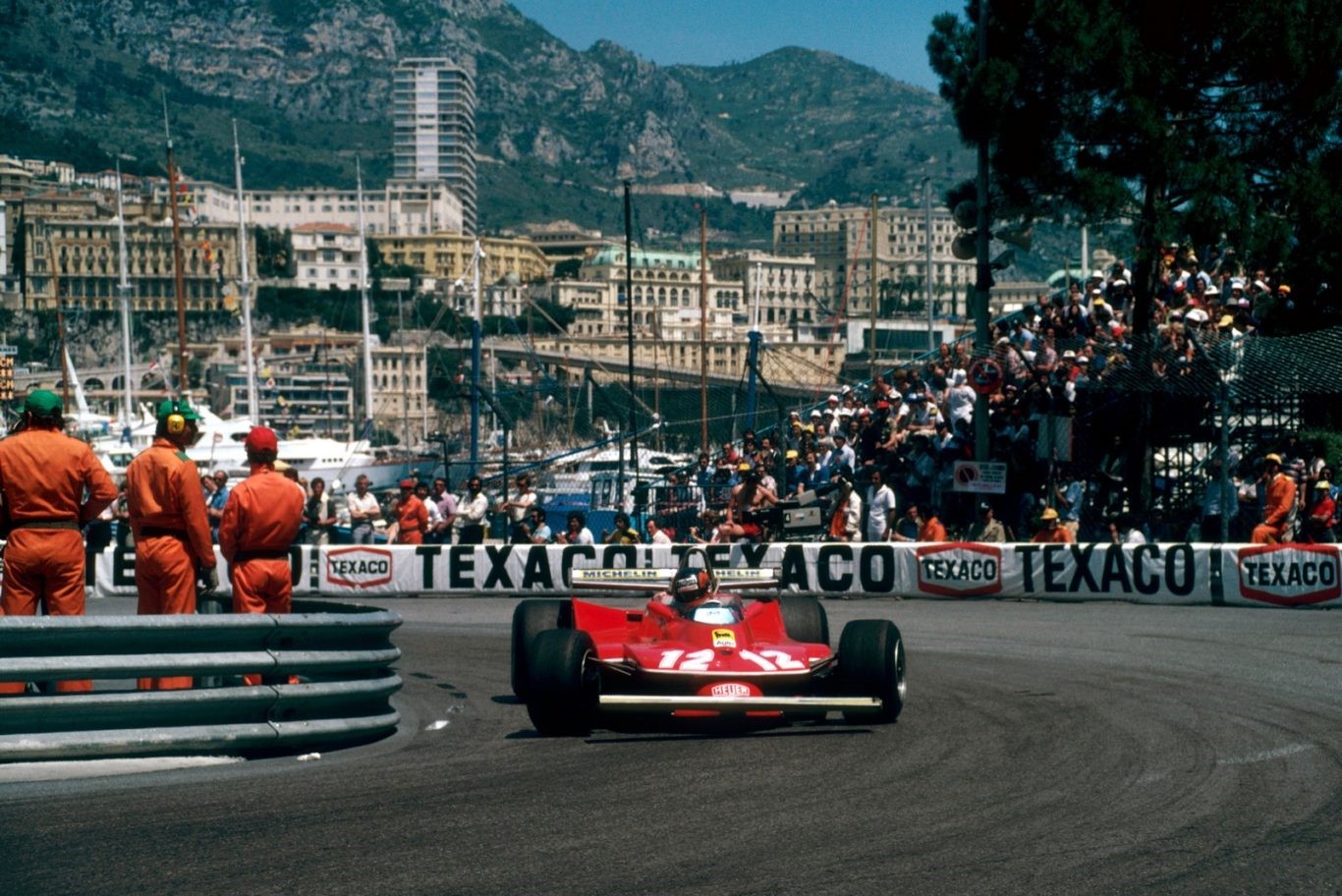
Gilles Villeneuve in Monaco in 1979.
During the Grand Prix weekend, spectators crowd around the Monaco Circuit. There are a number of temporary grandstands built around the circuit, mostly around the harbour area.
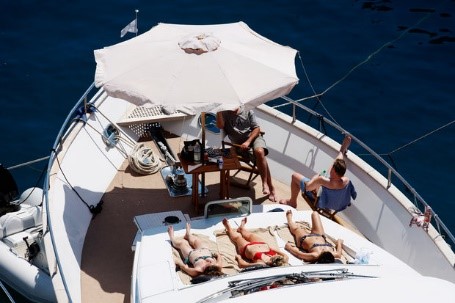
Sunbathers relax in the French Rivera sun while the F1 hits Monaco. Getty Images.
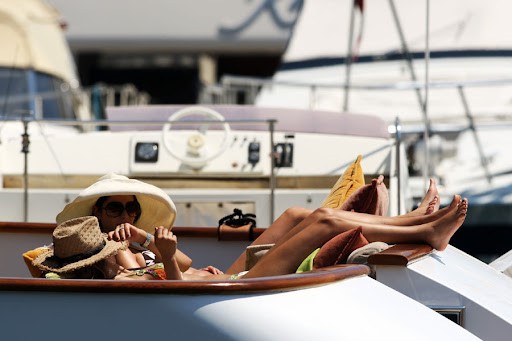
Sunbathers relax in the French Rivera sun while the F1 hits Monaco.
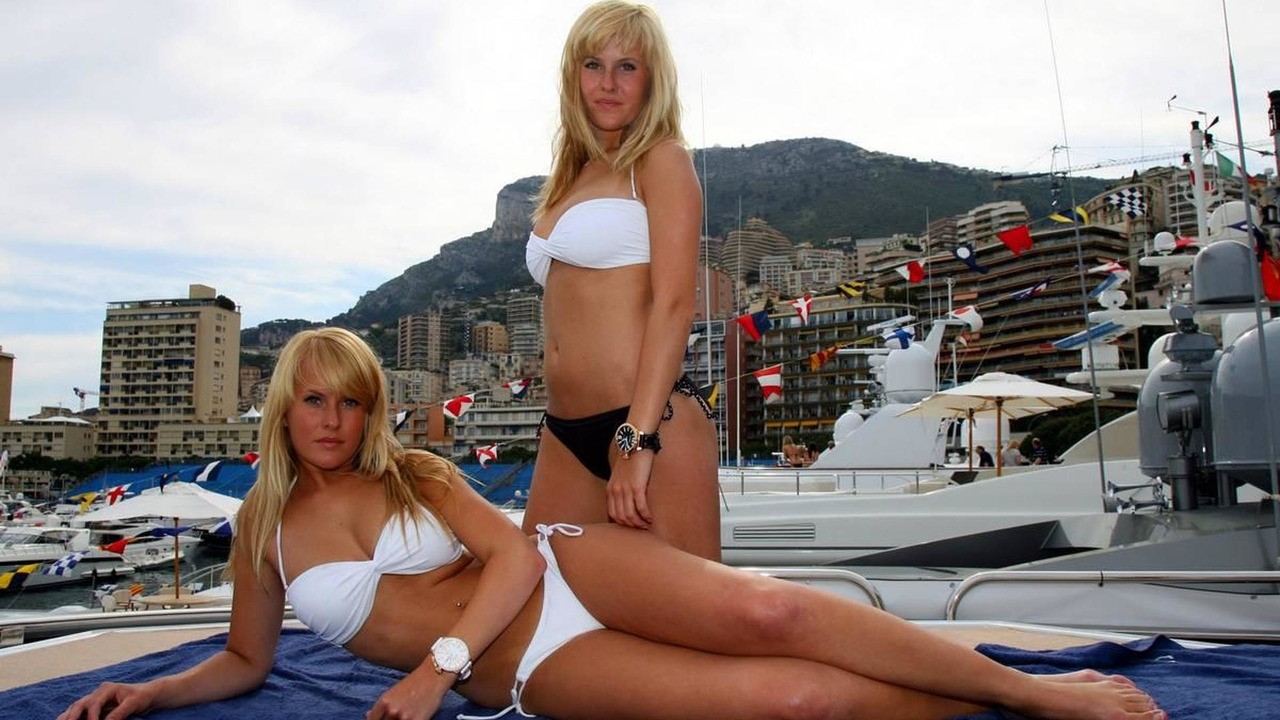
A warm and sunny day has greeted the F1 world ahead of the 2010 Monaco Grand Prix.
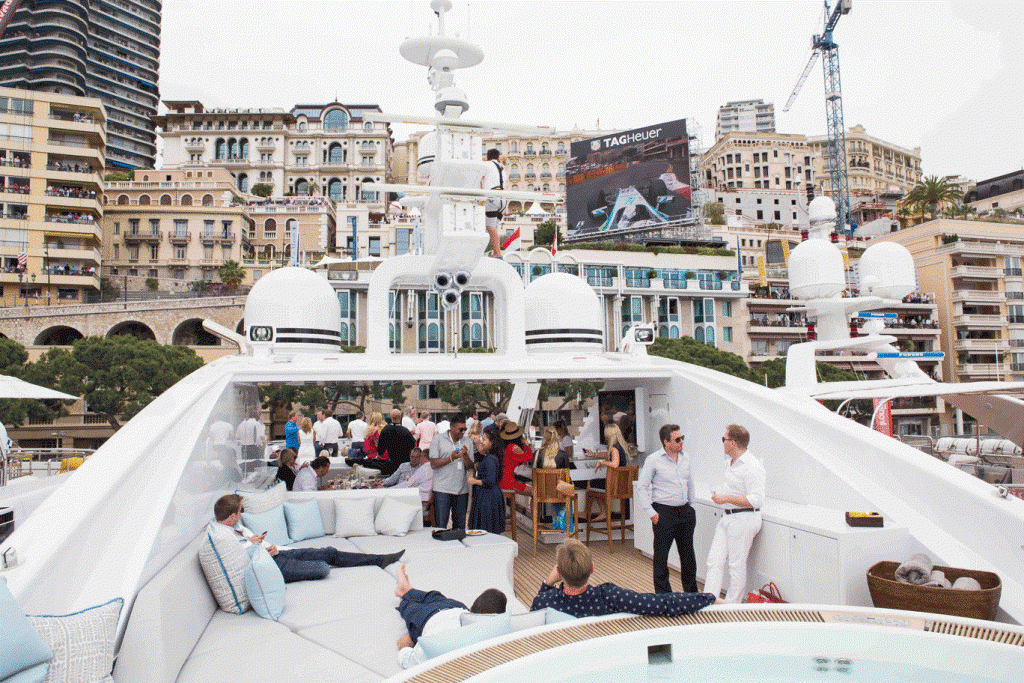
The rich and famous spectators often arrive on their boats and the yachts through the harbour.
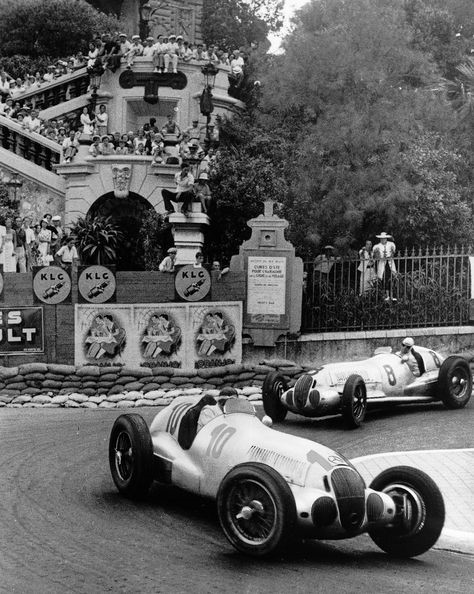
Mercedes W25 in Monaco in 1937.
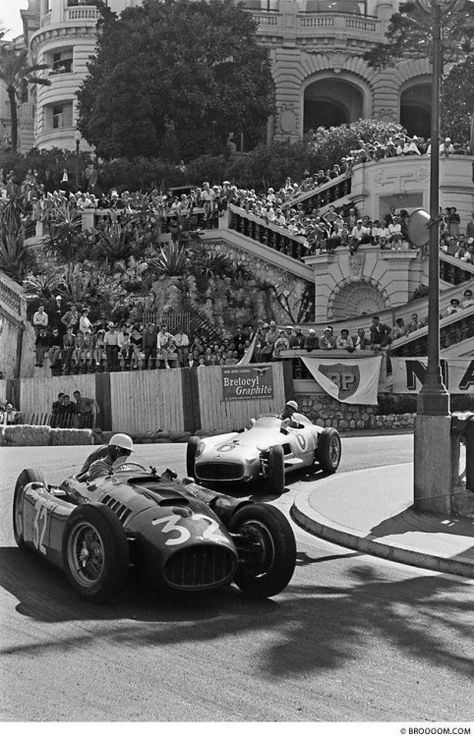
Louis Chiron in a Lancia and Moss in a Mercedes, at Monaco Grand Prix in 1955.
Balconies around Monaco become viewing areas for the race as well.
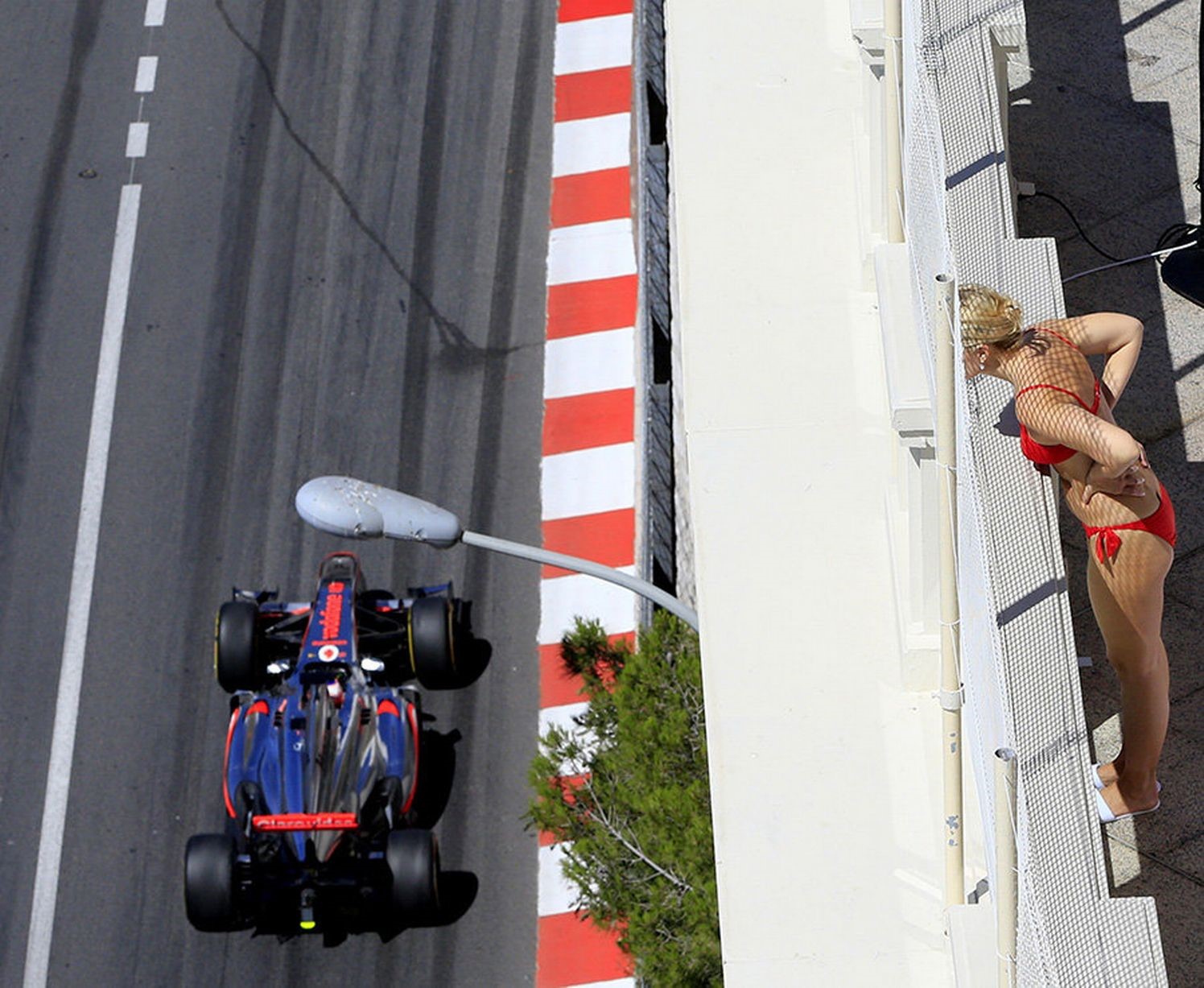
A woman watches the first practice session at the Circuit de Monaco. Getty Images.
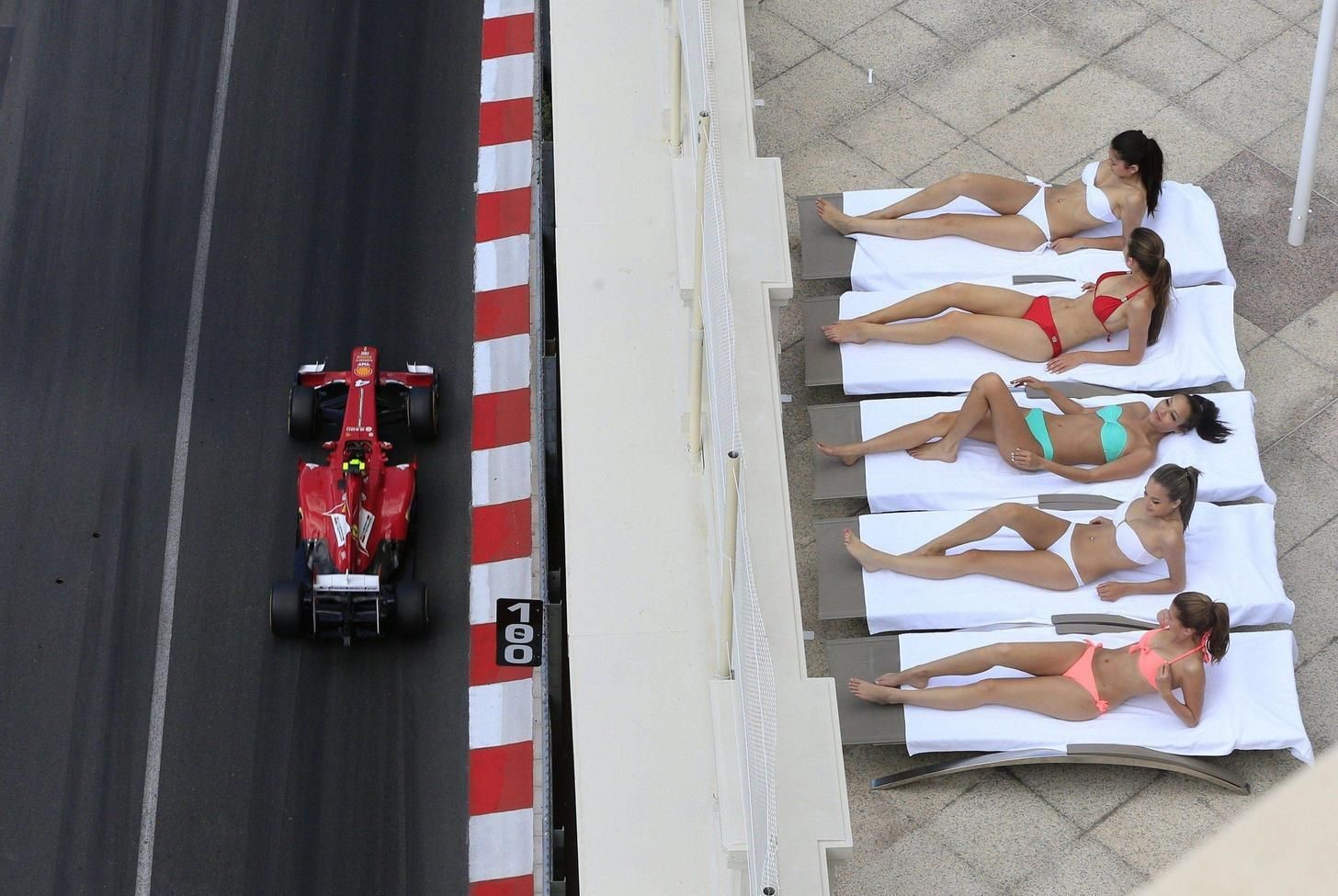
Women top up their tans as Felipe Massa races past. Getty Images.
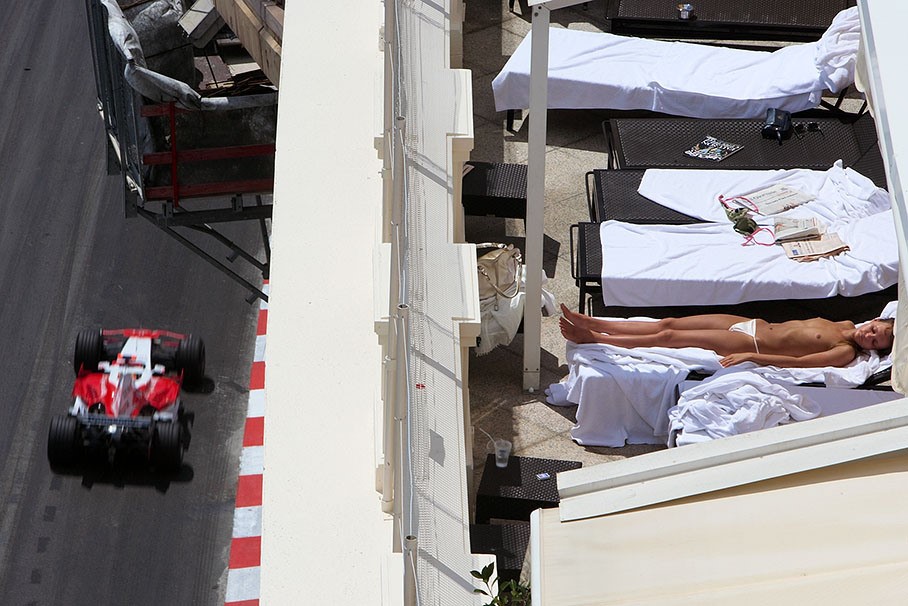
Sunbath in Monte Carlo on May 2007 while a Toyota passes. Photo by Rainer Schlegelmilch.
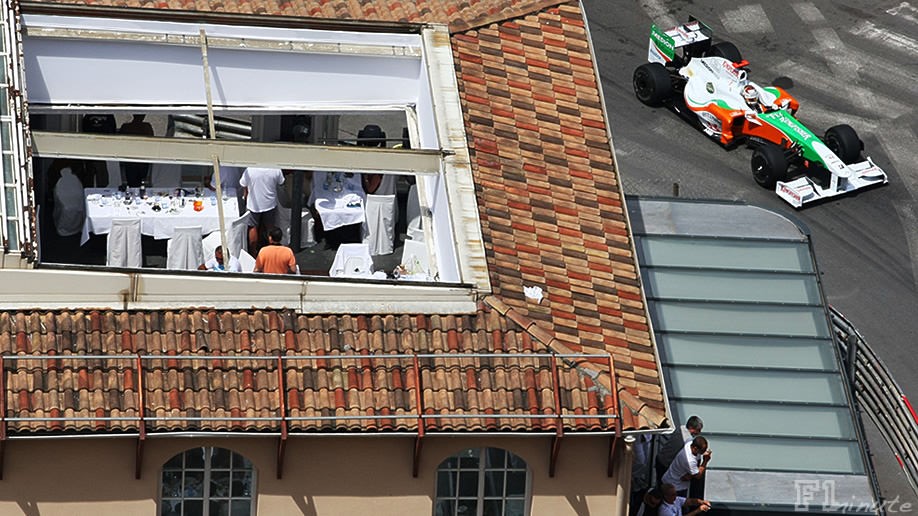
Adrian Sutil of Force India navigating the streets of Monte Carlo during practice for the 2009 Monaco GP. Entering La Rascasse corner, one turn way from the main straight. Courtesy of F1 Minute.
Many hotels and residents cash in on the bird's eye views of the race. The Monaco Grand Prix is organized each year by the Automobile Club de Monaco, which also runs the Monte Carlo Rally and the Junior Monaco Kart Cup. The Monaco Grand Prix differs in several ways from other Grands Prix. The practice session for the race is held on the Thursday preceding the race instead of Friday. This allows the streets to be opened to the public again on Friday. Until the late 1990s the race started at 3:30 p.m. local time – an hour and a half later than other European Formula One races. In recent years the race has fallen in line with the other Formula One races for the convenience of television viewers. Also, earlier the event was traditionally held on the week of Ascension Day. For many years, the numbers of cars admitted to Grands Prix was at the discretion of the race organizers – Monaco had the smallest grids, ostensibly because of its narrow and twisting track. Only 18 cars were permitted to enter the 1975 Monaco Grand Prix, compared to 23 to 26 cars at all other rounds that year. The erecting of the circuit takes six weeks and the removal after the race takes three weeks. There was no podium as such at the race, until 2017. Instead, a section of the track was closed after the race to act as parc fermé, a place where the cars are held for official inspection. The first three drivers in the race left their cars there and walked directly to the royal box where the 'podium' ceremony was held, which was considered a custom for the race. The trophies were handed out before the national anthems for the winning driver and team are played, as opposed to other Grands Prix where the anthems are played first.
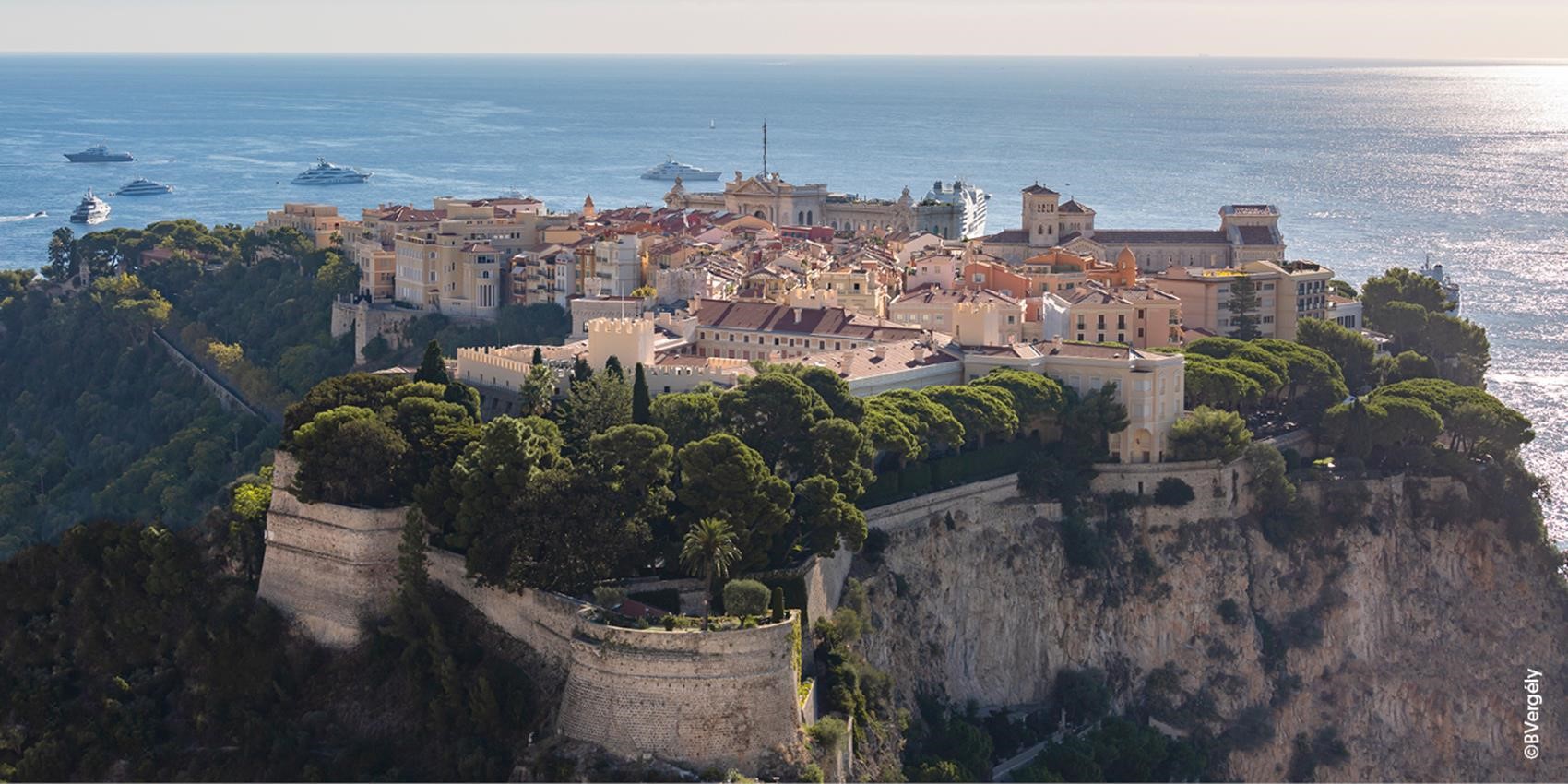
The fortress of Monaco overlooking the port on the Mediterranean. The Palace of the Princes is located on the top of the fortress. The Palladian-style building in the background is the Oceanographic Museum founded by Prince Albert I of Monaco in 1906. The remains of the tower of All Saints are visible in the lower left of the image.
The Grand Prix has been run under the patronage of three generations of Monaco's royal family: Louis II, Rainier III and Albert II, all of whom have taken a close interest in the race. A large part of the principality's income comes from tourists attracted by the warm climate and the famous casino, but it is also a tax haven and is home to many millionaires, including several F1 drivers.
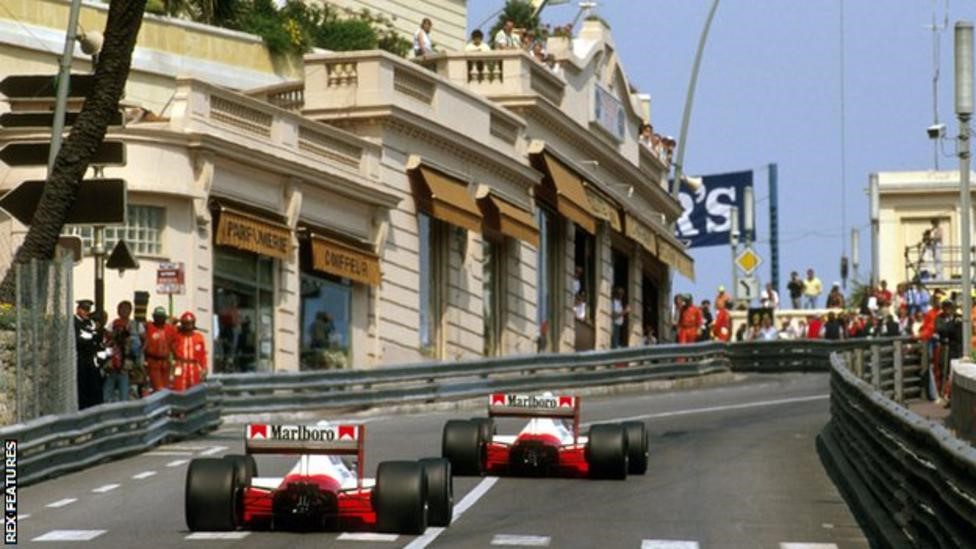
From 1984 to 1993, the race was won by only two drivers: Ayrton Senna and Alain Prost. Senna's record of six wins still stands.
Monaco has produced four native F1 drivers - Louis Chiron, André Testut, Olivier Beretta and Charles Leclerc - but its tax status has made it home to many drivers over the years, including Gilles Villeneuve and Ayrton Senna.
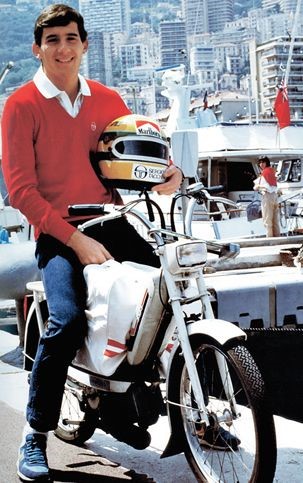
Ayrton Senna in Monaco.
Of the 2006 F1 contenders, several have property in the principality, including Jenson Button and David Coulthard, who was part owner of a hotel there. Because of the small size of the town and the location of the circuit, drivers whose races end early can usually get back to their apartments in minutes. Ayrton Senna famously retired to his apartment after crashing out of the lead of the 1988 race. The Grand Prix attracts big-name celebrities each year who come to experience the glamour and prestige of the event.
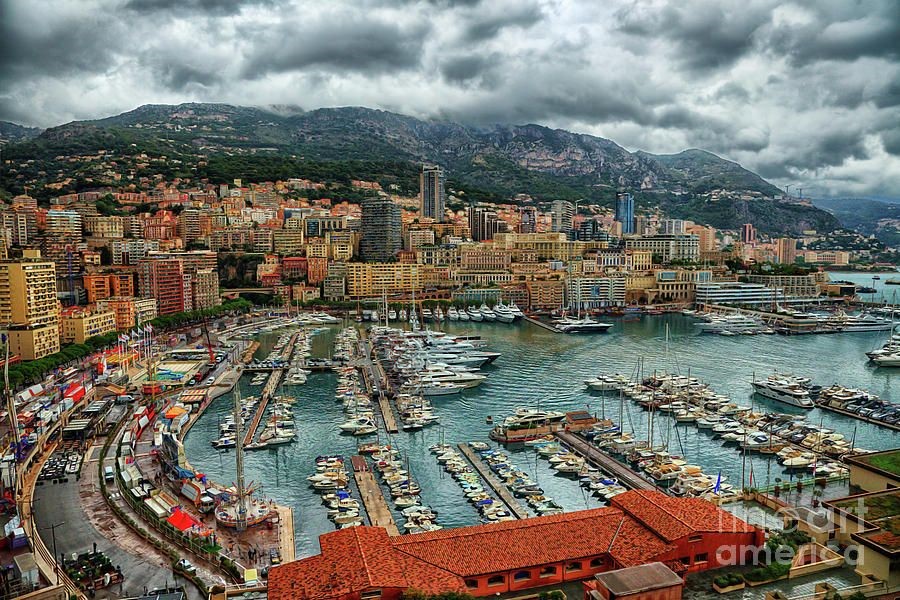
Port Hercules, Monte Carlo, Monaco. By Wayne Moran.
Big parties are held in the nightclubs on the Grand Prix weekend and the Port Hercule fills up with party-goers joining in the celebrations.
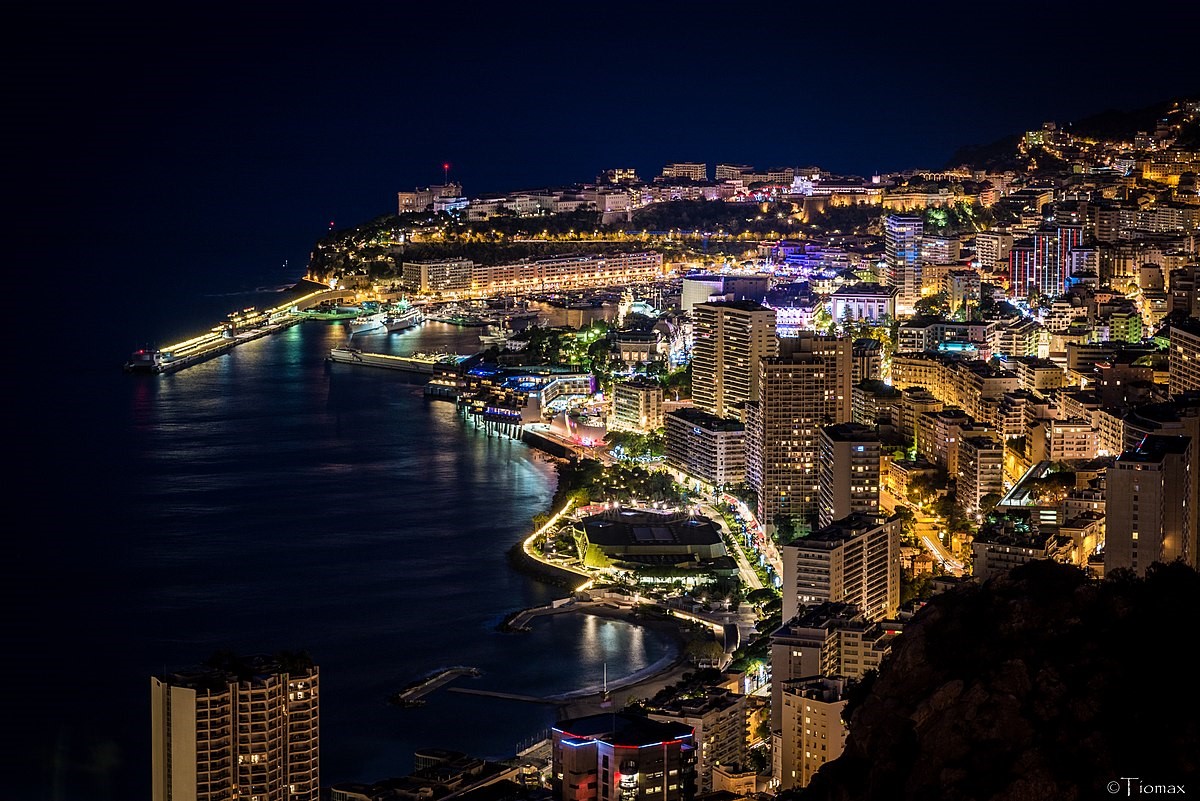
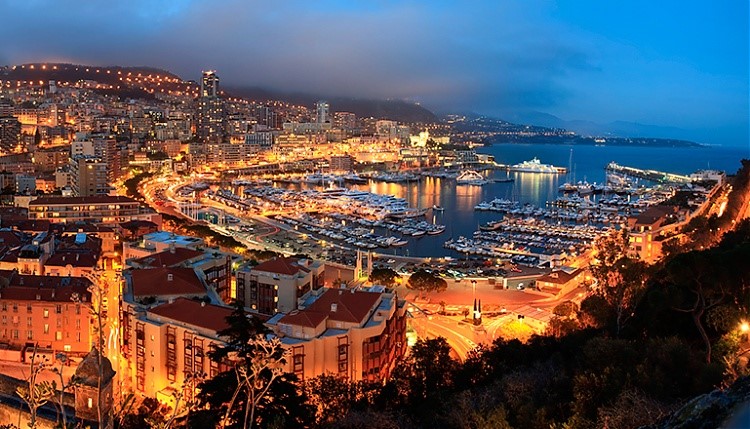
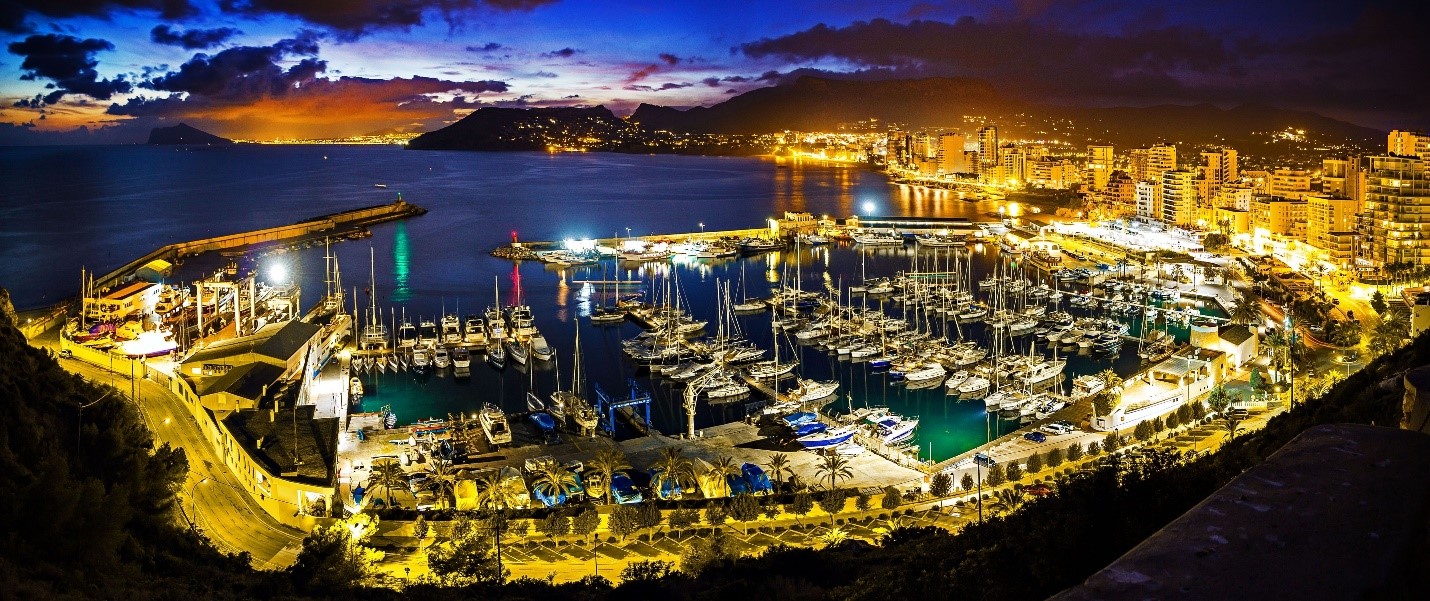
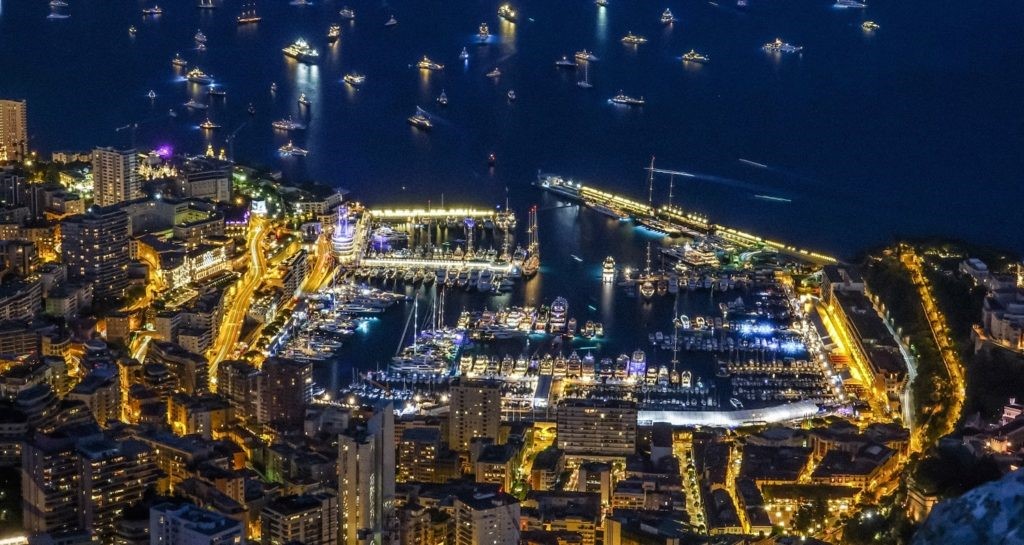
Any Formula 1 pilot dreams to win on the mythical circuit of Monaco, which is the slowest and the hardest of the World Formula 1 Championship. The one that wins in Monaco deserves it, because even a small error in the streets of the principality is fatal. The qualifications are always determining, the overpass being almost impossible. However, the number of abandons being high, a good control can ensure a place in the points.
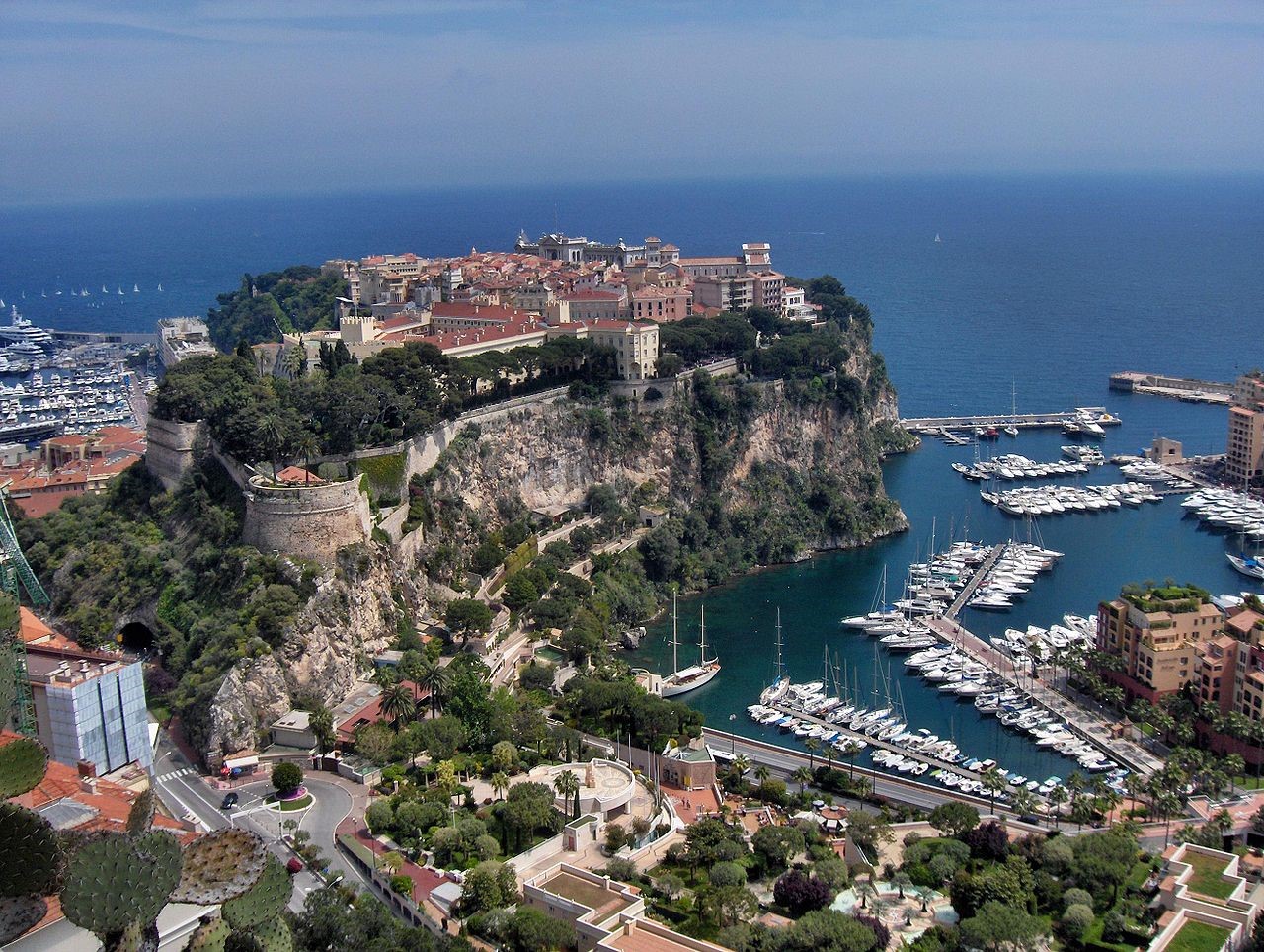
Get a buzz you will feel nowhere else at the Monaco Grand Prix, a one-of-a-kind F1 race that takes place every year in a suitably splendid setting.
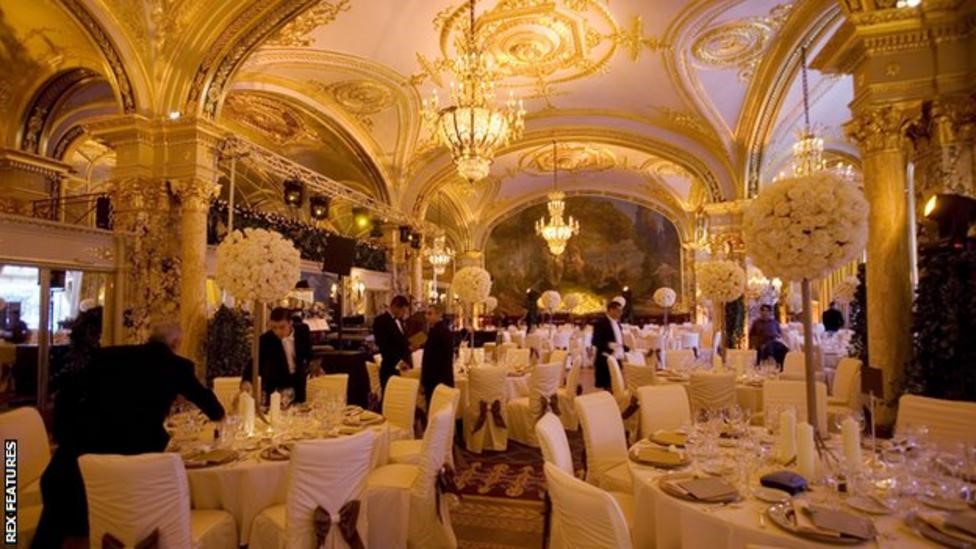
In 2016, lunch on race day at the exquisite Salle Empire terrace would have set you back an eye-watering 1,400 euros. You cannot even see the cars from there!
Before, during and after the race, it is all happening in Monaco like no other place on the planet.
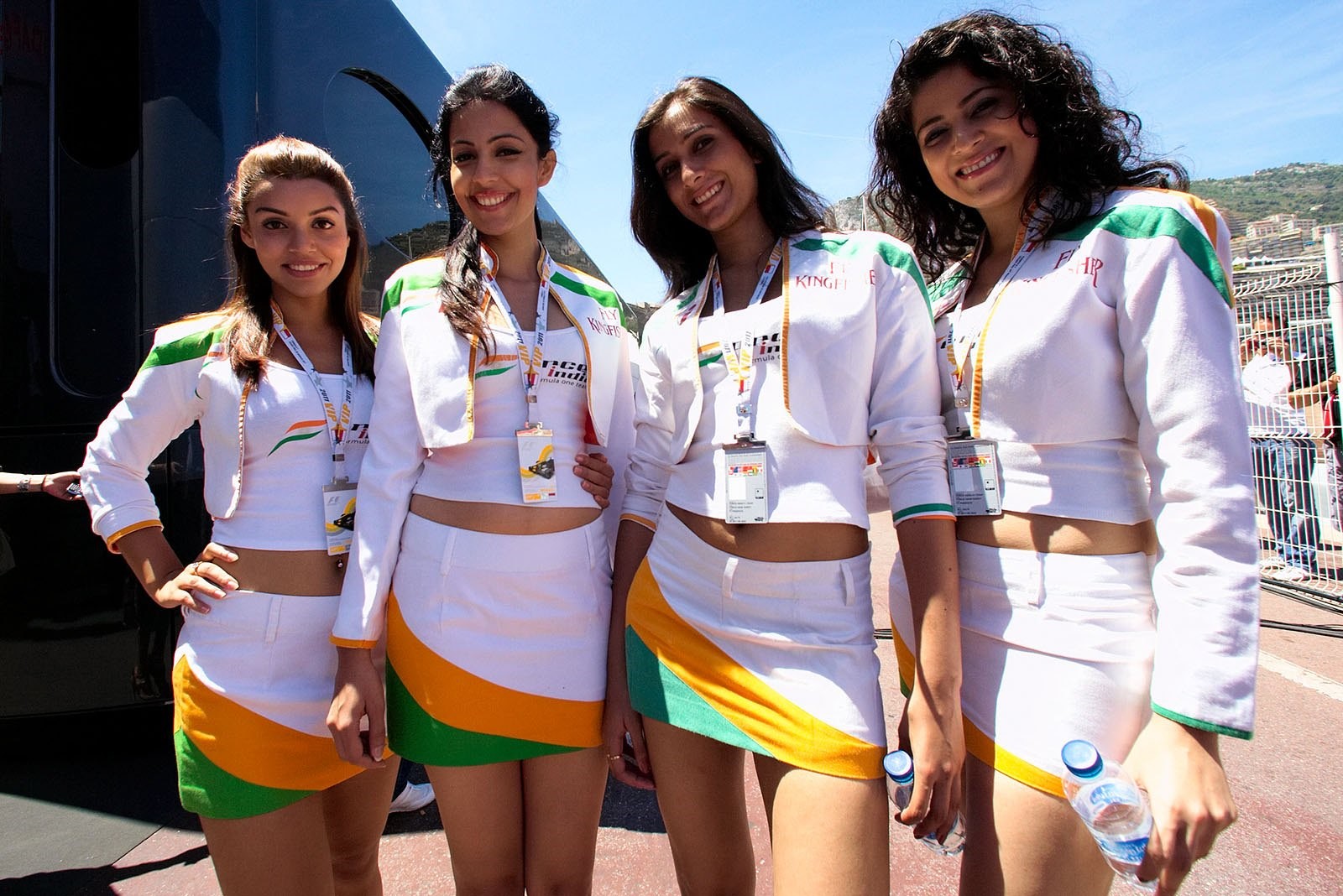
Force India girls in Monte Carlo in June 2011. Photo by Rainer Schlegelmilch.
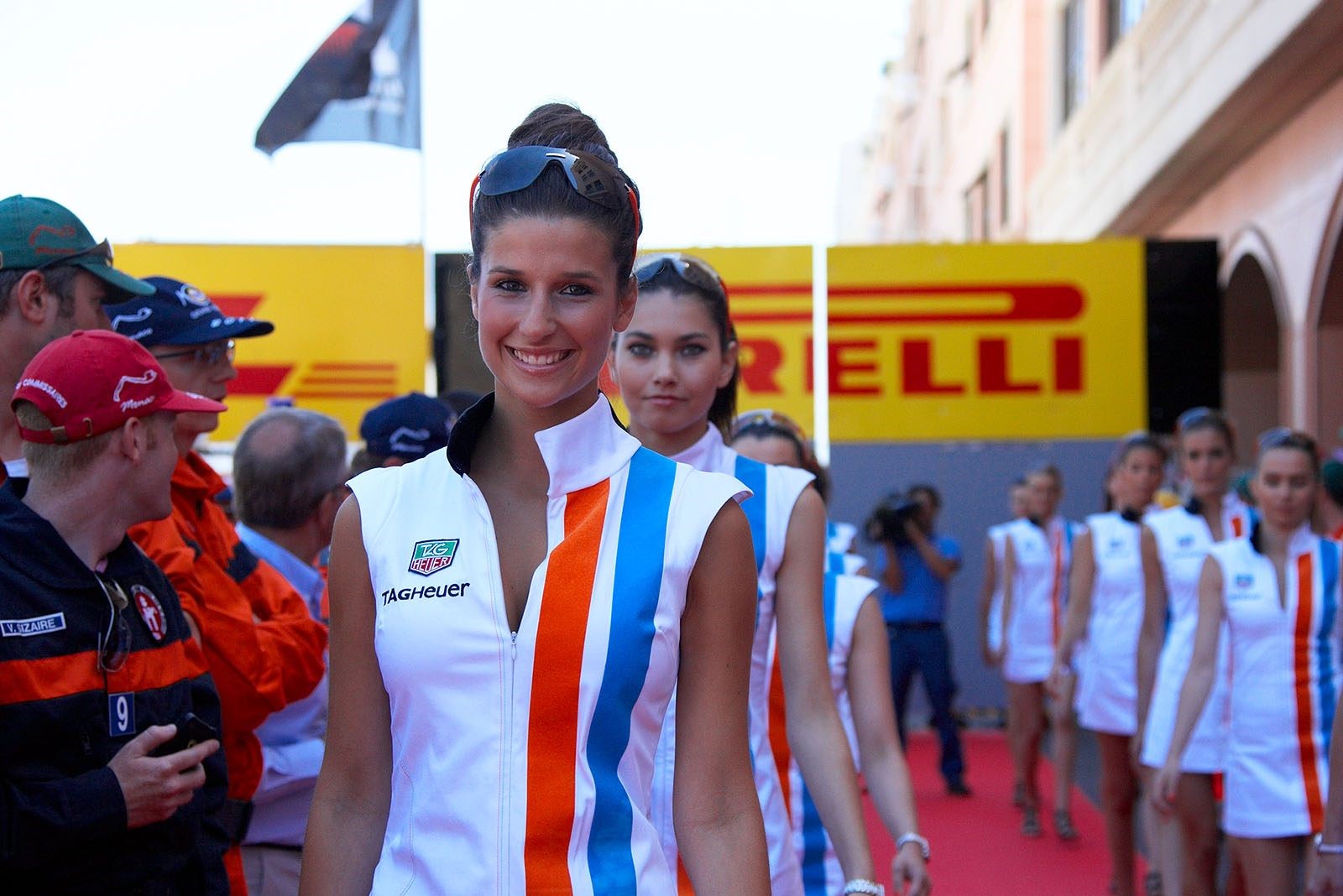
Wonderful Monaco grid girls in 2011. Photo by Rainer Schlegelmilch.
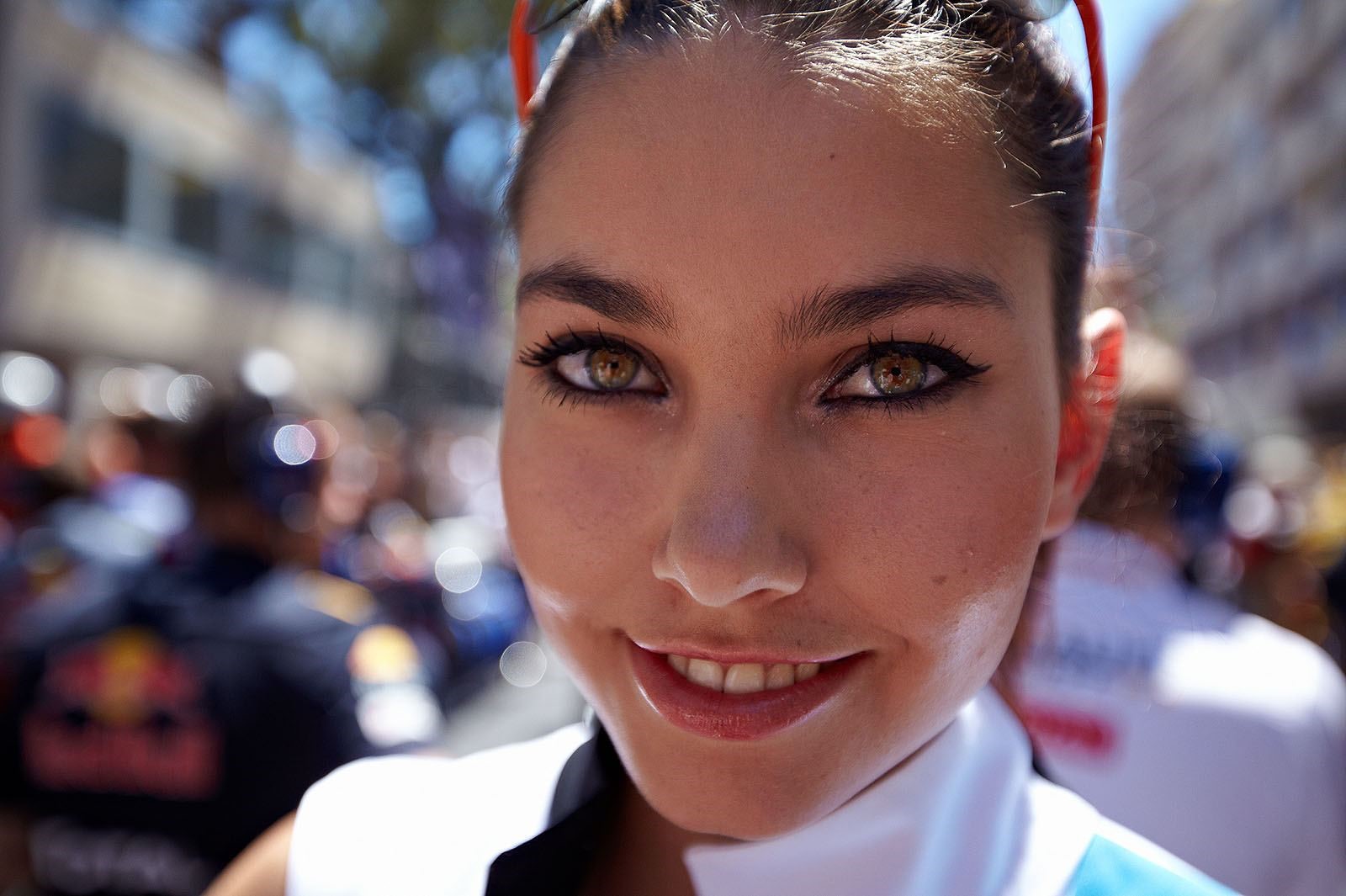
Cat's eyes of a grid girl in June 2011. Photo by Rainer Schlegelmilch.
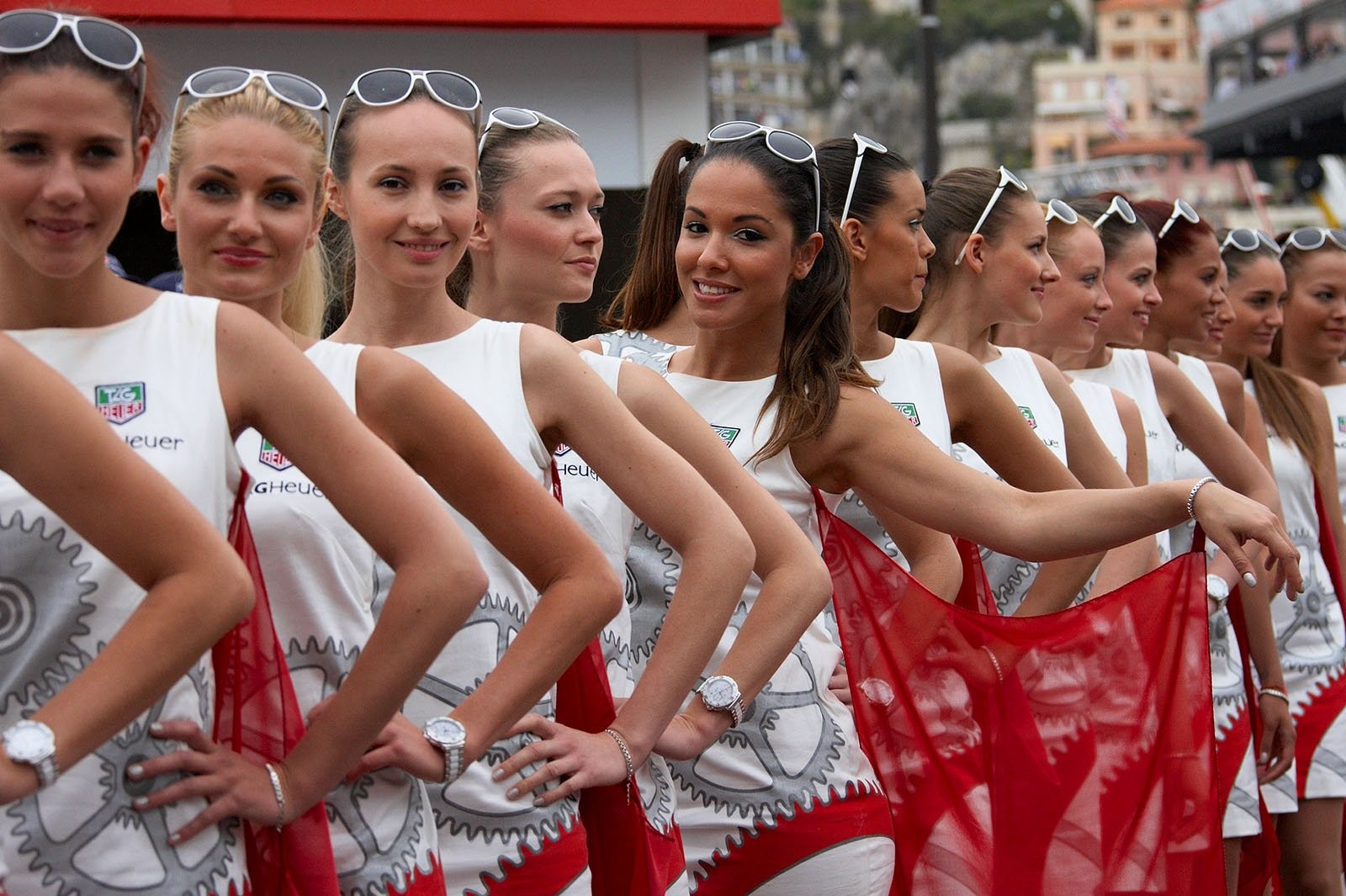
Monaco grid girls in 2014. Photo by Rainer Schlegelmilch.
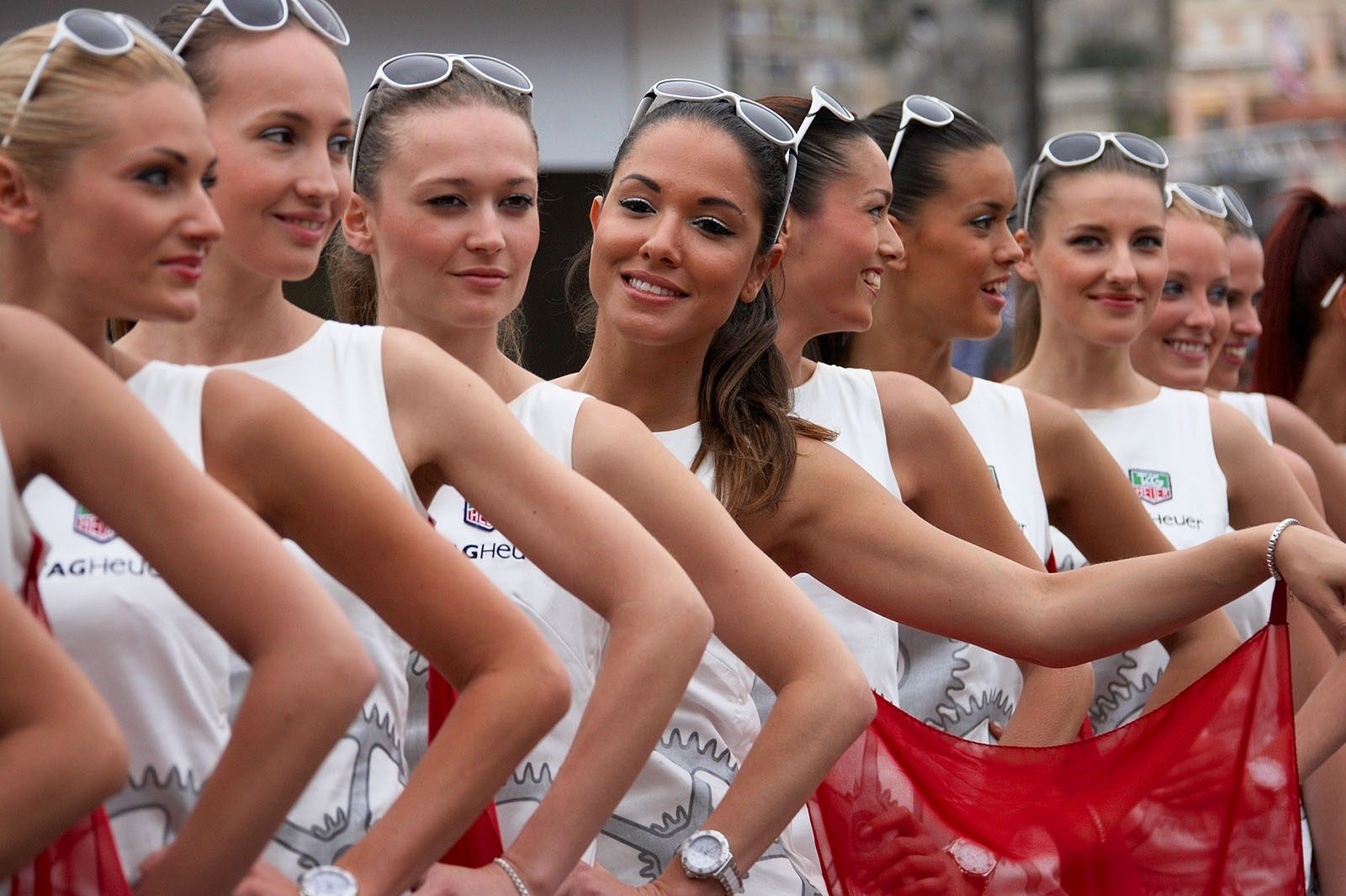
Monaco grid girls 2014. Photo by Rainer Schlegelmilch.
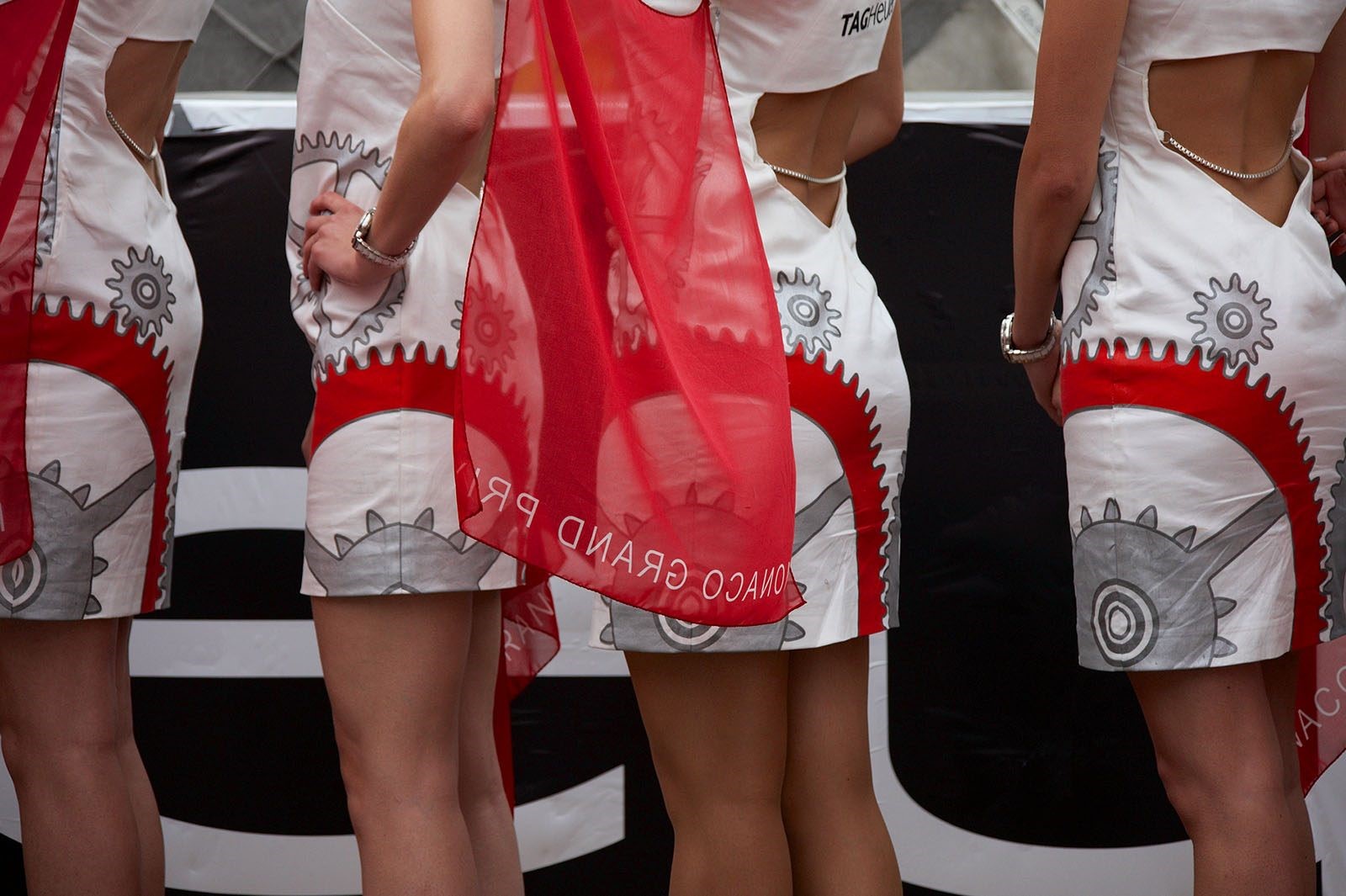
2014 Monaco grid girls, sponsored by TAG Heuer. Photo by Rainer Schlegelmilch.
Get ready for lights out! As late May comes around, Monaco erupts with joy. And rightly so: during the F1 Grand Prix weekend, its population triples as auto racing enthusiasts flock to the city’s freshly asphalted tracks and find their seat in the circuit’s gigantic grandstands.
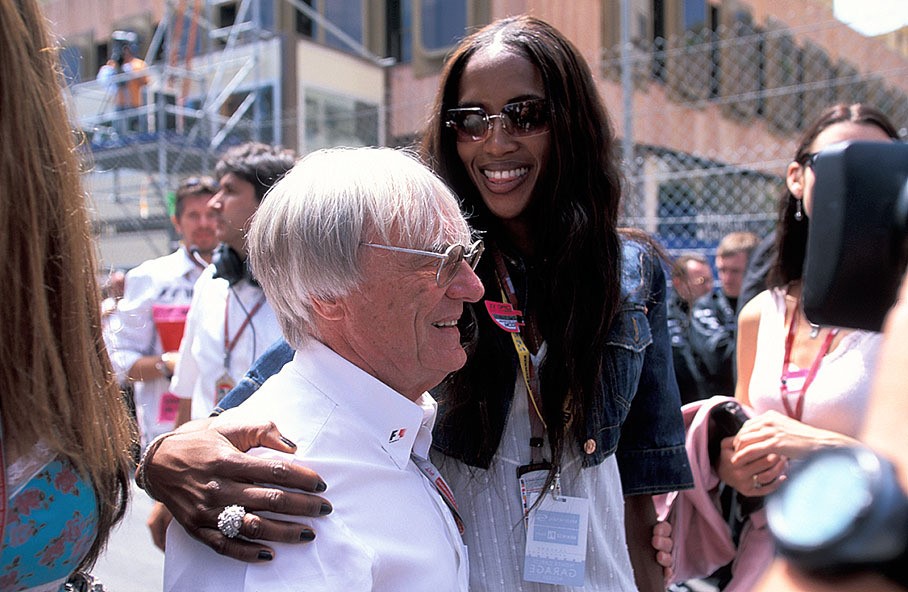
Bernie Ecclestone in Monte Carlo with Naomi Campbell in 2001. Photo by Rainer Schlegelmilch.
Over the four days, Formula 1 fans, visitors from around the world and stars of all kinds rub shoulders. The Monaco track is open to all outside of race times, so everyone is free to try out the 3.34 km circuit on foot, by pushbike or car and imagine the sensations that come with being an F1 driver.
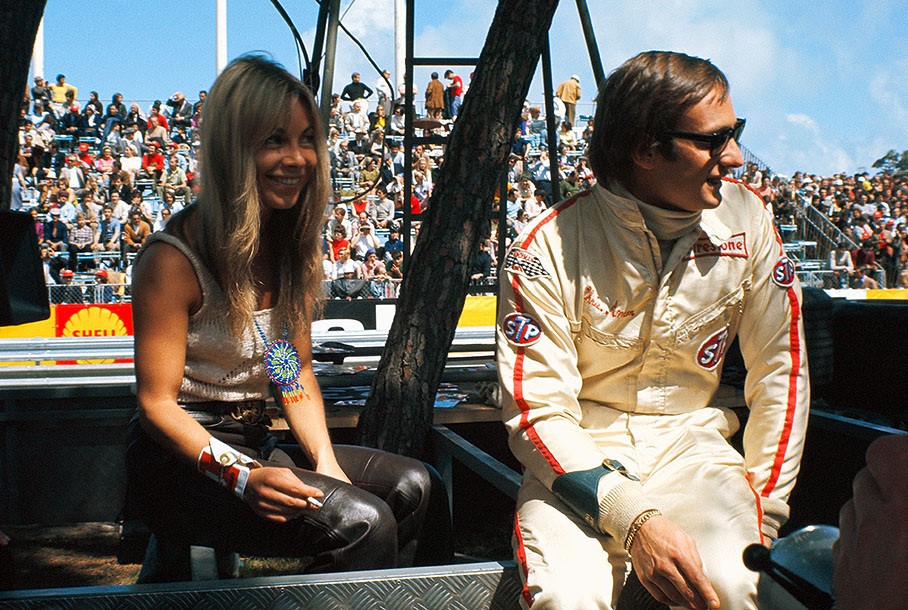
New Zealander Chris Amon sits with his girlfriend on the pitwall in 1970. Photo by Rainer Schlegelmilch.
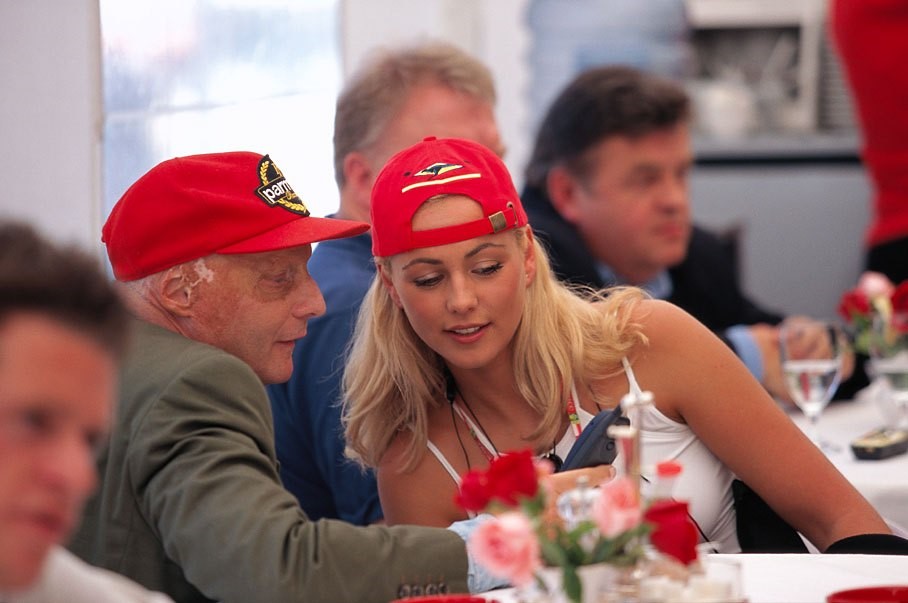
Niki Lauda in Monte Carlo in 1999. Photo by Rainer Schlegelmilch.
As part of this unique personal experience, everyone can get a feel for the asphalt, touch the rumble strips and even spot the narrow run-off zones between the crash barriers. There is no better way to get an idea of the scale of the challenge awaiting the drivers.
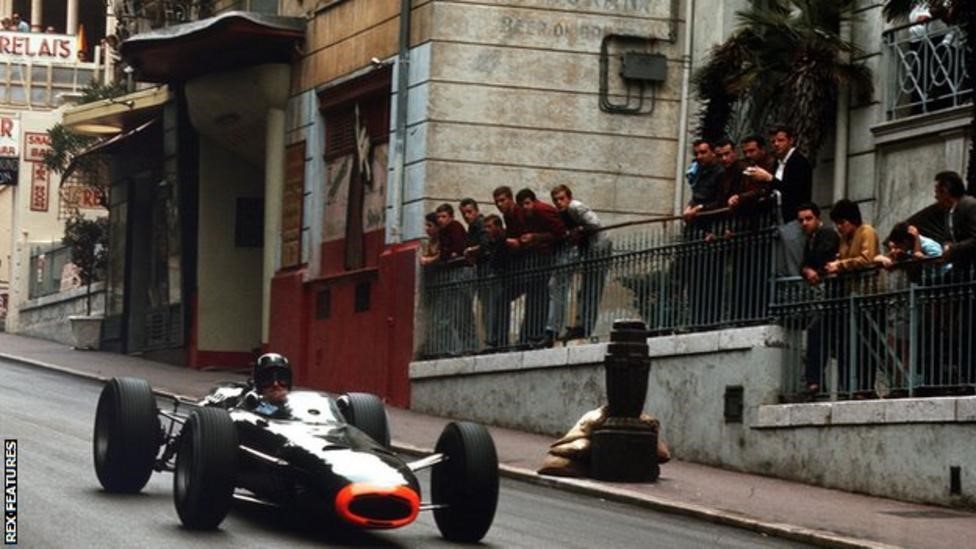
Fans watch 'Mr. Monaco' Graham Hill, Damon’s father, cruise by as he wins the 1965 Monaco Grand Prix.
According to racing driver Damon Hill, “Monaco is the track that separates the men from the boys”.
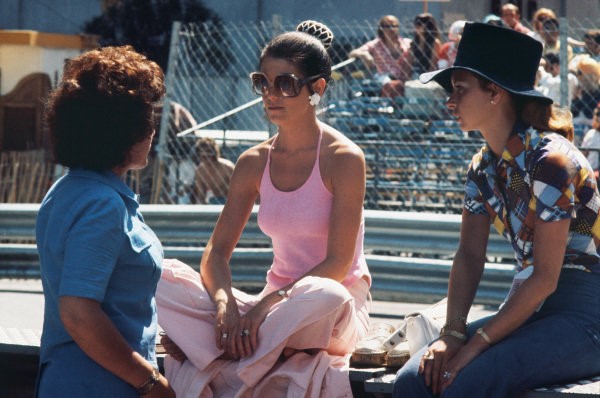
1973 Monaco Grand Prix. Monte Carlo, Monaco, 31st May - 3rd June 1973. Driver's wives and girlfriens in the pits including Bette Hill, Damon’s mother. Photo by Lat Photographic.
To succeed at Monaco, it is not enough to be good: excellence is the only thing that gets the drivers through each of the track’s 78 turns. A cool head is everything on a circuit where overtaking other challengers is an extremely difficult maneuver.
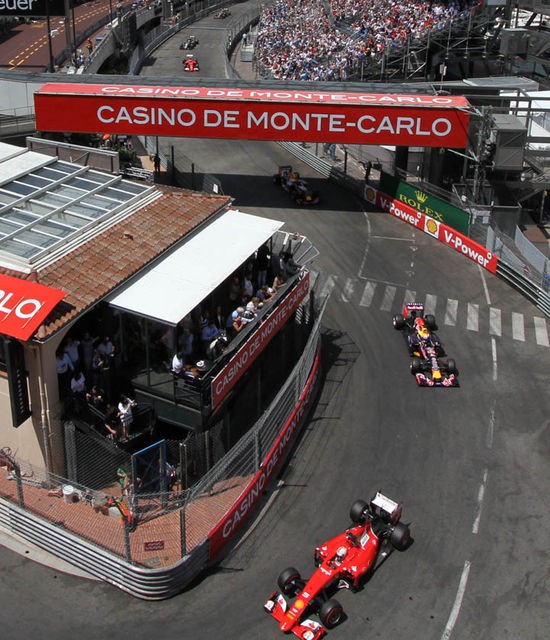
Serious motor sport fans will enjoy watching the race from the bar at La Rascasse. With its famous terrace located on a hairpin bend, this restaurant is THE spot to check out the cars and get up close and personal with them. Thrills and atmosphere guaranteed! The ideal venue to watch the race up close including the all-important qualifiers.
Much-feared by drivers but hotly anticipated by aficionados: we could not be describing anything other than La Rascasse corner. Spectators who get there (very) early and are lucky enough to find a spot in the track’s closest suites will be simply blown away. The bridge above La Rascasse is also a great strategic location for anyone who wants to give the drivers a bit of encouragement before they step into the arena.
Monaco is not only one of the most glamorous races in the F1 calendar. It is also one of the oldest.
It is this long-standing and significant place in motor-sport history that makes Monaco Grand Prix such an exceptional event.
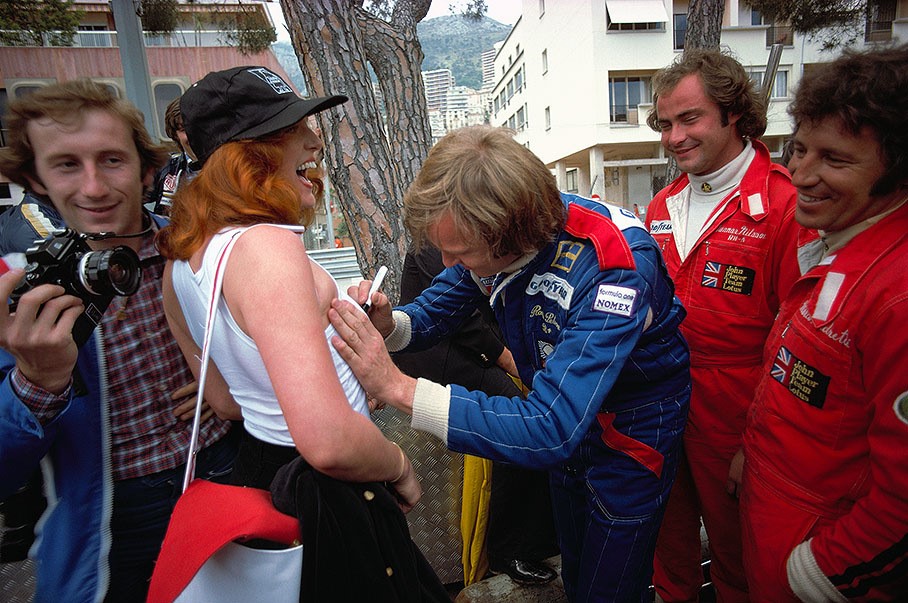
1970s F1 when men were men and women were glad of it. 1977, Monte Carlo. Ronnie Peterson signs a fan's shirt, Lotus drivers Gunnar Nilsson and Mario Andretti watching the scene. Photo by Rainer Schlegelmilch.
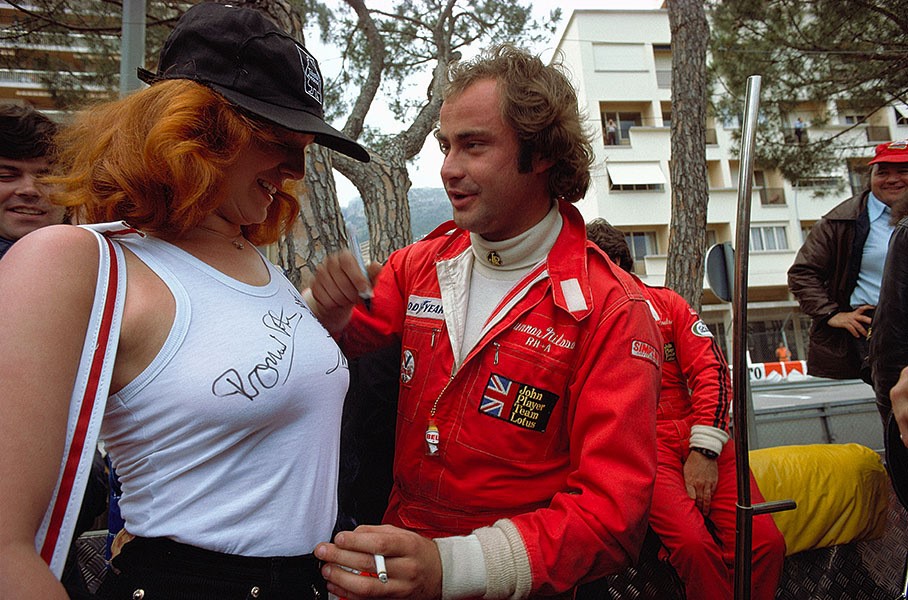
1977, Monte Carlo. After his fellow-countryman Ronnie Peterson, Swedish Lotus driver Gunnar Nilsson signs on the girl's breast. Photo by Rainer Schlegelmilch.
That and the layout of the city that allows throngs of spectators to look down on and feel part of the action.
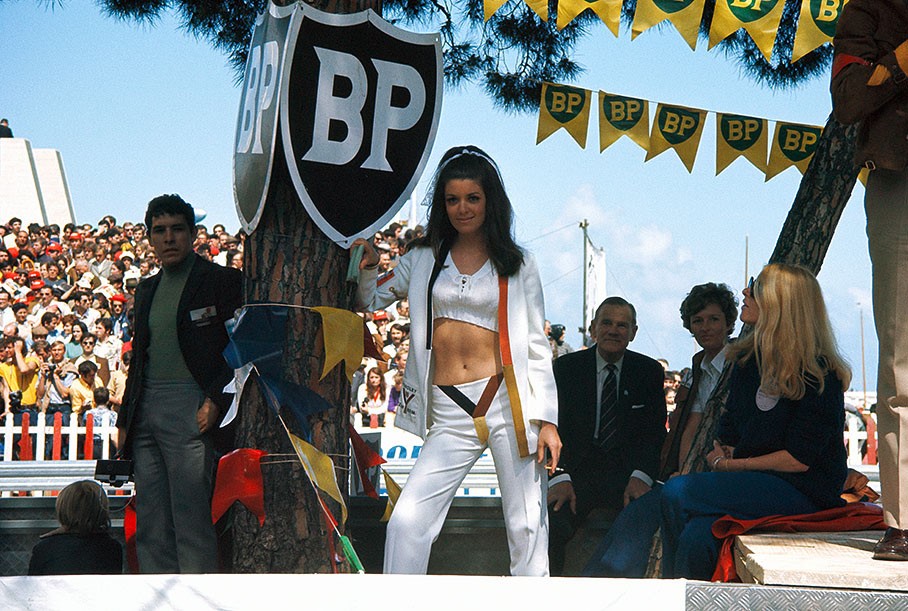
1970, Monte Carlo. Jackie Oliver's wife Lynn occasionally jobbed as advertising girl for McLaren's main sponsor Yardley. Photo by Rainer Schlegelmilch.
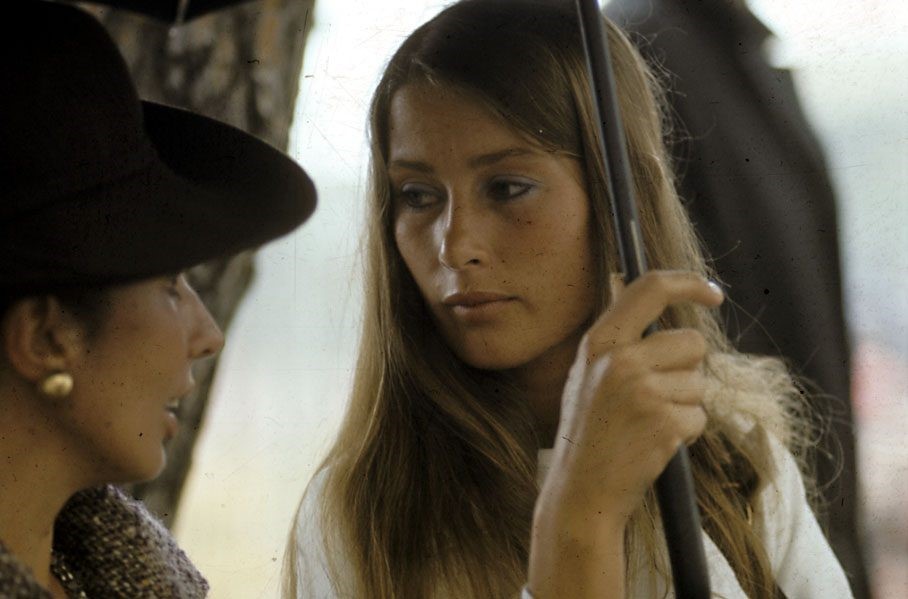
Nina Rindt, Monaco 1971. Photo by Rainer Schlegelmilch.
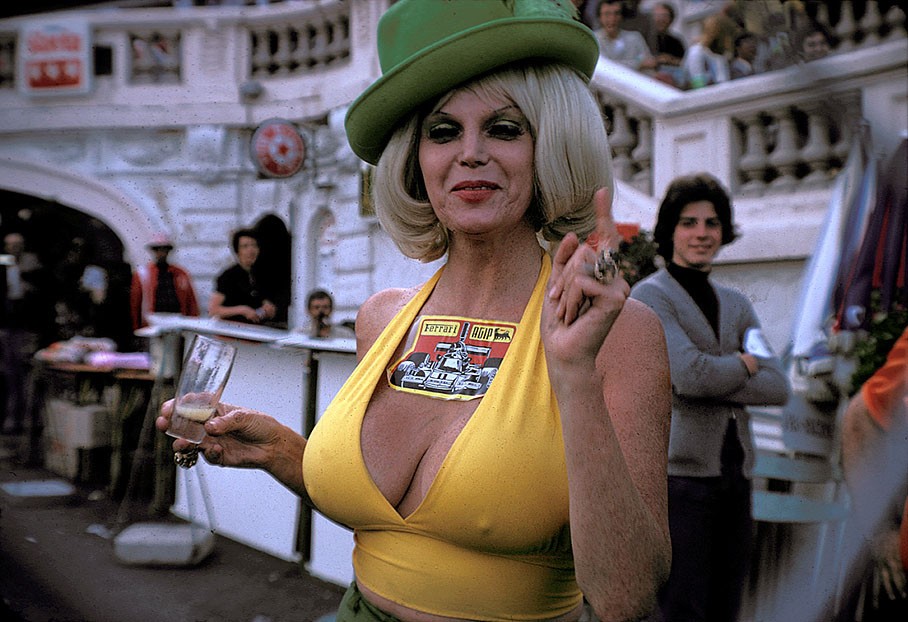
Monte Carlo, 1974. Photo by Rainer Schlegelmilch.
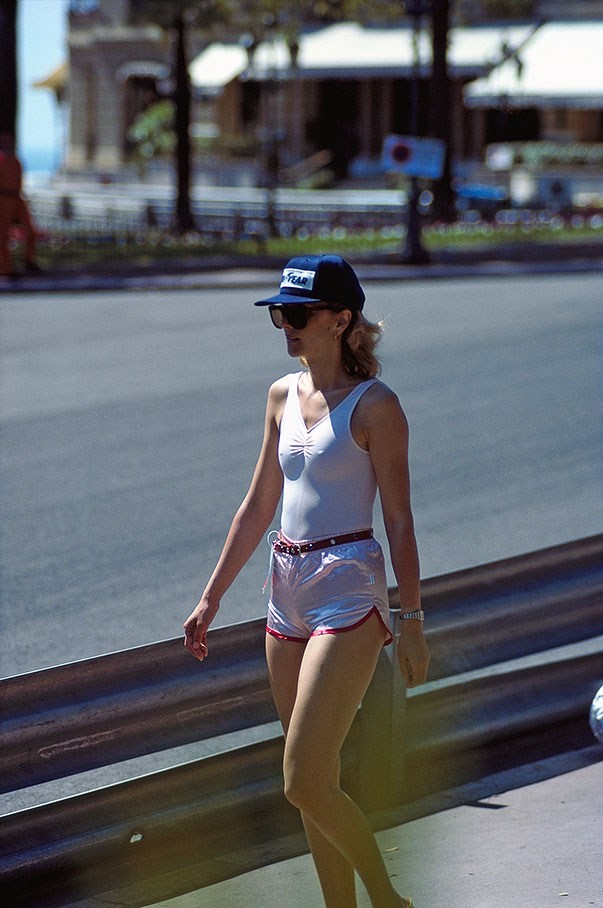
Monte Carlo, 1979. Photo by Rainer Schlegelmilch.
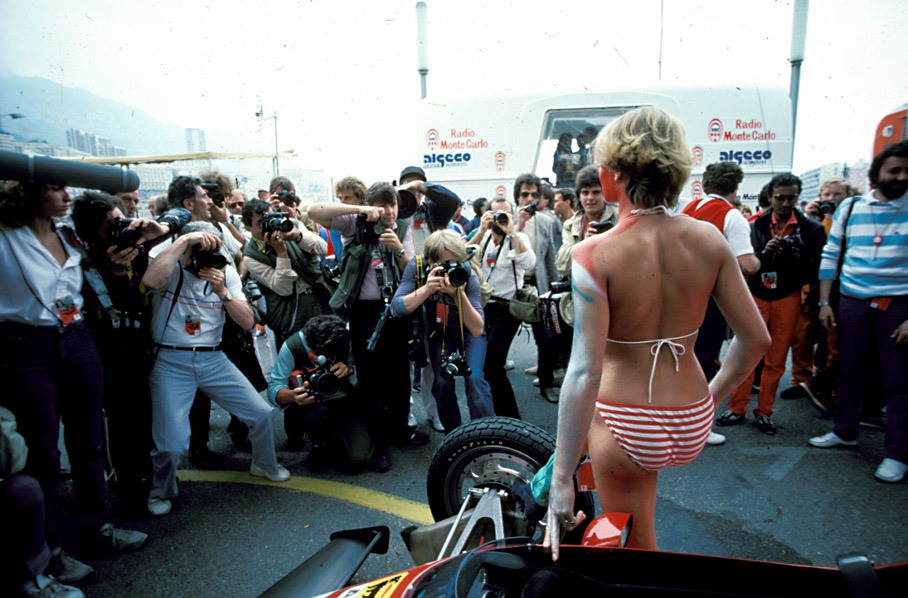
A body-painted promotional girl poses for the photographers with a Ferrari in 1983. Photo by Rainer Schlegelmilch.
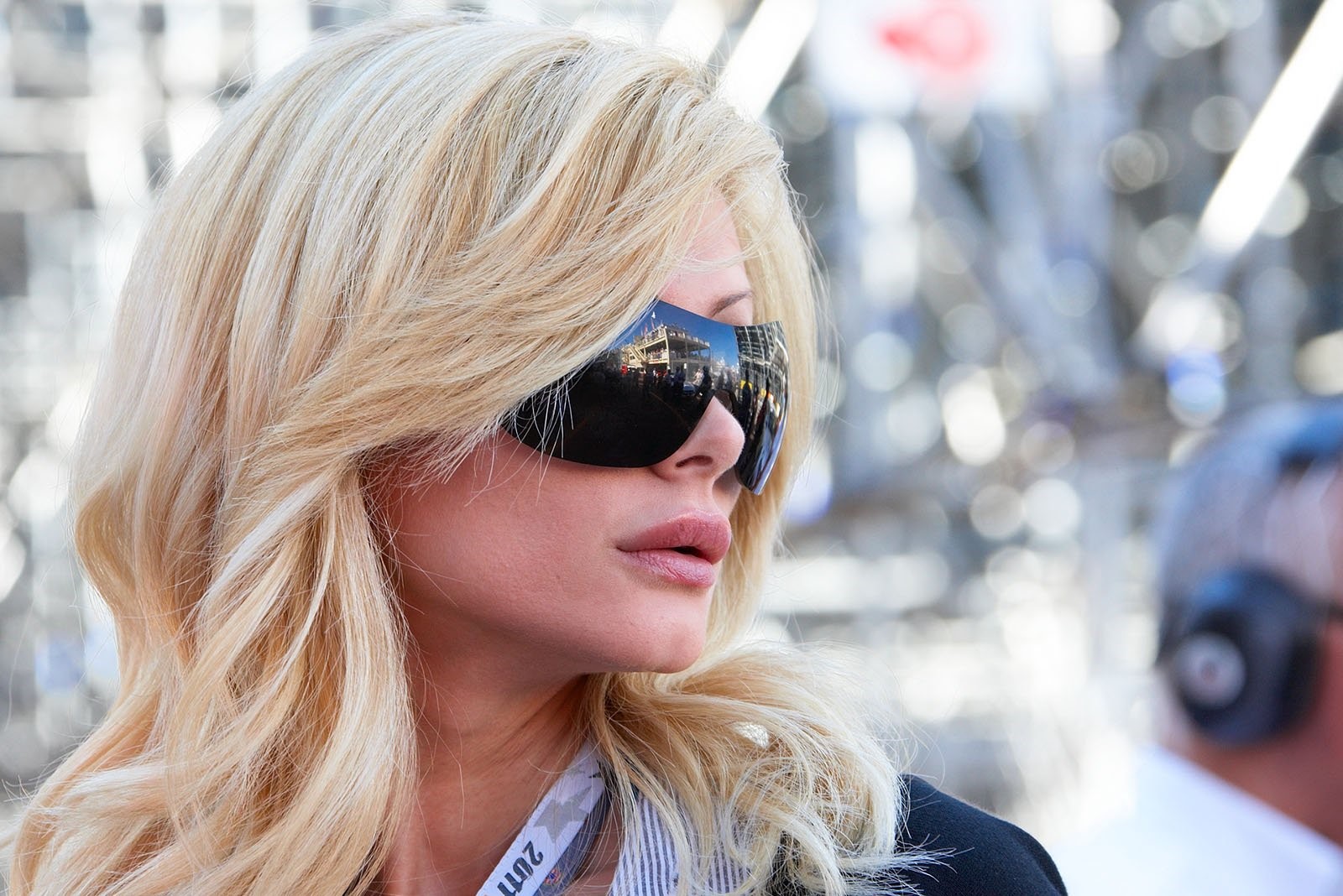
Monte Carlo, 2011. Photo by Rainer Schlegelmilch.
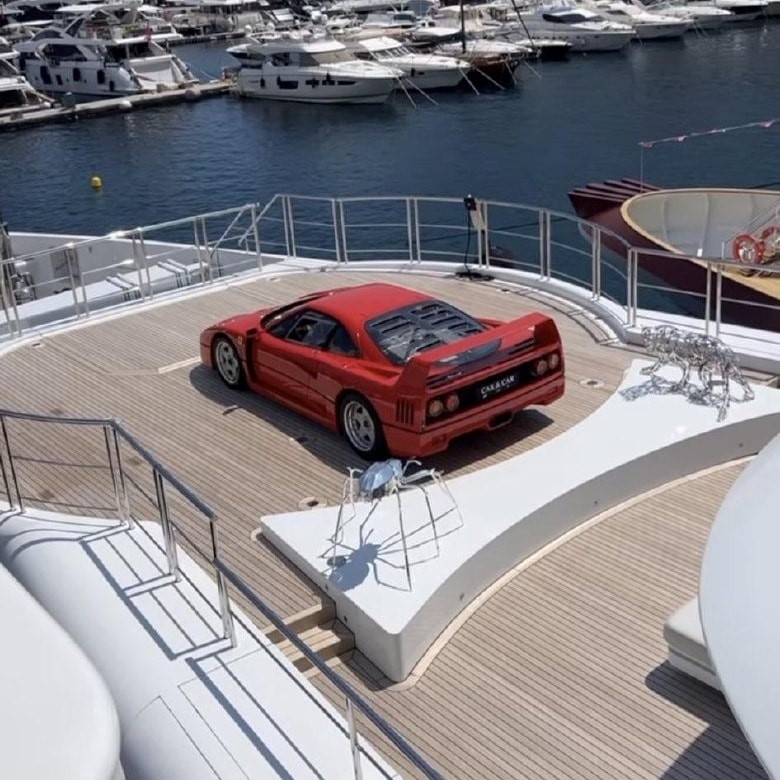
Sobriety in Monaco: a Ferrari F40 parked… on a boat.
The track passes through the heart of Monte Carlo, along the narrow and twisting streets and right in front of the Monte Carlo Casino.
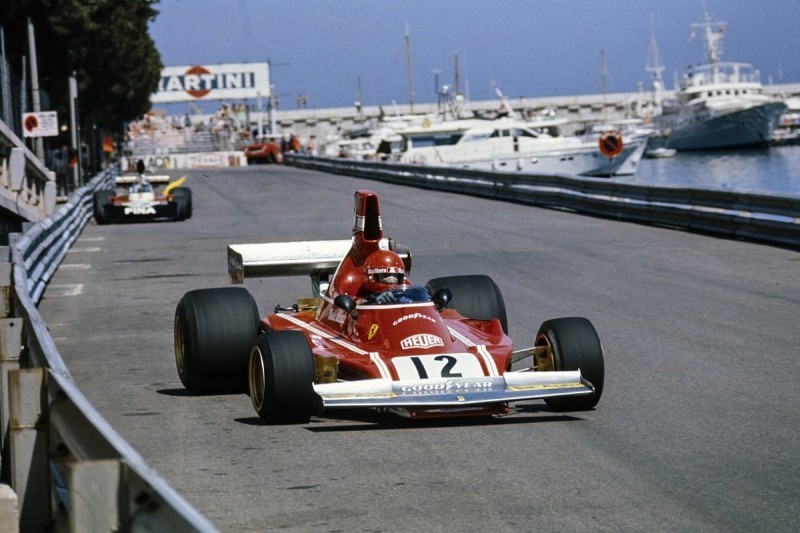
Drivers must change gear a staggering 54 times per lap at Monaco, meaning more than 4,200 gear changes over the course of the race. It is a truly unique race course.
It’s easy to understand why Brazilian F1 champion Nelson Piquet once declared that “a win here was worth two anywhere else”.
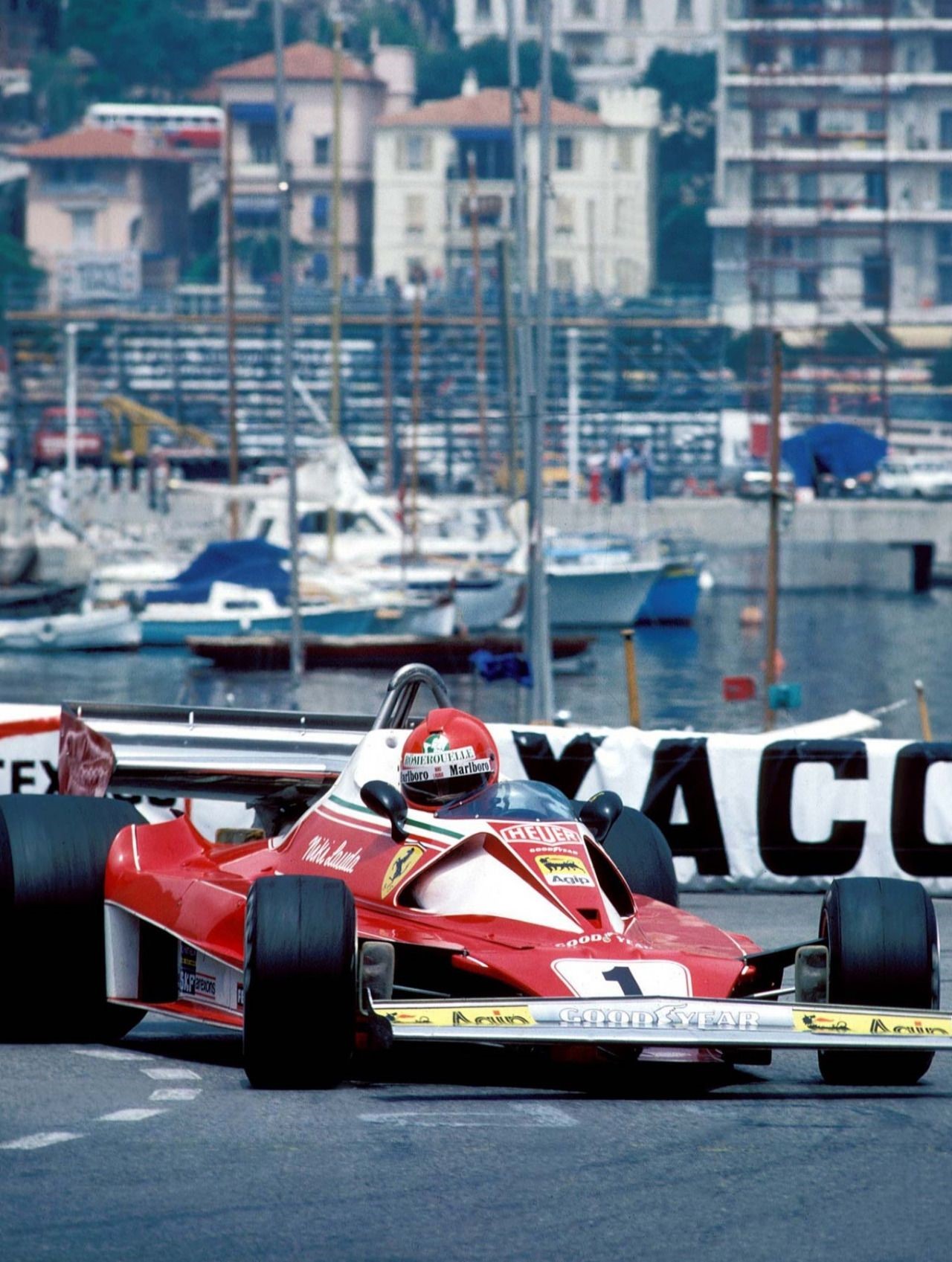
Niki Lauda, Ferrari 312 T2, 1976 Monaco GP, Monte Carlo.
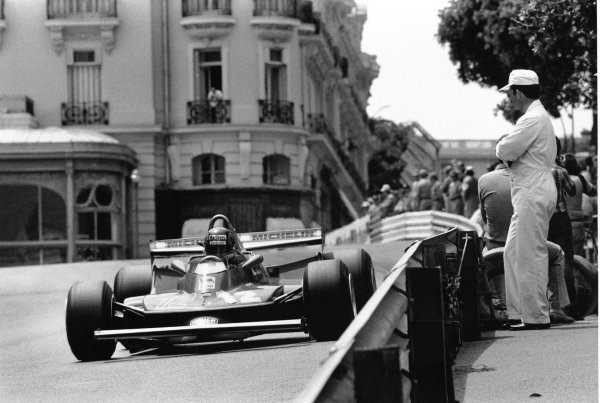
Gilles Villeneuve at Monaco GP in 1979.
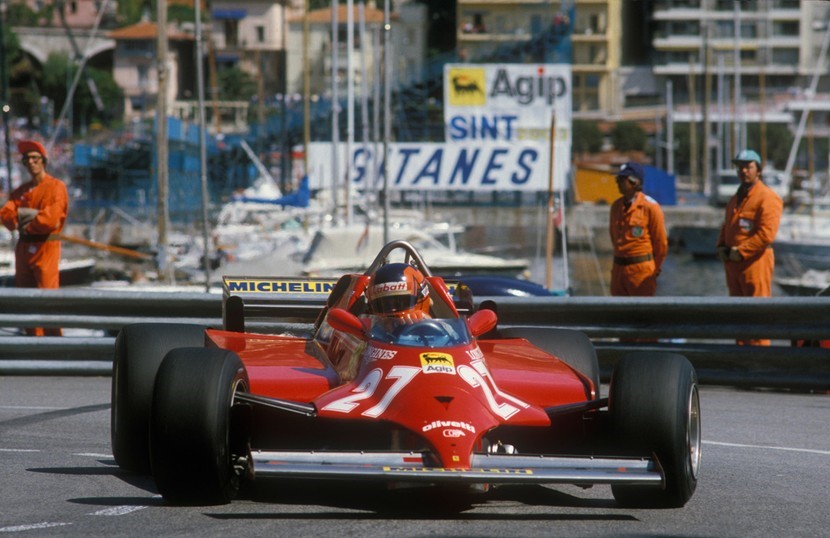
Gilles Villeneuve in Monaco in 1981, an unforgettable race. By Ferrari.
It is F1 at its most raw, the incredible skill of the drivers and performance of the cars forcing a recalibration of one's sense of the possible. And an experience not to be missed.
No other Grand Prix offers more spills and thrills. The infamous 1982 race saw five lead changes take place in the last two laps – making it possibly the most eventful finish in F1 history.
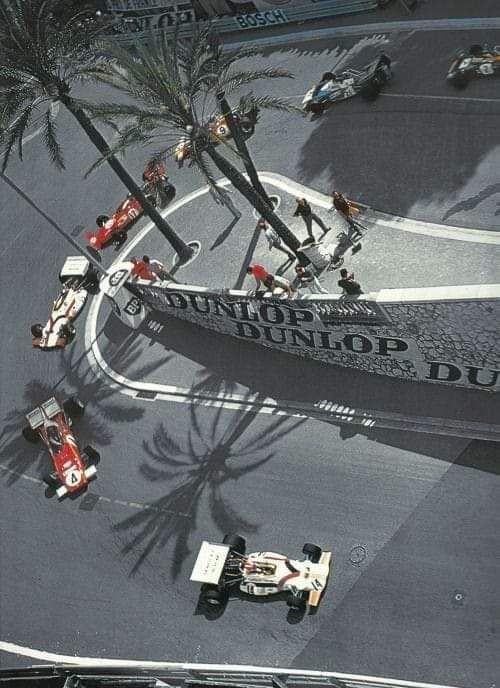
Monaco 1970s.
The sun glistens over a sparkling Mediterranean filled with super yachts. The stunning villas perch precariously over narrow streets.
It’s the jewel in the crown of the F1 season. Truly iconic and draped in history, Monaco has been the scene of remarkable races and some agonizing adversity.
With an intoxicating cocktail of sun, glamour, yachts and cars, the stands are packed to capacity with spectators every year.
It’s the race every F1 enthusiast wants to visit, but it’s also the race that every driver wants to win.
“There is no track like Monaco, it’s the highlight of the year,” said Renault’s Niko Hulkenberg. “It’s unique and special in every aspect and I massively look forward to it. It is probably the most glamorous Grand Prix on the calendar and there is no place like it to give you a buzz and a sensation of speed.”
The Circuit de Monaco gives the drivers no chance for respite as they make their way through the tight and tricky corners.
The opening lap traffic jam will need to content with Turn 1 – Sainte Devote – a 90-degree right-hand corner that has been the scene of many collisions.
From there, the cars have a rare opportunity to open the throttle through Beau Rivage before a challenging series of corners starting with the right-hand Mirabeau, the classic left Grand Hotel Hairpin turn and right-turn Portier leading to Formula 1’s only tunnel.
Coming out of the tunnel the drivers can briefly glimpse the yacht-lined portion of the track while they push through the chicane and pool sections and try to avoid the barriers.
“The best parts of the lap are the quick sections. The swimming pool is impressive because we carry so much speed and you have to be very precise on the kerbs. Casino is also very quick and with these cars will be quite a challenge. There’s no room for error so you need to be careful that the car doesn’t step out of line through these parts of the lap.” Lewis Hamilton said.
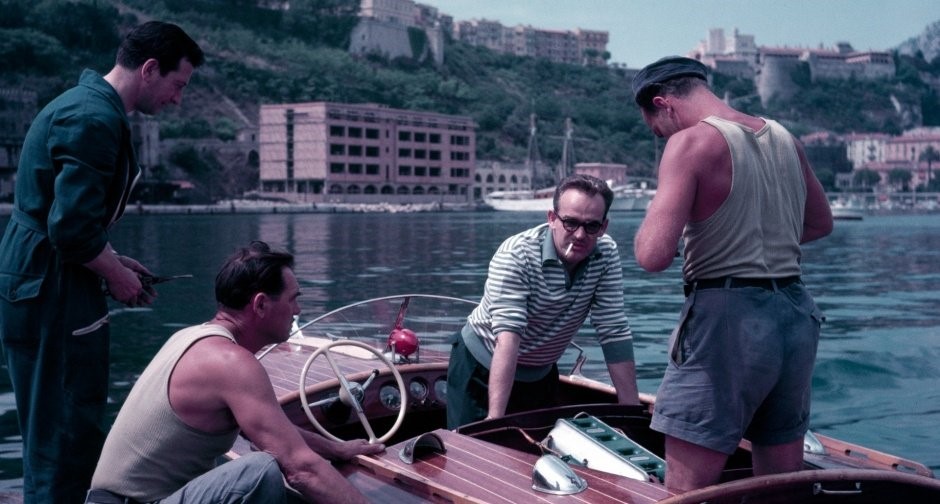
Prince Ranieri in Monaco in his boat. Photos: Popperfoto via Getty Images.
Snapshot, 1954: would you buy the catch of the day from these men? 17 May 2018.
It’s the spring of 1954 and it’s a lovely day for a fishing expedition. If there’s anyone who knows the best casting spots along the Bay of Monaco, it’s surely the principality’s prince — Rainier III…
With a traditional cigarette hanging from his lips — the man is known for smoking 60 cigarettes a day — the Prince of Monaco Rainier III takes a few hours out of his busy day to prepare his little wooden runabout for a summer on the Côte d’Azur. Reigning over a country that lies along the Mediterranean Sea, it’s fair to say that the prince has built up a sturdy set of sea legs over the years — just watch out for his ‘smoked’ catch of the day.
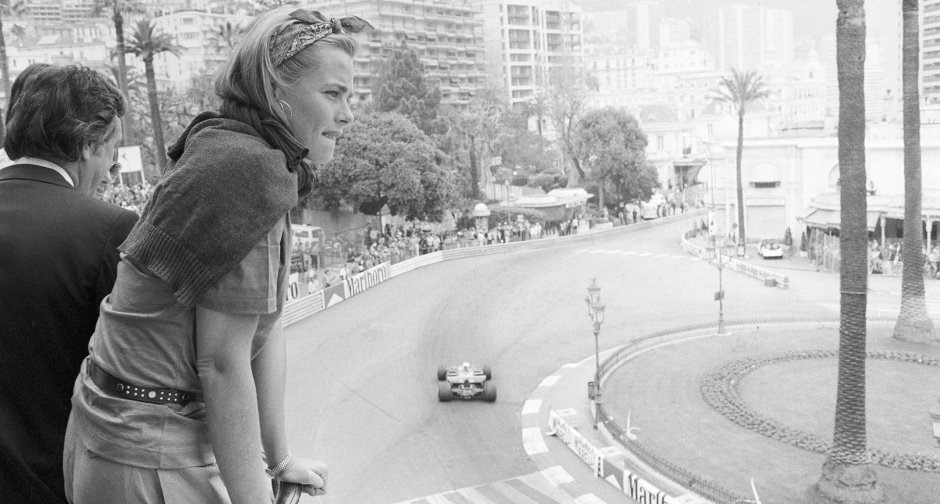
Photos: Jean-Claude Deutsch/Paris Match via Getty Images.
Snapshot, 1980: the Monaco Grand Prix is a real lip-biter. 12 May 2018.
It’s 18 May 1980 and the Monaco Grand Prix is well underway. A well-established event for the glamourous and beautiful Jet Set, Margaux Hemingway watches from the terrace of the Brazilian Consulate as the cars zip past…
After a crash at the start of the race — where Derek Daly collided with Bruno Giacomelli's Alfa Romeo 179, causing Daly's Tyrrell 010 to fly over Giacomelli and land between teammate Jean-Pierre Jarier and Alain Prost's McLaren M29 — every spectator was on edge with excitement and anticipation for the rest of the race, especially Margaux Hemingway, the beautiful and fun-loving granddaughter of famous writer Ernest Hemingway. Argentinian Carlos Reutemann will go on to win the race in his Williams FW07B — his 10th Formula 1 victory — and put Williams in the lead for the Constructors’ Championship.
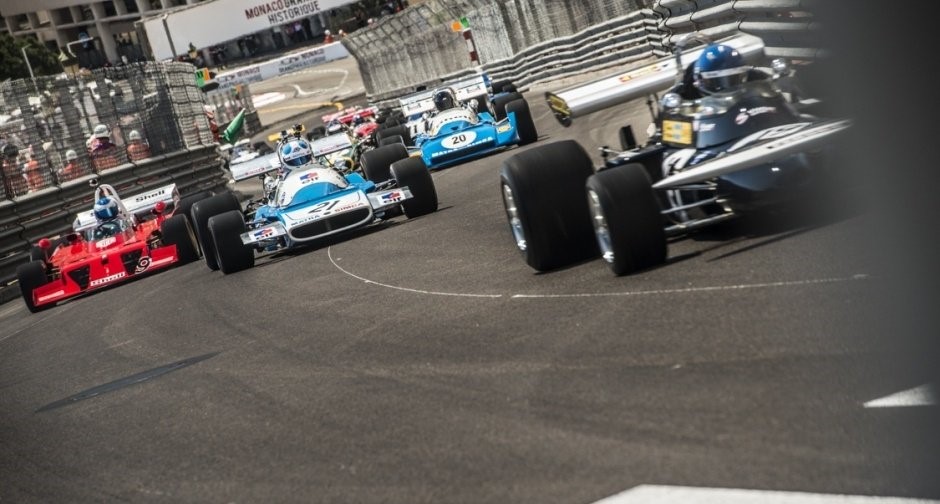
Grand Prix de Monaco Historique. 09 May 2018.
The 11th edition of the biennial Grand Prix de Monaco Historique will take place this weekend, briefly returning the glamorous principality to its former golden-era glory. We’re sending Monaco first-timer Alex Easthope to provide you with a play-by-play of all the action…
The thrill of it all
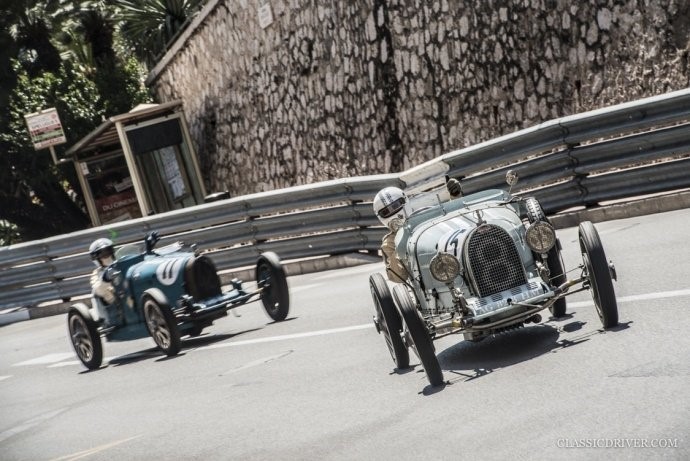
Photos: Rémi Dargegen for Classic Driver © 2018.
It’s said that there’s no greater thrill (or challenge) in contemporary motorsport than tackling the Monaco Grand Prix circuit in a competition car. And for those who aren’t able to make it on the grid, there’s no better place to watch the races than from the balcony of the Fairmont Hotel. Traditionally held biennially and two weeks before the modern F1 Grand Prix at the same locale, the Grand Prix de Monaco Historique sees the classic car world descend on the glamorous principality, at the invitation of the Automobile Club de Monaco (ACM), for some high-speed historic racing. This year, our very own Deputy Editor Alex Easthope will jump into the fray for the very first time and document the entire weekend — including all seven grids, ranging from pre-War Grand Prix cars to 1980 F1 Grand Prix cars — for all those who can’t make it to Monte-Carlo.
Videos
French Riviera
Saint Tropez
Monaco GP

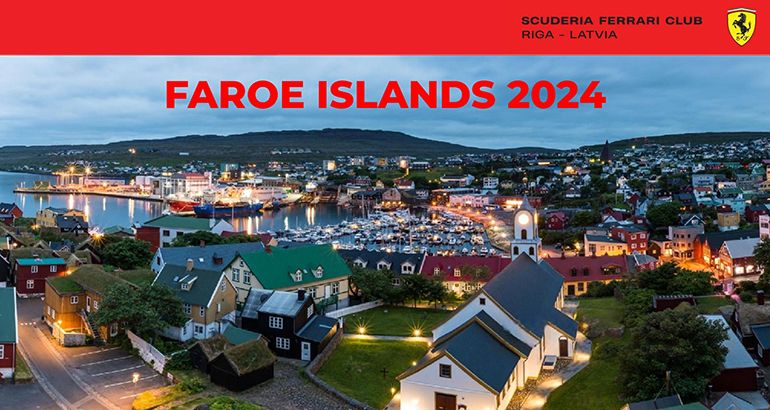
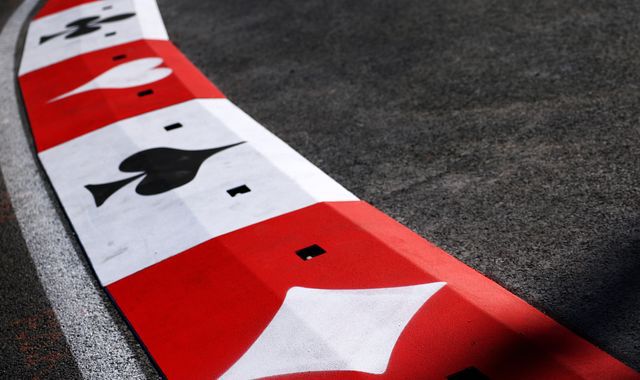
Comments
Authorize to comment